Quick filters:
Irregular cavalry Stock Photos and Images
 Arrival of a contingent force of Sikh Irregular Cavalry Stock Photohttps://www.alamy.com/image-license-details/?v=1https://www.alamy.com/arrival-of-a-contingent-force-of-sikh-irregular-cavalry-image560850384.html
Arrival of a contingent force of Sikh Irregular Cavalry Stock Photohttps://www.alamy.com/image-license-details/?v=1https://www.alamy.com/arrival-of-a-contingent-force-of-sikh-irregular-cavalry-image560850384.htmlRM2RGCXAT–Arrival of a contingent force of Sikh Irregular Cavalry
 Attack on Sealkote mutineers by General Nicholson's irregular cavalry, India, Asia, 1857 Stock Photohttps://www.alamy.com/image-license-details/?v=1https://www.alamy.com/attack-on-sealkote-mutineers-by-general-nicholsons-irregular-cavalry-india-asia-1857-image241327049.html
Attack on Sealkote mutineers by General Nicholson's irregular cavalry, India, Asia, 1857 Stock Photohttps://www.alamy.com/image-license-details/?v=1https://www.alamy.com/attack-on-sealkote-mutineers-by-general-nicholsons-irregular-cavalry-india-asia-1857-image241327049.htmlRMT0HB35–Attack on Sealkote mutineers by General Nicholson's irregular cavalry, India, Asia, 1857
 INDIA. Native officers of the Bengal irregular Cavalry c1880 old antique print Stock Photohttps://www.alamy.com/image-license-details/?v=1https://www.alamy.com/india-native-officers-of-the-bengal-irregular-cavalry-c1880-old-antique-print-image242601164.html
INDIA. Native officers of the Bengal irregular Cavalry c1880 old antique print Stock Photohttps://www.alamy.com/image-license-details/?v=1https://www.alamy.com/india-native-officers-of-the-bengal-irregular-cavalry-c1880-old-antique-print-image242601164.htmlRFT2KC78–INDIA. Native officers of the Bengal irregular Cavalry c1880 old antique print
 Regular and irregular cavalry at the British expedition to Abyssinia, illustration, 1868 Stock Photohttps://www.alamy.com/image-license-details/?v=1https://www.alamy.com/regular-and-irregular-cavalry-at-the-british-expedition-to-abyssinia-illustration-1868-image515785057.html
Regular and irregular cavalry at the British expedition to Abyssinia, illustration, 1868 Stock Photohttps://www.alamy.com/image-license-details/?v=1https://www.alamy.com/regular-and-irregular-cavalry-at-the-british-expedition-to-abyssinia-illustration-1868-image515785057.htmlRF2MY412W–Regular and irregular cavalry at the British expedition to Abyssinia, illustration, 1868
 INDIAN MUTINY. Arrival of Sikh Irregular Cavalry. British India, print 1858 Stock Photohttps://www.alamy.com/image-license-details/?v=1https://www.alamy.com/stock-photo-indian-mutiny-arrival-of-sikh-irregular-cavalry-british-india-print-114663208.html
INDIAN MUTINY. Arrival of Sikh Irregular Cavalry. British India, print 1858 Stock Photohttps://www.alamy.com/image-license-details/?v=1https://www.alamy.com/stock-photo-indian-mutiny-arrival-of-sikh-irregular-cavalry-british-india-print-114663208.htmlRFGJFA2G–INDIAN MUTINY. Arrival of Sikh Irregular Cavalry. British India, print 1858
 Native Office, Punjab Irregular Cavalry; Felice Beato, 1832 - 1909, India; 1858 - 1859; Albumen silver Stock Photohttps://www.alamy.com/image-license-details/?v=1https://www.alamy.com/native-office-punjab-irregular-cavalry-felice-beato-1832-1909-india-1858-1859-albumen-silver-image220678766.html
Native Office, Punjab Irregular Cavalry; Felice Beato, 1832 - 1909, India; 1858 - 1859; Albumen silver Stock Photohttps://www.alamy.com/image-license-details/?v=1https://www.alamy.com/native-office-punjab-irregular-cavalry-felice-beato-1832-1909-india-1858-1859-albumen-silver-image220678766.htmlRMPR0P0E–Native Office, Punjab Irregular Cavalry; Felice Beato, 1832 - 1909, India; 1858 - 1859; Albumen silver
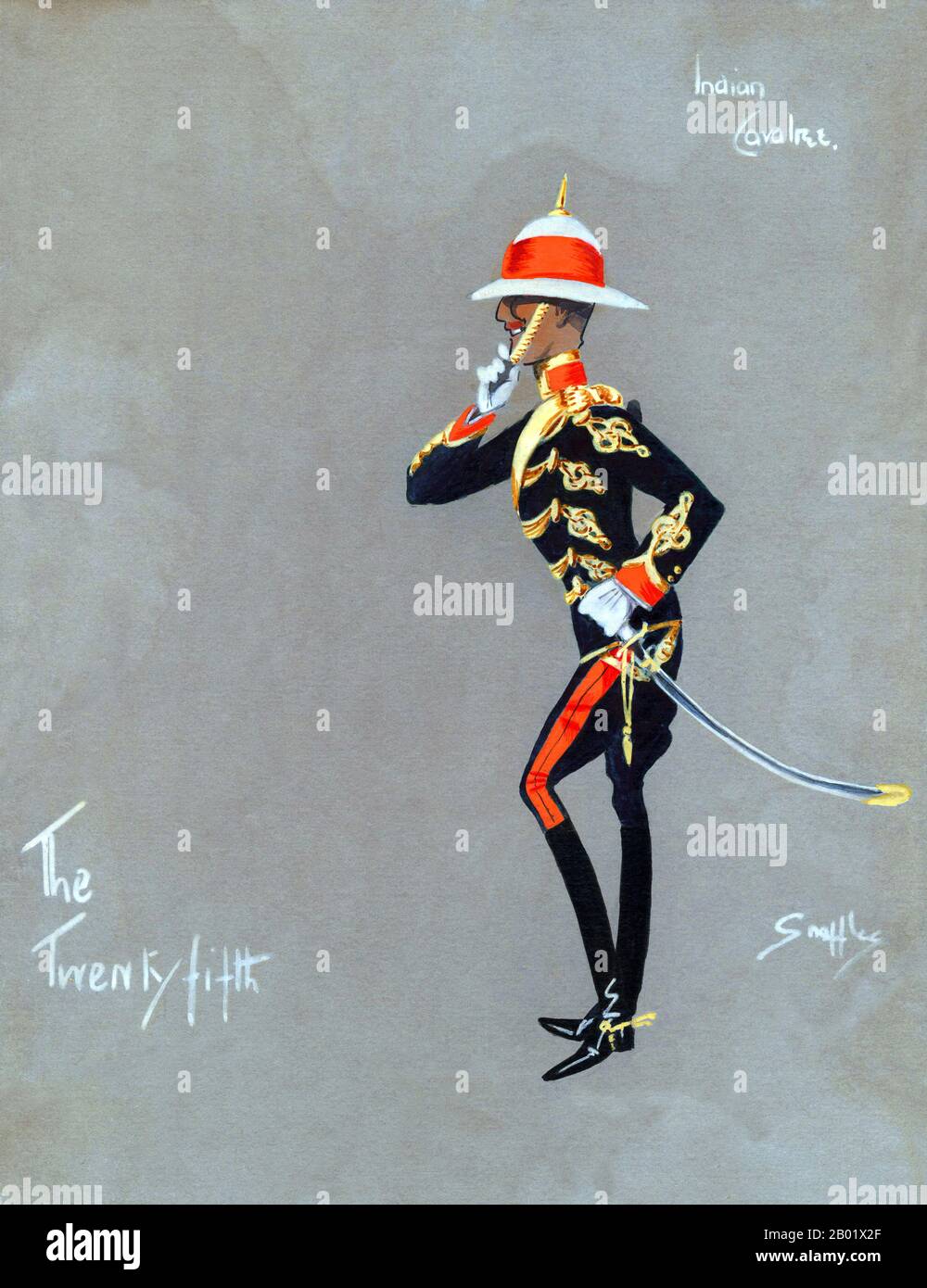 India: Indian 'Cavalree' officer of The Twenty-Fifth. Caricature style gouache painting by Charles 'Snaffles' Johnson Payne (1884-1967), 1910. The 25th Cavalry (Frontier Force) was raised by Captain Robert Fitzgerald as the 5th Punjab Irregular Cavalry at Multan in 1849. During the Indian Mutiny they were part of the besieging army at Delhi and took part in the Relief of Lucknow. One squadron fought at Bareilly, where two of its Indian officers won the Order of British India and nine other ranks received the Indian Order of Merit. Stock Photohttps://www.alamy.com/image-license-details/?v=1https://www.alamy.com/india-indian-cavalree-officer-of-the-twenty-fifth-caricature-style-gouache-painting-by-charles-snaffles-johnson-payne-1884-1967-1910-the-25th-cavalry-frontier-force-was-raised-by-captain-robert-fitzgerald-as-the-5th-punjab-irregular-cavalry-at-multan-in-1849-during-the-indian-mutiny-they-were-part-of-the-besieging-army-at-delhi-and-took-part-in-the-relief-of-lucknow-one-squadron-fought-at-bareilly-where-two-of-its-indian-officers-won-the-order-of-british-india-and-nine-other-ranks-received-the-indian-order-of-merit-image344249767.html
India: Indian 'Cavalree' officer of The Twenty-Fifth. Caricature style gouache painting by Charles 'Snaffles' Johnson Payne (1884-1967), 1910. The 25th Cavalry (Frontier Force) was raised by Captain Robert Fitzgerald as the 5th Punjab Irregular Cavalry at Multan in 1849. During the Indian Mutiny they were part of the besieging army at Delhi and took part in the Relief of Lucknow. One squadron fought at Bareilly, where two of its Indian officers won the Order of British India and nine other ranks received the Indian Order of Merit. Stock Photohttps://www.alamy.com/image-license-details/?v=1https://www.alamy.com/india-indian-cavalree-officer-of-the-twenty-fifth-caricature-style-gouache-painting-by-charles-snaffles-johnson-payne-1884-1967-1910-the-25th-cavalry-frontier-force-was-raised-by-captain-robert-fitzgerald-as-the-5th-punjab-irregular-cavalry-at-multan-in-1849-during-the-indian-mutiny-they-were-part-of-the-besieging-army-at-delhi-and-took-part-in-the-relief-of-lucknow-one-squadron-fought-at-bareilly-where-two-of-its-indian-officers-won-the-order-of-british-india-and-nine-other-ranks-received-the-indian-order-of-merit-image344249767.htmlRM2B01X2F–India: Indian 'Cavalree' officer of The Twenty-Fifth. Caricature style gouache painting by Charles 'Snaffles' Johnson Payne (1884-1967), 1910. The 25th Cavalry (Frontier Force) was raised by Captain Robert Fitzgerald as the 5th Punjab Irregular Cavalry at Multan in 1849. During the Indian Mutiny they were part of the besieging army at Delhi and took part in the Relief of Lucknow. One squadron fought at Bareilly, where two of its Indian officers won the Order of British India and nine other ranks received the Indian Order of Merit.
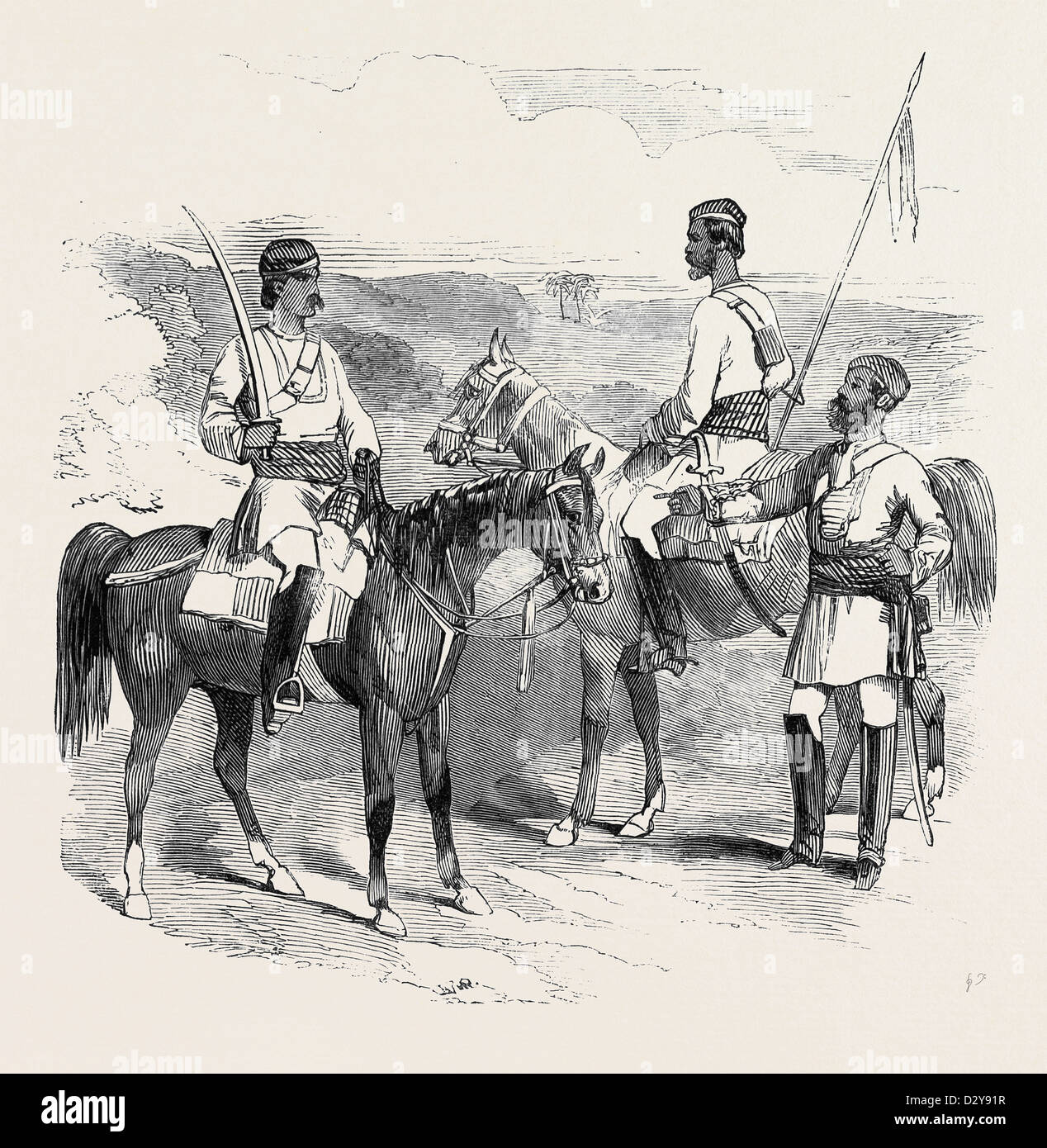 THE MUTINY IN INDIA: IRREGULAR CAVALRY OF THE BENGAL ARMY SKETCHED BY CAPTAIN G.F. ATKINSON BENGAL ENGINEERS Stock Photohttps://www.alamy.com/image-license-details/?v=1https://www.alamy.com/stock-photo-the-mutiny-in-india-irregular-cavalry-of-the-bengal-army-sketched-53460227.html
THE MUTINY IN INDIA: IRREGULAR CAVALRY OF THE BENGAL ARMY SKETCHED BY CAPTAIN G.F. ATKINSON BENGAL ENGINEERS Stock Photohttps://www.alamy.com/image-license-details/?v=1https://www.alamy.com/stock-photo-the-mutiny-in-india-irregular-cavalry-of-the-bengal-army-sketched-53460227.htmlRMD2Y91R–THE MUTINY IN INDIA: IRREGULAR CAVALRY OF THE BENGAL ARMY SKETCHED BY CAPTAIN G.F. ATKINSON BENGAL ENGINEERS
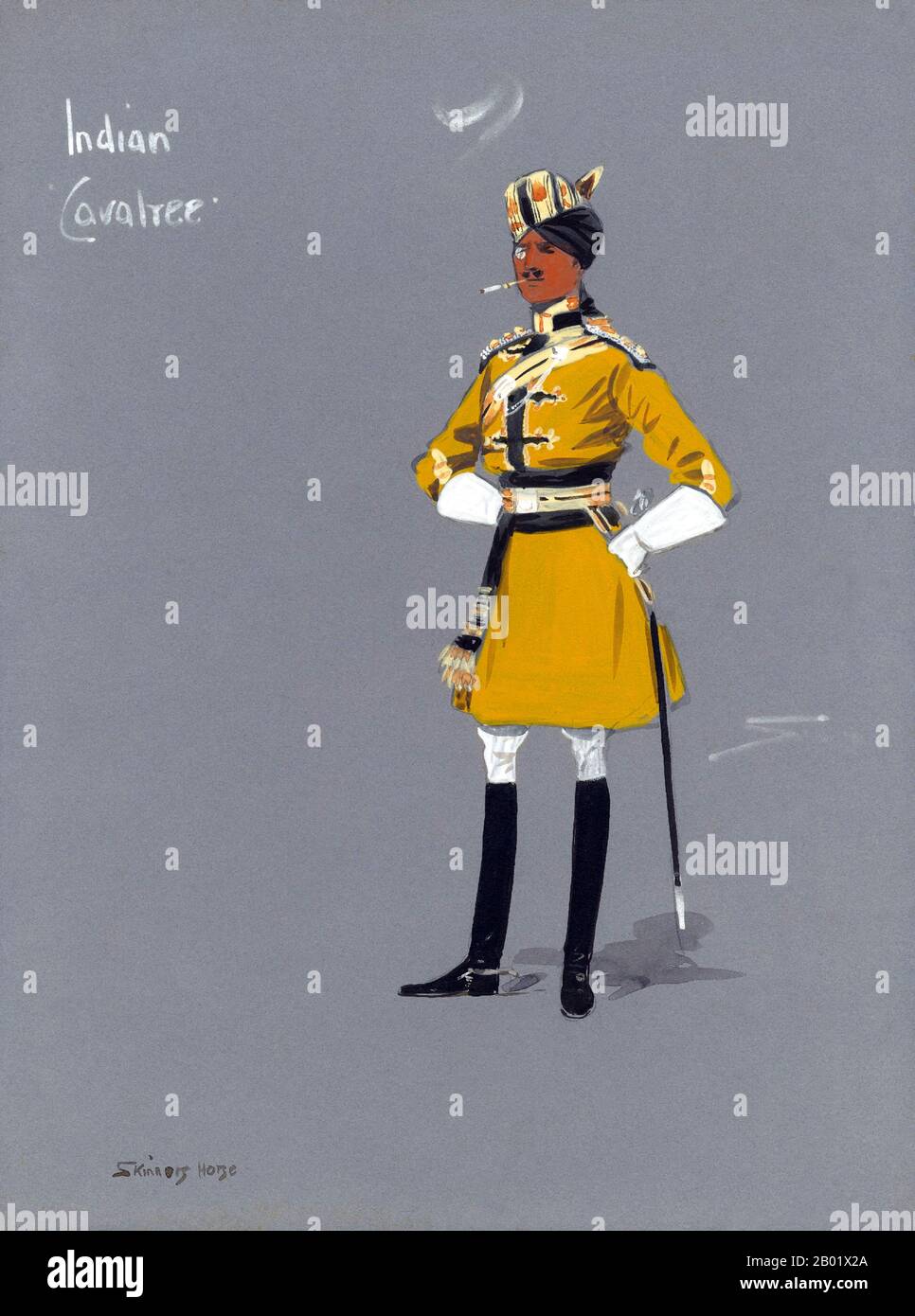 India: Indian 'Cavalree' officer of Skinner's Horse. Caricature style gouache painting by Charles 'Snaffles' Johnson Payne (1884-1967), 1910. The 1st Duke of York's Own Lancers (Skinner's Horse) was a unit of the British Indian Army from 1922 to independence and thereafter a unit of the Indian Army. Its foundation was when it was raised in 1803 as Skinner’s Horse by James Skinner (Sikander Sahib) as an irregular cavalry regiment in the service of the East India Company. The regiment became (and remains) one of the seniormost cavalry regiments of the Armoured Corps of the Indian Army. Stock Photohttps://www.alamy.com/image-license-details/?v=1https://www.alamy.com/india-indian-cavalree-officer-of-skinners-horse-caricature-style-gouache-painting-by-charles-snaffles-johnson-payne-1884-1967-1910-the-1st-duke-of-yorks-own-lancers-skinners-horse-was-a-unit-of-the-british-indian-army-from-1922-to-independence-and-thereafter-a-unit-of-the-indian-army-its-foundation-was-when-it-was-raised-in-1803-as-skinners-horse-by-james-skinner-sikander-sahib-as-an-irregular-cavalry-regiment-in-the-service-of-the-east-india-company-the-regiment-became-and-remains-one-of-the-seniormost-cavalry-regiments-of-the-armoured-corps-of-the-indian-army-image344249762.html
India: Indian 'Cavalree' officer of Skinner's Horse. Caricature style gouache painting by Charles 'Snaffles' Johnson Payne (1884-1967), 1910. The 1st Duke of York's Own Lancers (Skinner's Horse) was a unit of the British Indian Army from 1922 to independence and thereafter a unit of the Indian Army. Its foundation was when it was raised in 1803 as Skinner’s Horse by James Skinner (Sikander Sahib) as an irregular cavalry regiment in the service of the East India Company. The regiment became (and remains) one of the seniormost cavalry regiments of the Armoured Corps of the Indian Army. Stock Photohttps://www.alamy.com/image-license-details/?v=1https://www.alamy.com/india-indian-cavalree-officer-of-skinners-horse-caricature-style-gouache-painting-by-charles-snaffles-johnson-payne-1884-1967-1910-the-1st-duke-of-yorks-own-lancers-skinners-horse-was-a-unit-of-the-british-indian-army-from-1922-to-independence-and-thereafter-a-unit-of-the-indian-army-its-foundation-was-when-it-was-raised-in-1803-as-skinners-horse-by-james-skinner-sikander-sahib-as-an-irregular-cavalry-regiment-in-the-service-of-the-east-india-company-the-regiment-became-and-remains-one-of-the-seniormost-cavalry-regiments-of-the-armoured-corps-of-the-indian-army-image344249762.htmlRM2B01X2A–India: Indian 'Cavalree' officer of Skinner's Horse. Caricature style gouache painting by Charles 'Snaffles' Johnson Payne (1884-1967), 1910. The 1st Duke of York's Own Lancers (Skinner's Horse) was a unit of the British Indian Army from 1922 to independence and thereafter a unit of the Indian Army. Its foundation was when it was raised in 1803 as Skinner’s Horse by James Skinner (Sikander Sahib) as an irregular cavalry regiment in the service of the East India Company. The regiment became (and remains) one of the seniormost cavalry regiments of the Armoured Corps of the Indian Army.
 The Mutiny in India: Irregular Cavalry of the Bengal Army Stock Photohttps://www.alamy.com/image-license-details/?v=1https://www.alamy.com/the-mutiny-in-india-irregular-cavalry-of-the-bengal-army-image240509336.html
The Mutiny in India: Irregular Cavalry of the Bengal Army Stock Photohttps://www.alamy.com/image-license-details/?v=1https://www.alamy.com/the-mutiny-in-india-irregular-cavalry-of-the-bengal-army-image240509336.htmlRMRY8434–The Mutiny in India: Irregular Cavalry of the Bengal Army
 India: 'Kala in Uniform'. Watercolour painting, Delhi, c.1815-1816. East India Company painting commissioned by the brothers James and William Fraser in around 1815. This one shows William Fraser's servant, Kala, in his uniform as a member of Skinner's Horse. The irregular cavalry regiment known as Skinner’s Horse was headed by James Skinner, with Fraser as his second in command. The regiment was raised in 1803 as Skinner’s Horse by James Skinner (Sikander Sahib) as an irregular cavalry regiment in the service of the East India Company. Stock Photohttps://www.alamy.com/image-license-details/?v=1https://www.alamy.com/india-kala-in-uniform-watercolour-painting-delhi-c1815-1816-east-india-company-painting-commissioned-by-the-brothers-james-and-william-fraser-in-around-1815-this-one-shows-william-frasers-servant-kala-in-his-uniform-as-a-member-of-skinners-horse-the-irregular-cavalry-regiment-known-as-skinners-horse-was-headed-by-james-skinner-with-fraser-as-his-second-in-command-the-regiment-was-raised-in-1803-as-skinners-horse-by-james-skinner-sikander-sahib-as-an-irregular-cavalry-regiment-in-the-service-of-the-east-india-company-image344232291.html
India: 'Kala in Uniform'. Watercolour painting, Delhi, c.1815-1816. East India Company painting commissioned by the brothers James and William Fraser in around 1815. This one shows William Fraser's servant, Kala, in his uniform as a member of Skinner's Horse. The irregular cavalry regiment known as Skinner’s Horse was headed by James Skinner, with Fraser as his second in command. The regiment was raised in 1803 as Skinner’s Horse by James Skinner (Sikander Sahib) as an irregular cavalry regiment in the service of the East India Company. Stock Photohttps://www.alamy.com/image-license-details/?v=1https://www.alamy.com/india-kala-in-uniform-watercolour-painting-delhi-c1815-1816-east-india-company-painting-commissioned-by-the-brothers-james-and-william-fraser-in-around-1815-this-one-shows-william-frasers-servant-kala-in-his-uniform-as-a-member-of-skinners-horse-the-irregular-cavalry-regiment-known-as-skinners-horse-was-headed-by-james-skinner-with-fraser-as-his-second-in-command-the-regiment-was-raised-in-1803-as-skinners-horse-by-james-skinner-sikander-sahib-as-an-irregular-cavalry-regiment-in-the-service-of-the-east-india-company-image344232291.htmlRM2B013PB–India: 'Kala in Uniform'. Watercolour painting, Delhi, c.1815-1816. East India Company painting commissioned by the brothers James and William Fraser in around 1815. This one shows William Fraser's servant, Kala, in his uniform as a member of Skinner's Horse. The irregular cavalry regiment known as Skinner’s Horse was headed by James Skinner, with Fraser as his second in command. The regiment was raised in 1803 as Skinner’s Horse by James Skinner (Sikander Sahib) as an irregular cavalry regiment in the service of the East India Company.
 Attack on the Sealkote mutineers by General Nicholson's irregular cavalry. Stock Photohttps://www.alamy.com/image-license-details/?v=1https://www.alamy.com/stock-photo-attack-on-the-sealkote-mutineers-by-general-nicholsons-irregular-cavalry-11251458.html
Attack on the Sealkote mutineers by General Nicholson's irregular cavalry. Stock Photohttps://www.alamy.com/image-license-details/?v=1https://www.alamy.com/stock-photo-attack-on-the-sealkote-mutineers-by-general-nicholsons-irregular-cavalry-11251458.htmlRMA5AH4K–Attack on the Sealkote mutineers by General Nicholson's irregular cavalry.
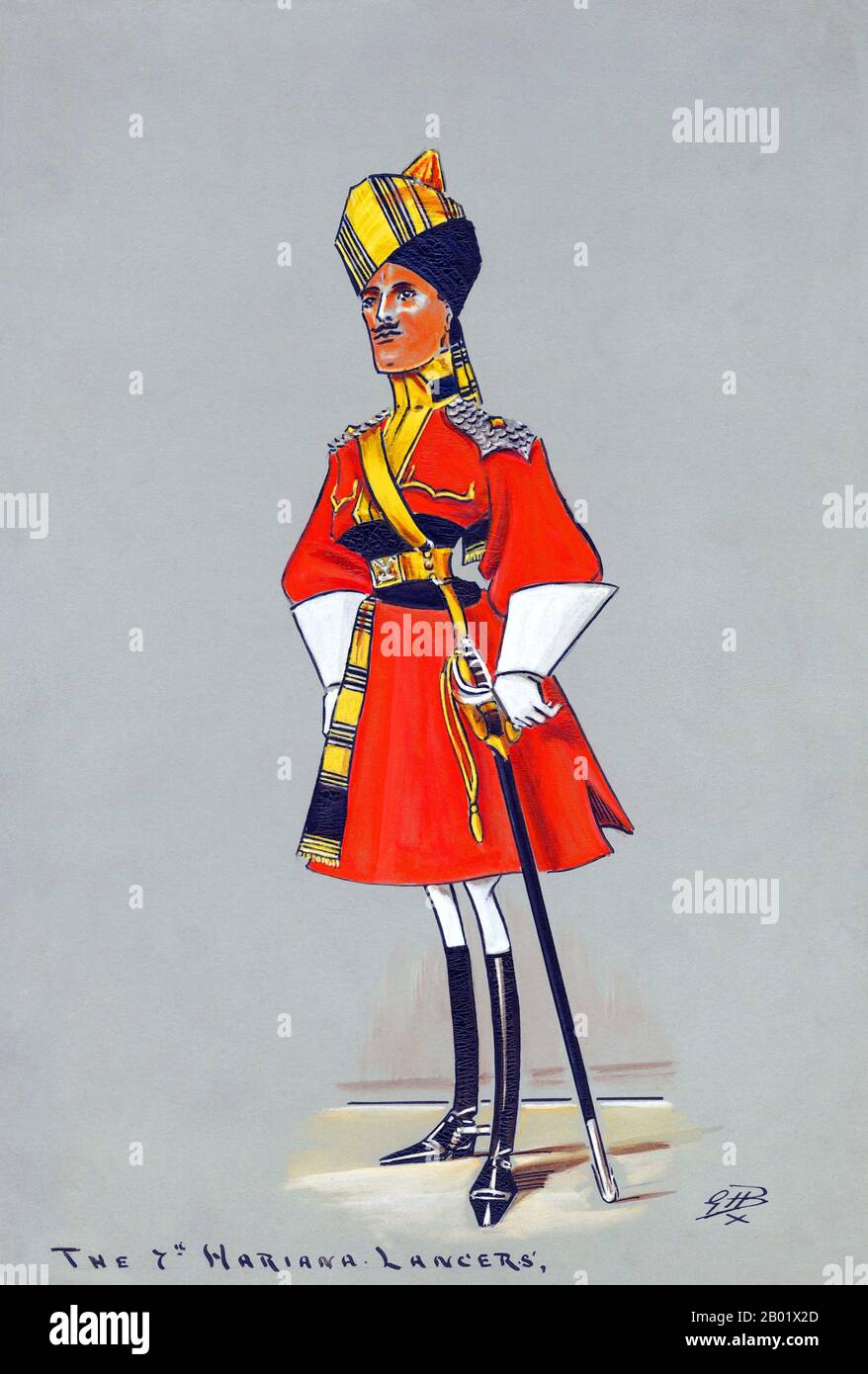 India: Officer of the 7th Hariana Lancers. Caricature style gouache painting by Godfrey Herbert Brennan (1875-1948), 1909. The 7th Hariana Lancers was formed in 1846 as a regiment of Bengal Irregular Cavalry raised in Meerut and Cawnpore by Captain Liptrott. The Regiment was raised after the First Sikh War in anticipation of the Second War starting. When the Second Sikh War broke out, they did not become involved in any engagements but found themselves in the reserve force. In 1857 when the Indian Rebellion broke out they were stationed on the North West Frontier and remained loyal. Stock Photohttps://www.alamy.com/image-license-details/?v=1https://www.alamy.com/india-officer-of-the-7th-hariana-lancers-caricature-style-gouache-painting-by-godfrey-herbert-brennan-1875-1948-1909-the-7th-hariana-lancers-was-formed-in-1846-as-a-regiment-of-bengal-irregular-cavalry-raised-in-meerut-and-cawnpore-by-captain-liptrott-the-regiment-was-raised-after-the-first-sikh-war-in-anticipation-of-the-second-war-starting-when-the-second-sikh-war-broke-out-they-did-not-become-involved-in-any-engagements-but-found-themselves-in-the-reserve-force-in-1857-when-the-indian-rebellion-broke-out-they-were-stationed-on-the-north-west-frontier-and-remained-loyal-image344249765.html
India: Officer of the 7th Hariana Lancers. Caricature style gouache painting by Godfrey Herbert Brennan (1875-1948), 1909. The 7th Hariana Lancers was formed in 1846 as a regiment of Bengal Irregular Cavalry raised in Meerut and Cawnpore by Captain Liptrott. The Regiment was raised after the First Sikh War in anticipation of the Second War starting. When the Second Sikh War broke out, they did not become involved in any engagements but found themselves in the reserve force. In 1857 when the Indian Rebellion broke out they were stationed on the North West Frontier and remained loyal. Stock Photohttps://www.alamy.com/image-license-details/?v=1https://www.alamy.com/india-officer-of-the-7th-hariana-lancers-caricature-style-gouache-painting-by-godfrey-herbert-brennan-1875-1948-1909-the-7th-hariana-lancers-was-formed-in-1846-as-a-regiment-of-bengal-irregular-cavalry-raised-in-meerut-and-cawnpore-by-captain-liptrott-the-regiment-was-raised-after-the-first-sikh-war-in-anticipation-of-the-second-war-starting-when-the-second-sikh-war-broke-out-they-did-not-become-involved-in-any-engagements-but-found-themselves-in-the-reserve-force-in-1857-when-the-indian-rebellion-broke-out-they-were-stationed-on-the-north-west-frontier-and-remained-loyal-image344249765.htmlRM2B01X2D–India: Officer of the 7th Hariana Lancers. Caricature style gouache painting by Godfrey Herbert Brennan (1875-1948), 1909. The 7th Hariana Lancers was formed in 1846 as a regiment of Bengal Irregular Cavalry raised in Meerut and Cawnpore by Captain Liptrott. The Regiment was raised after the First Sikh War in anticipation of the Second War starting. When the Second Sikh War broke out, they did not become involved in any engagements but found themselves in the reserve force. In 1857 when the Indian Rebellion broke out they were stationed on the North West Frontier and remained loyal.
 WELD 1862 in India pg214 (049 Irregular Cavalry of the Hyderabad Contingent, Mounted) Stock Photohttps://www.alamy.com/image-license-details/?v=1https://www.alamy.com/stock-photo-weld-1862-in-india-pg214-049-irregular-cavalry-of-the-hyderabad-contingent-74228203.html
WELD 1862 in India pg214 (049 Irregular Cavalry of the Hyderabad Contingent, Mounted) Stock Photohttps://www.alamy.com/image-license-details/?v=1https://www.alamy.com/stock-photo-weld-1862-in-india-pg214-049-irregular-cavalry-of-the-hyderabad-contingent-74228203.htmlRME8NAR7–WELD 1862 in India pg214 (049 Irregular Cavalry of the Hyderabad Contingent, Mounted)
 'Irregular Cavalry, Bengal Army 1817' (1819). Artist: Havell & Son Stock Photohttps://www.alamy.com/image-license-details/?v=1https://www.alamy.com/irregular-cavalry-bengal-army-1817-1819-artist-havell-son-image60210410.html
'Irregular Cavalry, Bengal Army 1817' (1819). Artist: Havell & Son Stock Photohttps://www.alamy.com/image-license-details/?v=1https://www.alamy.com/irregular-cavalry-bengal-army-1817-1819-artist-havell-son-image60210410.htmlRMDDXPYP–'Irregular Cavalry, Bengal Army 1817' (1819). Artist: Havell & Son
 Disarming the 11th Irregular Cavalry at Berhampore Stock Photohttps://www.alamy.com/image-license-details/?v=1https://www.alamy.com/stock-photo-disarming-the-11th-irregular-cavalry-at-berhampore-139779450.html
Disarming the 11th Irregular Cavalry at Berhampore Stock Photohttps://www.alamy.com/image-license-details/?v=1https://www.alamy.com/stock-photo-disarming-the-11th-irregular-cavalry-at-berhampore-139779450.htmlRMJ3BE36–Disarming the 11th Irregular Cavalry at Berhampore
 The 1st Horse (Skinner's Horse) is a cavalry regiment of the Indian Army, which served in the British Indian Army before independence. The regiment was raised in 1803 as Skinner’s Horse by James Skinner ('Sikander Sahib') as an irregular cavalry regiment in the service of the East India Company. It was later renamed the 1st Bengal Lancers. The regiment became (and remains) one of the seniormost cavalry regiments of the Armoured Corps of the Indian Army. A second regiment of Indian Cavalry was raised by Colonel James Skinner in 1814, which became the 3rd Skinner's Horse. On the reduction of th Stock Photohttps://www.alamy.com/image-license-details/?v=1https://www.alamy.com/the-1st-horse-skinners-horse-is-a-cavalry-regiment-of-the-indian-army-which-served-in-the-british-indian-army-before-independence-the-regiment-was-raised-in-1803-as-skinners-horse-by-james-skinner-sikander-sahib-as-an-irregular-cavalry-regiment-in-the-service-of-the-east-india-company-it-was-later-renamed-the-1st-bengal-lancers-the-regiment-became-and-remains-one-of-the-seniormost-cavalry-regiments-of-the-armoured-corps-of-the-indian-army-a-second-regiment-of-indian-cavalry-was-raised-by-colonel-james-skinner-in-1814-which-became-the-3rd-skinners-horse-on-the-reduction-of-th-image344274423.html
The 1st Horse (Skinner's Horse) is a cavalry regiment of the Indian Army, which served in the British Indian Army before independence. The regiment was raised in 1803 as Skinner’s Horse by James Skinner ('Sikander Sahib') as an irregular cavalry regiment in the service of the East India Company. It was later renamed the 1st Bengal Lancers. The regiment became (and remains) one of the seniormost cavalry regiments of the Armoured Corps of the Indian Army. A second regiment of Indian Cavalry was raised by Colonel James Skinner in 1814, which became the 3rd Skinner's Horse. On the reduction of th Stock Photohttps://www.alamy.com/image-license-details/?v=1https://www.alamy.com/the-1st-horse-skinners-horse-is-a-cavalry-regiment-of-the-indian-army-which-served-in-the-british-indian-army-before-independence-the-regiment-was-raised-in-1803-as-skinners-horse-by-james-skinner-sikander-sahib-as-an-irregular-cavalry-regiment-in-the-service-of-the-east-india-company-it-was-later-renamed-the-1st-bengal-lancers-the-regiment-became-and-remains-one-of-the-seniormost-cavalry-regiments-of-the-armoured-corps-of-the-indian-army-a-second-regiment-of-indian-cavalry-was-raised-by-colonel-james-skinner-in-1814-which-became-the-3rd-skinners-horse-on-the-reduction-of-th-image344274423.htmlRM2B031F3–The 1st Horse (Skinner's Horse) is a cavalry regiment of the Indian Army, which served in the British Indian Army before independence. The regiment was raised in 1803 as Skinner’s Horse by James Skinner ('Sikander Sahib') as an irregular cavalry regiment in the service of the East India Company. It was later renamed the 1st Bengal Lancers. The regiment became (and remains) one of the seniormost cavalry regiments of the Armoured Corps of the Indian Army. A second regiment of Indian Cavalry was raised by Colonel James Skinner in 1814, which became the 3rd Skinner's Horse. On the reduction of th
 Disarming the 11th Irregular Cavalry at Berhampore. Stock Photohttps://www.alamy.com/image-license-details/?v=1https://www.alamy.com/disarming-the-11th-irregular-cavalry-at-berhampore-image264423540.html
Disarming the 11th Irregular Cavalry at Berhampore. Stock Photohttps://www.alamy.com/image-license-details/?v=1https://www.alamy.com/disarming-the-11th-irregular-cavalry-at-berhampore-image264423540.htmlRMWA5EWT–Disarming the 11th Irregular Cavalry at Berhampore.
 164 Disarming the 11th Irregular Cavalry at Berhampore Stock Photohttps://www.alamy.com/image-license-details/?v=1https://www.alamy.com/164-disarming-the-11th-irregular-cavalry-at-berhampore-image213884507.html
164 Disarming the 11th Irregular Cavalry at Berhampore Stock Photohttps://www.alamy.com/image-license-details/?v=1https://www.alamy.com/164-disarming-the-11th-irregular-cavalry-at-berhampore-image213884507.htmlRMPBY7TB–164 Disarming the 11th Irregular Cavalry at Berhampore
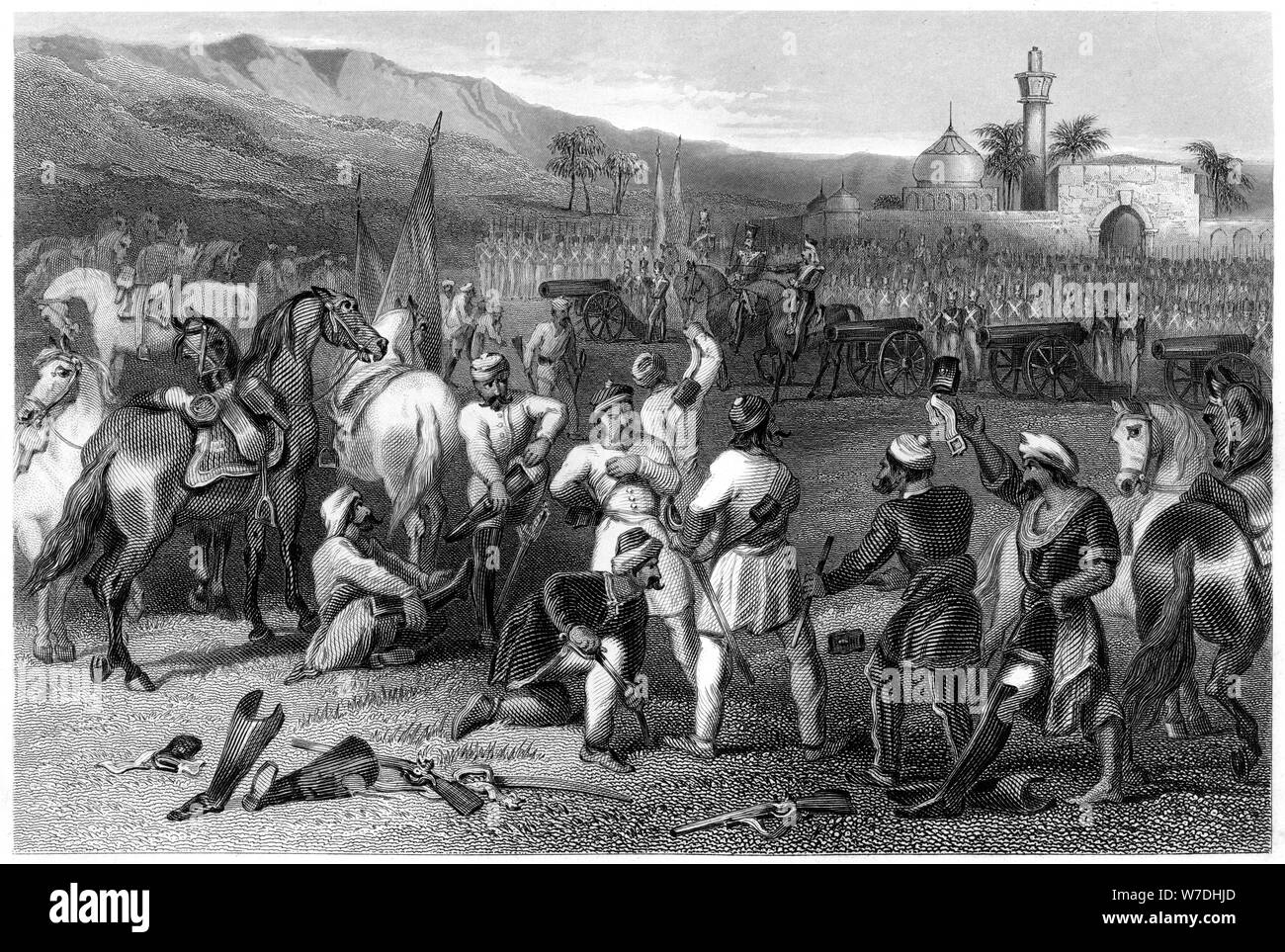 'Disarming the 11th Irregular Cavalry at Berhampore', 1857, (c1860). Artist: Unknown Stock Photohttps://www.alamy.com/image-license-details/?v=1https://www.alamy.com/disarming-the-11th-irregular-cavalry-at-berhampore-1857-c1860-artist-unknown-image262757333.html
'Disarming the 11th Irregular Cavalry at Berhampore', 1857, (c1860). Artist: Unknown Stock Photohttps://www.alamy.com/image-license-details/?v=1https://www.alamy.com/disarming-the-11th-irregular-cavalry-at-berhampore-1857-c1860-artist-unknown-image262757333.htmlRMW7DHJD–'Disarming the 11th Irregular Cavalry at Berhampore', 1857, (c1860). Artist: Unknown
 Disarming 11th Irregular Cavalry, Berhampore, India, Asia, 1857, old vintage 1800s engraving Stock Photohttps://www.alamy.com/image-license-details/?v=1https://www.alamy.com/disarming-11th-irregular-cavalry-berhampore-india-asia-1857-old-vintage-1800s-engraving-image241327081.html
Disarming 11th Irregular Cavalry, Berhampore, India, Asia, 1857, old vintage 1800s engraving Stock Photohttps://www.alamy.com/image-license-details/?v=1https://www.alamy.com/disarming-11th-irregular-cavalry-berhampore-india-asia-1857-old-vintage-1800s-engraving-image241327081.htmlRMT0HB49–Disarming 11th Irregular Cavalry, Berhampore, India, Asia, 1857, old vintage 1800s engraving
 17TH REGIMENT BENGAL IRREGULAR CAVALRY, 1850 Stock Photohttps://www.alamy.com/image-license-details/?v=1https://www.alamy.com/17th-regiment-bengal-irregular-cavalry-1850-image259867808.html
17TH REGIMENT BENGAL IRREGULAR CAVALRY, 1850 Stock Photohttps://www.alamy.com/image-license-details/?v=1https://www.alamy.com/17th-regiment-bengal-irregular-cavalry-1850-image259867808.htmlRMW2P014–17TH REGIMENT BENGAL IRREGULAR CAVALRY, 1850
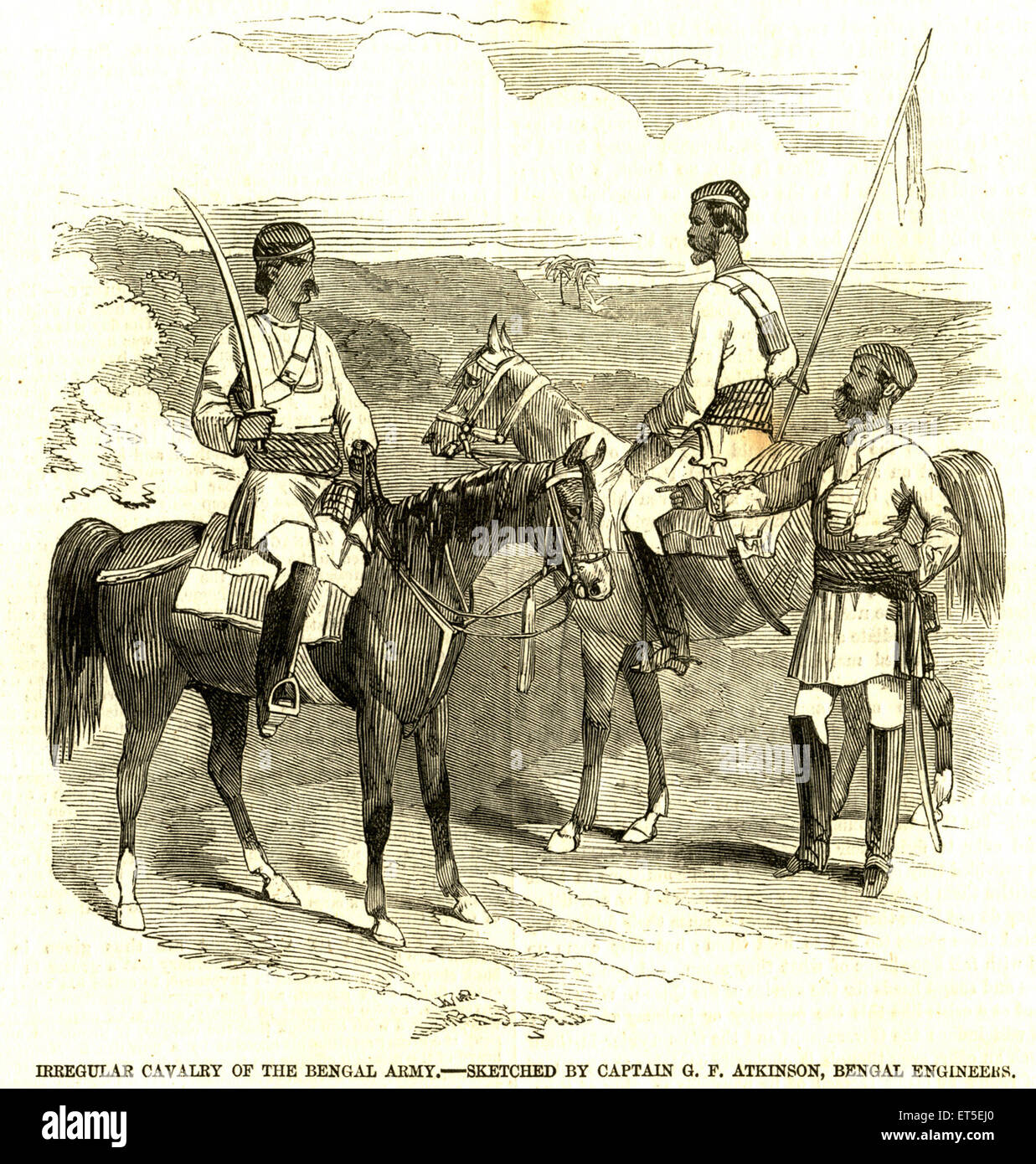 Military and munity mutiny views irregular cavalry of Bengal army ; India Stock Photohttps://www.alamy.com/image-license-details/?v=1https://www.alamy.com/stock-photo-military-and-munity-mutiny-views-irregular-cavalry-of-bengal-army-83714456.html
Military and munity mutiny views irregular cavalry of Bengal army ; India Stock Photohttps://www.alamy.com/image-license-details/?v=1https://www.alamy.com/stock-photo-military-and-munity-mutiny-views-irregular-cavalry-of-bengal-army-83714456.htmlRMET5EJ0–Military and munity mutiny views irregular cavalry of Bengal army ; India
 An old engraving of the massacre of Bulgarians in Batak, Bulgaria by Ottoman irregular cavalry troops in 1876 at the start of the Bulgarian ‘April Uprising’. It is from a Victorian history book of c.1900. The estimate for the number of casualties ranges from 1,200 to 8,000. The event caused a public outcry across Europe, mobilised ordinary people and famous intellectuals to demand a reform of the Ottoman model of governance of the Bulgarian lands, and eventually led to the re-establishment of a separate Bulgarian state in 1878. Stock Photohttps://www.alamy.com/image-license-details/?v=1https://www.alamy.com/an-old-engraving-of-the-massacre-of-bulgarians-in-batak-bulgaria-by-ottoman-irregular-cavalry-troops-in-1876-at-the-start-of-the-bulgarian-april-uprising-it-is-from-a-victorian-history-book-of-c1900-the-estimate-for-the-number-of-casualties-ranges-from-1200-to-8000-the-event-caused-a-public-outcry-across-europe-mobilised-ordinary-people-and-famous-intellectuals-to-demand-a-reform-of-the-ottoman-model-of-governance-of-the-bulgarian-lands-and-eventually-led-to-the-re-establishment-of-a-separate-bulgarian-state-in-1878-image636508101.html
An old engraving of the massacre of Bulgarians in Batak, Bulgaria by Ottoman irregular cavalry troops in 1876 at the start of the Bulgarian ‘April Uprising’. It is from a Victorian history book of c.1900. The estimate for the number of casualties ranges from 1,200 to 8,000. The event caused a public outcry across Europe, mobilised ordinary people and famous intellectuals to demand a reform of the Ottoman model of governance of the Bulgarian lands, and eventually led to the re-establishment of a separate Bulgarian state in 1878. Stock Photohttps://www.alamy.com/image-license-details/?v=1https://www.alamy.com/an-old-engraving-of-the-massacre-of-bulgarians-in-batak-bulgaria-by-ottoman-irregular-cavalry-troops-in-1876-at-the-start-of-the-bulgarian-april-uprising-it-is-from-a-victorian-history-book-of-c1900-the-estimate-for-the-number-of-casualties-ranges-from-1200-to-8000-the-event-caused-a-public-outcry-across-europe-mobilised-ordinary-people-and-famous-intellectuals-to-demand-a-reform-of-the-ottoman-model-of-governance-of-the-bulgarian-lands-and-eventually-led-to-the-re-establishment-of-a-separate-bulgarian-state-in-1878-image636508101.htmlRM2YYFCG5–An old engraving of the massacre of Bulgarians in Batak, Bulgaria by Ottoman irregular cavalry troops in 1876 at the start of the Bulgarian ‘April Uprising’. It is from a Victorian history book of c.1900. The estimate for the number of casualties ranges from 1,200 to 8,000. The event caused a public outcry across Europe, mobilised ordinary people and famous intellectuals to demand a reform of the Ottoman model of governance of the Bulgarian lands, and eventually led to the re-establishment of a separate Bulgarian state in 1878.
 Native Office, Punjab Irregular Cavalry. Felice Beato (English, born Italy, 1832 - 1909) Stock Photohttps://www.alamy.com/image-license-details/?v=1https://www.alamy.com/native-office-punjab-irregular-cavalry-felice-beato-english-born-italy-1832-1909-image416559909.html
Native Office, Punjab Irregular Cavalry. Felice Beato (English, born Italy, 1832 - 1909) Stock Photohttps://www.alamy.com/image-license-details/?v=1https://www.alamy.com/native-office-punjab-irregular-cavalry-felice-beato-english-born-italy-1832-1909-image416559909.htmlRM2F5KXBH–Native Office, Punjab Irregular Cavalry. Felice Beato (English, born Italy, 1832 - 1909)
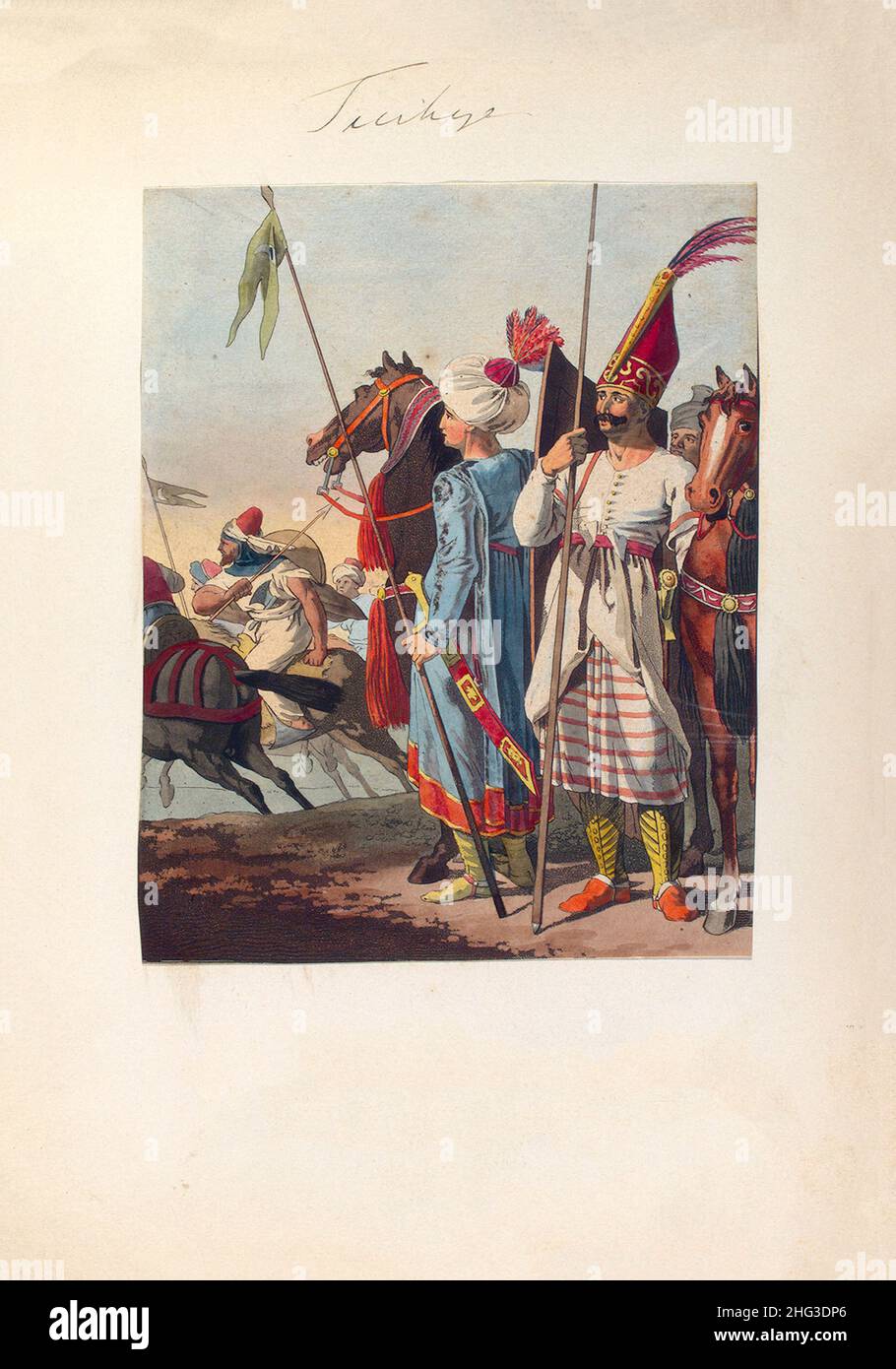 Lithograph of Turkish Asian light cavalry of Ottoman empire of 17th-18th century. 1910 Stock Photohttps://www.alamy.com/image-license-details/?v=1https://www.alamy.com/lithograph-of-turkish-asian-light-cavalry-of-ottoman-empire-of-17th-18th-century-1910-image457380734.html
Lithograph of Turkish Asian light cavalry of Ottoman empire of 17th-18th century. 1910 Stock Photohttps://www.alamy.com/image-license-details/?v=1https://www.alamy.com/lithograph-of-turkish-asian-light-cavalry-of-ottoman-empire-of-17th-18th-century-1910-image457380734.htmlRM2HG3DP6–Lithograph of Turkish Asian light cavalry of Ottoman empire of 17th-18th century. 1910
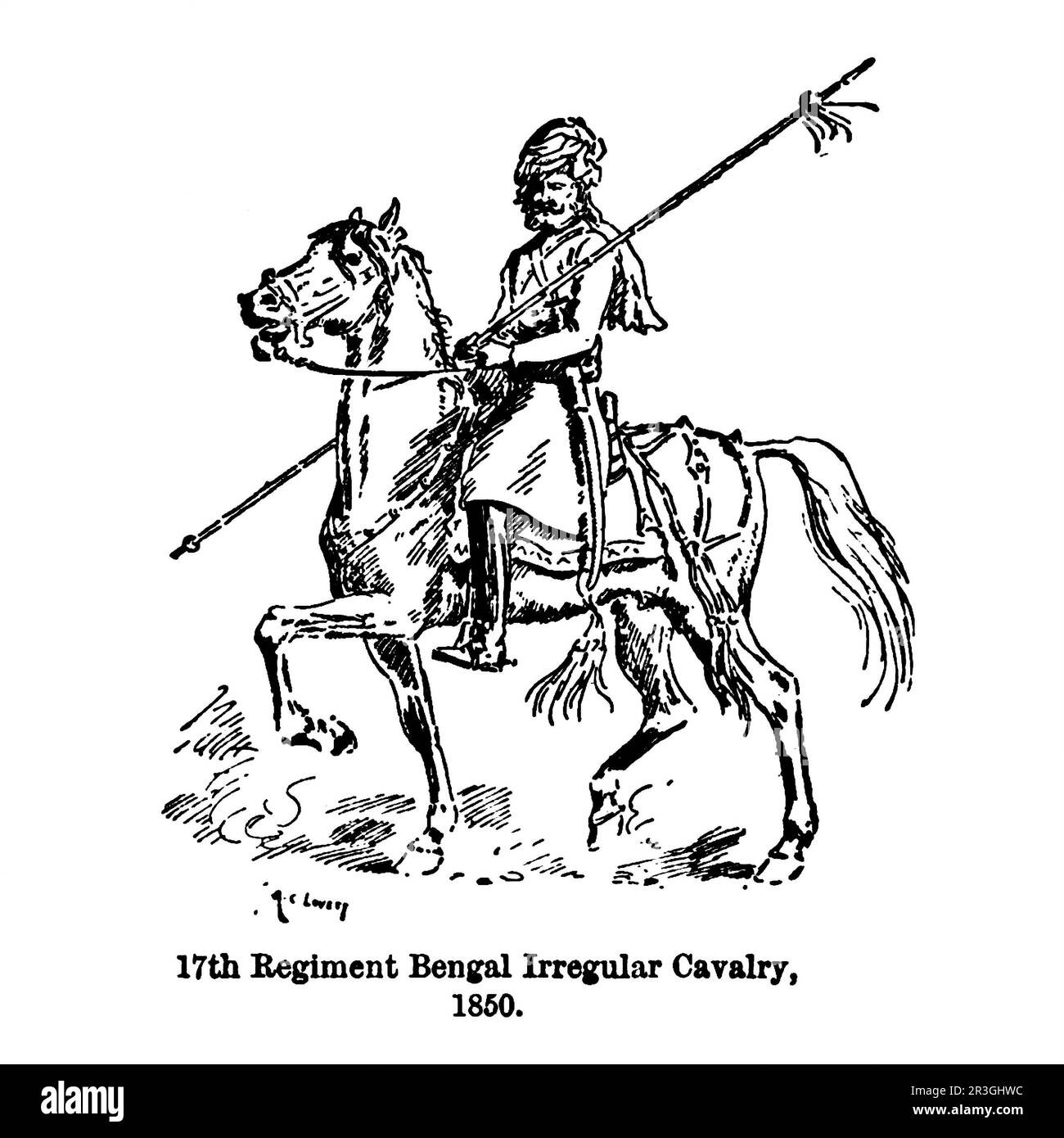 17th Regiment Bengal Irregular Cavalry, 1850. Sketch by Major Alfred Crowdy Lovett, (1862-1919) from the book ' The armies of India ' by Major George Fletcher MacMunn, (1869-1952) Publication date 1911 Publisher London, Adam and Charles Black Stock Photohttps://www.alamy.com/image-license-details/?v=1https://www.alamy.com/17th-regiment-bengal-irregular-cavalry-1850-sketch-by-major-alfred-crowdy-lovett-1862-1919-from-the-book-the-armies-of-india-by-major-george-fletcher-macmunn-1869-1952-publication-date-1911-publisher-london-adam-and-charles-black-image552941016.html
17th Regiment Bengal Irregular Cavalry, 1850. Sketch by Major Alfred Crowdy Lovett, (1862-1919) from the book ' The armies of India ' by Major George Fletcher MacMunn, (1869-1952) Publication date 1911 Publisher London, Adam and Charles Black Stock Photohttps://www.alamy.com/image-license-details/?v=1https://www.alamy.com/17th-regiment-bengal-irregular-cavalry-1850-sketch-by-major-alfred-crowdy-lovett-1862-1919-from-the-book-the-armies-of-india-by-major-george-fletcher-macmunn-1869-1952-publication-date-1911-publisher-london-adam-and-charles-black-image552941016.htmlRF2R3GHWC–17th Regiment Bengal Irregular Cavalry, 1850. Sketch by Major Alfred Crowdy Lovett, (1862-1919) from the book ' The armies of India ' by Major George Fletcher MacMunn, (1869-1952) Publication date 1911 Publisher London, Adam and Charles Black
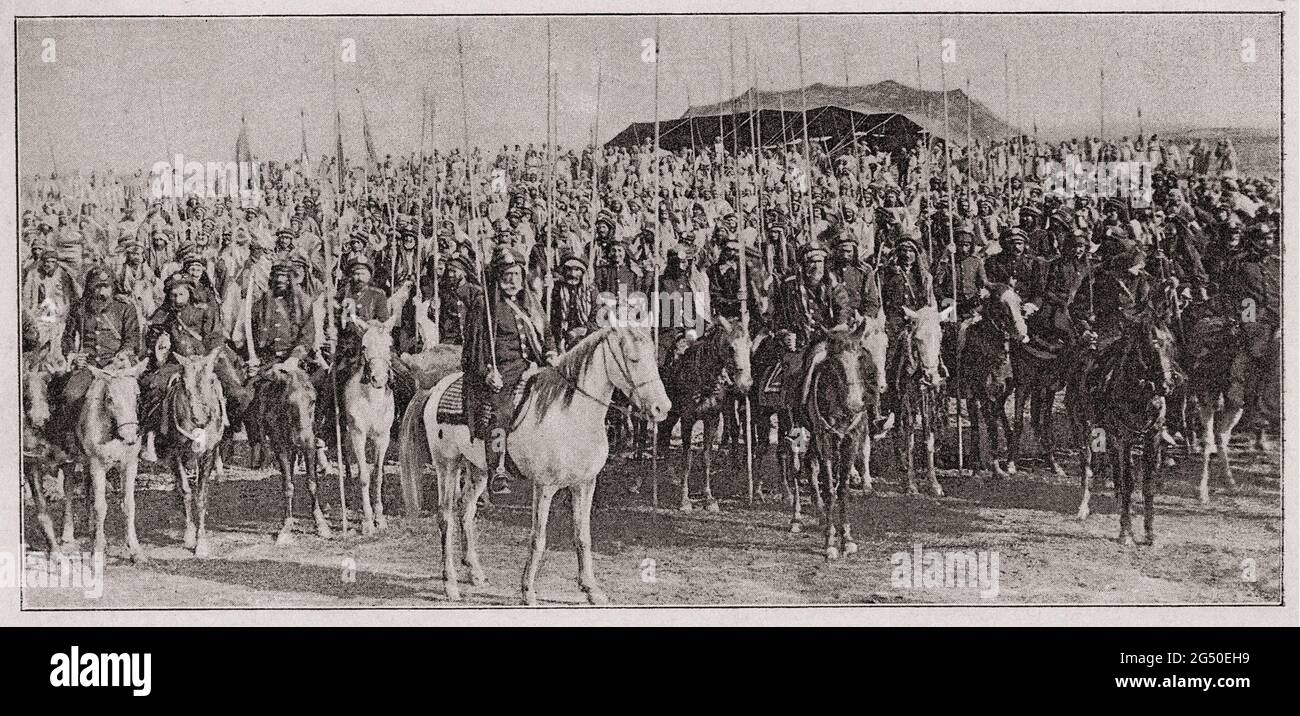 Kurdish Hamidieh Light Cavalry Soldiers, 1890s Hamidiye Light Cavalry Regiments were mainly Kurdish irregular formations that operated in the south ea Stock Photohttps://www.alamy.com/image-license-details/?v=1https://www.alamy.com/kurdish-hamidieh-light-cavalry-soldiers-1890s-hamidiye-light-cavalry-regiments-were-mainly-kurdish-irregular-formations-that-operated-in-the-south-ea-image433343941.html
Kurdish Hamidieh Light Cavalry Soldiers, 1890s Hamidiye Light Cavalry Regiments were mainly Kurdish irregular formations that operated in the south ea Stock Photohttps://www.alamy.com/image-license-details/?v=1https://www.alamy.com/kurdish-hamidieh-light-cavalry-soldiers-1890s-hamidiye-light-cavalry-regiments-were-mainly-kurdish-irregular-formations-that-operated-in-the-south-ea-image433343941.htmlRM2G50EH9–Kurdish Hamidieh Light Cavalry Soldiers, 1890s Hamidiye Light Cavalry Regiments were mainly Kurdish irregular formations that operated in the south ea
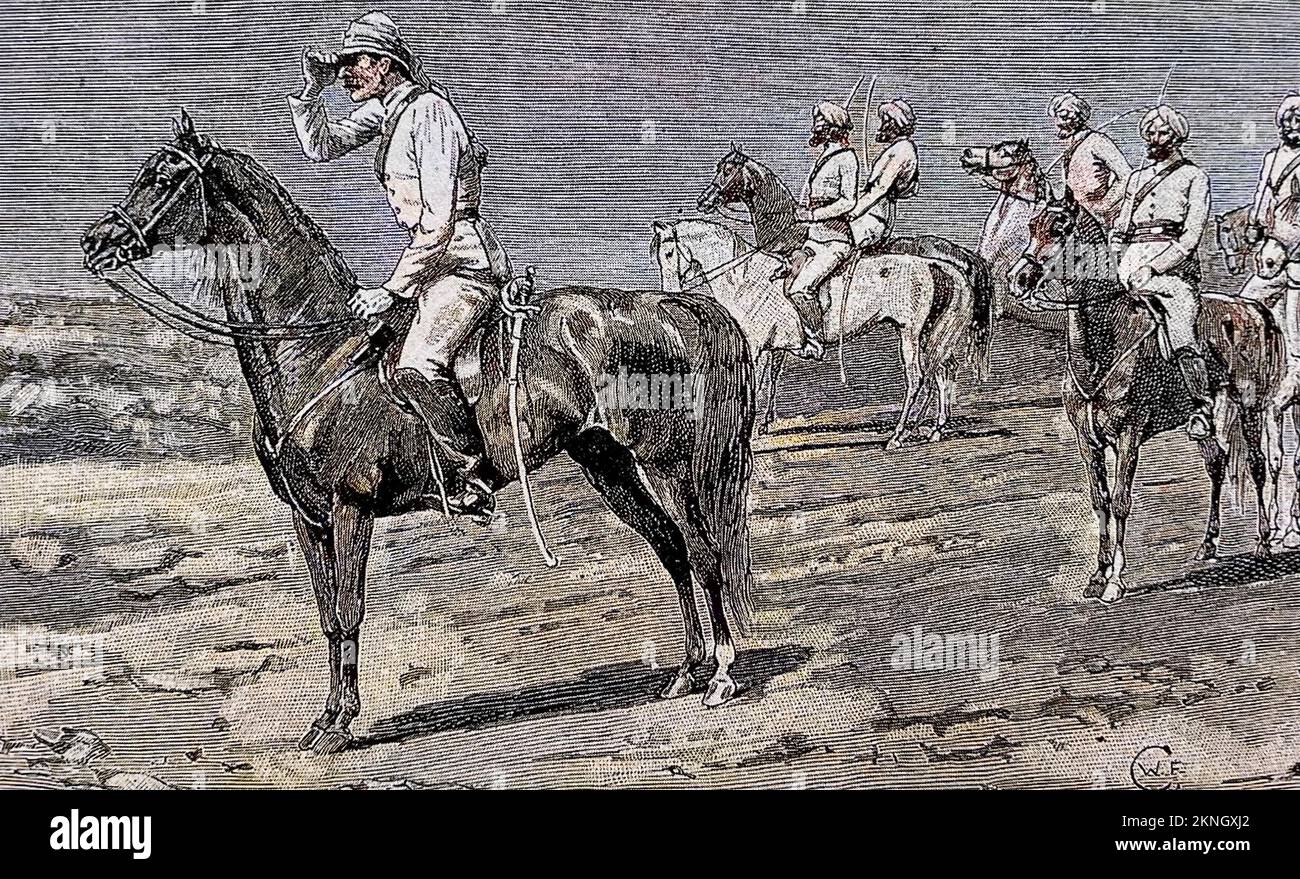 WILLIAM HODSON (1821-1858) British leader of irregular light cavalry checking the route to Delhi during the Indian Mutiny of 1858. Stock Photohttps://www.alamy.com/image-license-details/?v=1https://www.alamy.com/william-hodson-1821-1858-british-leader-of-irregular-light-cavalry-checking-the-route-to-delhi-during-the-indian-mutiny-of-1858-image495170202.html
WILLIAM HODSON (1821-1858) British leader of irregular light cavalry checking the route to Delhi during the Indian Mutiny of 1858. Stock Photohttps://www.alamy.com/image-license-details/?v=1https://www.alamy.com/william-hodson-1821-1858-british-leader-of-irregular-light-cavalry-checking-the-route-to-delhi-during-the-indian-mutiny-of-1858-image495170202.htmlRM2KNGXJ2–WILLIAM HODSON (1821-1858) British leader of irregular light cavalry checking the route to Delhi during the Indian Mutiny of 1858.
 The Indian Mutiny 1857 Standard of the 5th Bengal Irregular Cavalry. Mutinied and disbanded in 1857. Stock Photohttps://www.alamy.com/image-license-details/?v=1https://www.alamy.com/the-indian-mutiny-1857-standard-of-the-5th-bengal-irregular-cavalry-mutinied-and-disbanded-in-1857-image568901961.html
The Indian Mutiny 1857 Standard of the 5th Bengal Irregular Cavalry. Mutinied and disbanded in 1857. Stock Photohttps://www.alamy.com/image-license-details/?v=1https://www.alamy.com/the-indian-mutiny-1857-standard-of-the-5th-bengal-irregular-cavalry-mutinied-and-disbanded-in-1857-image568901961.htmlRM2T1FM75–The Indian Mutiny 1857 Standard of the 5th Bengal Irregular Cavalry. Mutinied and disbanded in 1857.
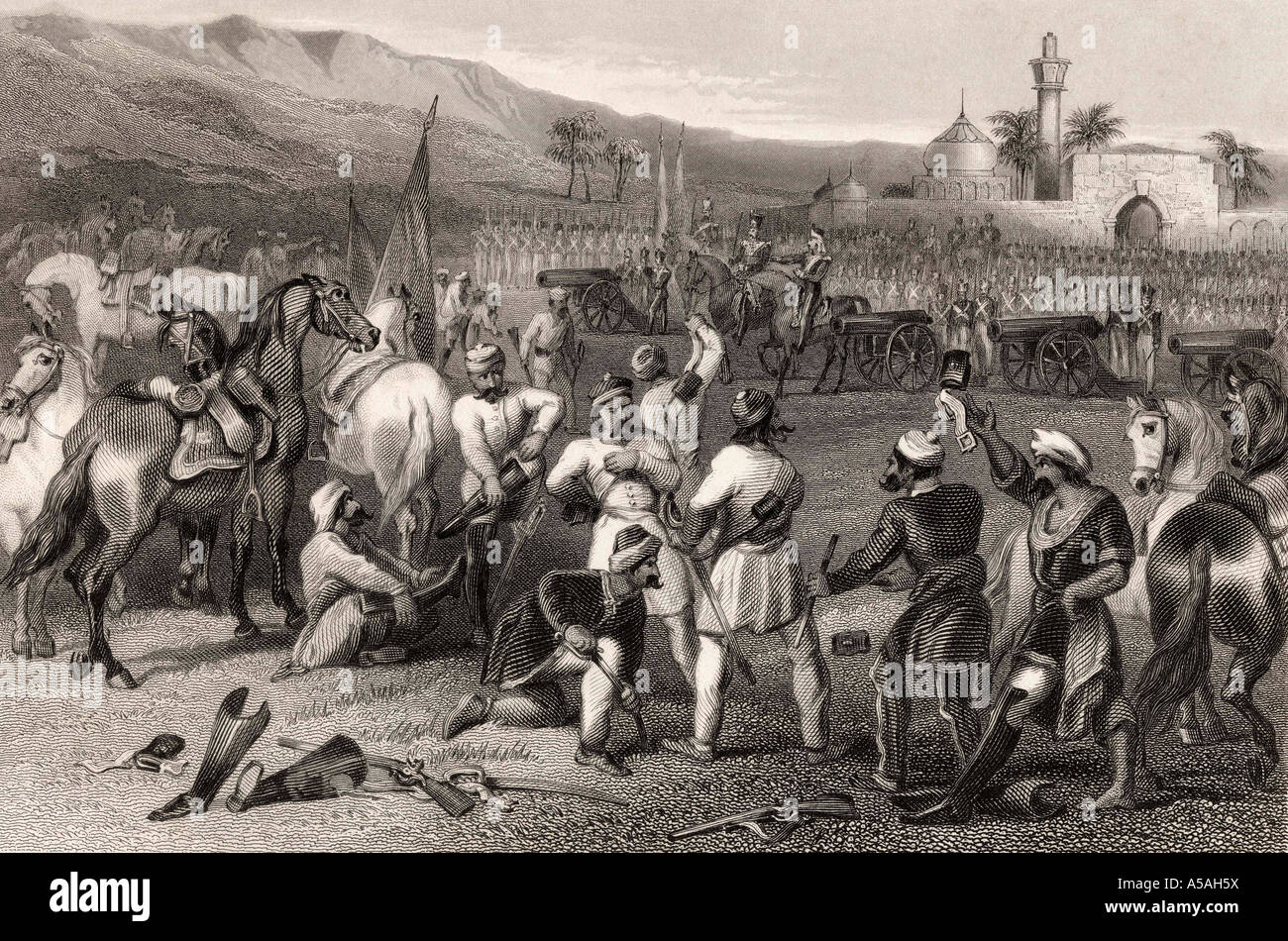 Disarming the 11th Irregular Cavalry at Berhampore,1857. From The History of the Indian Mutiny, published 1858. Stock Photohttps://www.alamy.com/image-license-details/?v=1https://www.alamy.com/stock-photo-disarming-the-11th-irregular-cavalry-at-berhampore1857-from-the-history-11251477.html
Disarming the 11th Irregular Cavalry at Berhampore,1857. From The History of the Indian Mutiny, published 1858. Stock Photohttps://www.alamy.com/image-license-details/?v=1https://www.alamy.com/stock-photo-disarming-the-11th-irregular-cavalry-at-berhampore1857-from-the-history-11251477.htmlRMA5AH5X–Disarming the 11th Irregular Cavalry at Berhampore,1857. From The History of the Indian Mutiny, published 1858.
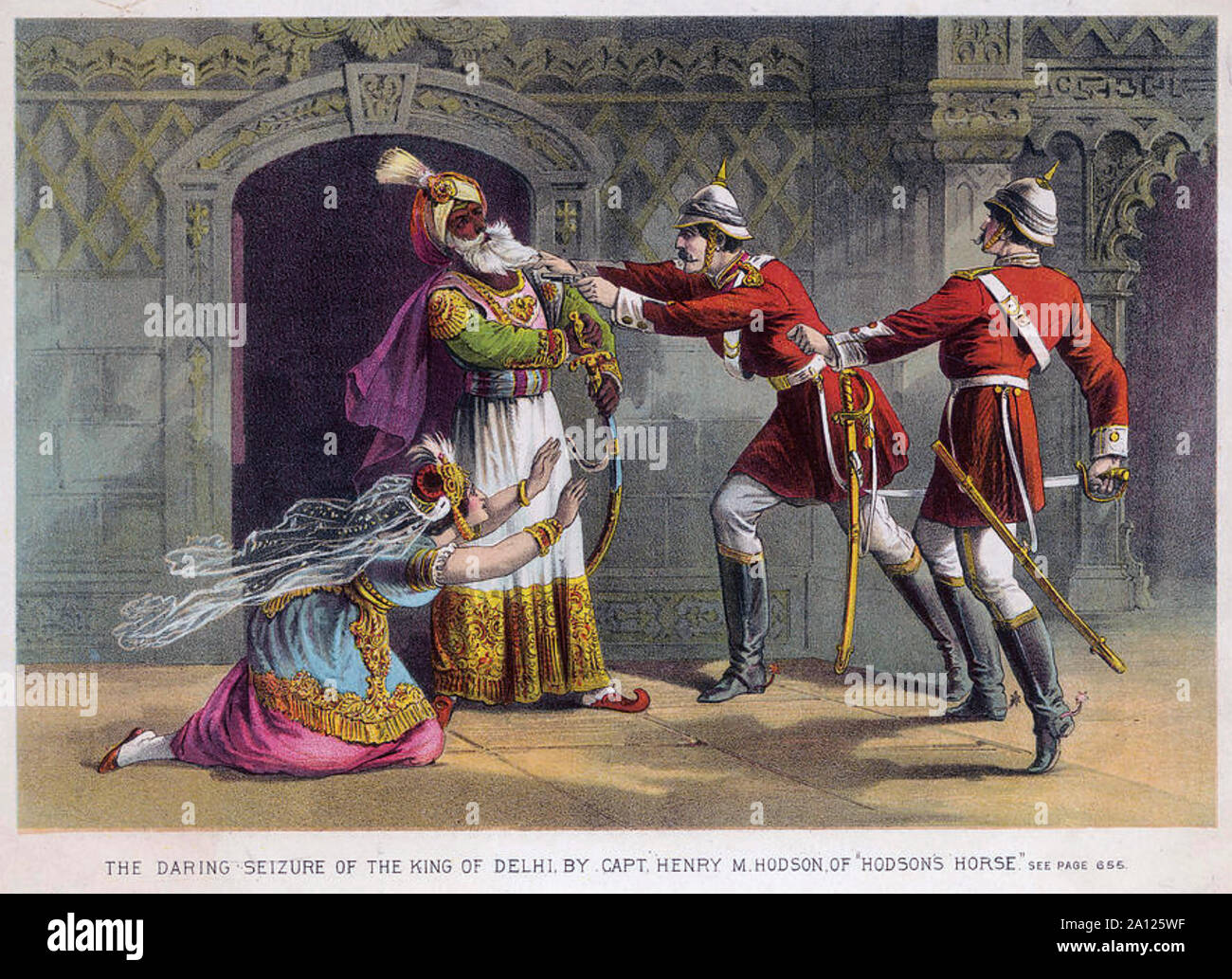 WILLIAM HODSON (1821-1858) a British irregular light cavalry leader captures the King of Delhi, Bahadur Shan II, during the Indian Mutiny, in 1857. Hodson was shot during the attack on Lucknow in March 1858 Stock Photohttps://www.alamy.com/image-license-details/?v=1https://www.alamy.com/william-hodson-1821-1858-a-british-irregular-light-cavalry-leader-captures-the-king-of-delhi-bahadur-shan-ii-during-the-indian-mutiny-in-1857-hodson-was-shot-during-the-attack-on-lucknow-in-march-1858-image327660187.html
WILLIAM HODSON (1821-1858) a British irregular light cavalry leader captures the King of Delhi, Bahadur Shan II, during the Indian Mutiny, in 1857. Hodson was shot during the attack on Lucknow in March 1858 Stock Photohttps://www.alamy.com/image-license-details/?v=1https://www.alamy.com/william-hodson-1821-1858-a-british-irregular-light-cavalry-leader-captures-the-king-of-delhi-bahadur-shan-ii-during-the-indian-mutiny-in-1857-hodson-was-shot-during-the-attack-on-lucknow-in-march-1858-image327660187.htmlRM2A125WF–WILLIAM HODSON (1821-1858) a British irregular light cavalry leader captures the King of Delhi, Bahadur Shan II, during the Indian Mutiny, in 1857. Hodson was shot during the attack on Lucknow in March 1858
 WELD 1862 in India pg218 (050 . Irregular Cavalry of the Hyderabad Contingent Dismounted) Stock Photohttps://www.alamy.com/image-license-details/?v=1https://www.alamy.com/stock-photo-weld-1862-in-india-pg218-050-irregular-cavalry-of-the-hyderabad-contingent-74228204.html
WELD 1862 in India pg218 (050 . Irregular Cavalry of the Hyderabad Contingent Dismounted) Stock Photohttps://www.alamy.com/image-license-details/?v=1https://www.alamy.com/stock-photo-weld-1862-in-india-pg218-050-irregular-cavalry-of-the-hyderabad-contingent-74228204.htmlRME8NAR8–WELD 1862 in India pg218 (050 . Irregular Cavalry of the Hyderabad Contingent Dismounted)
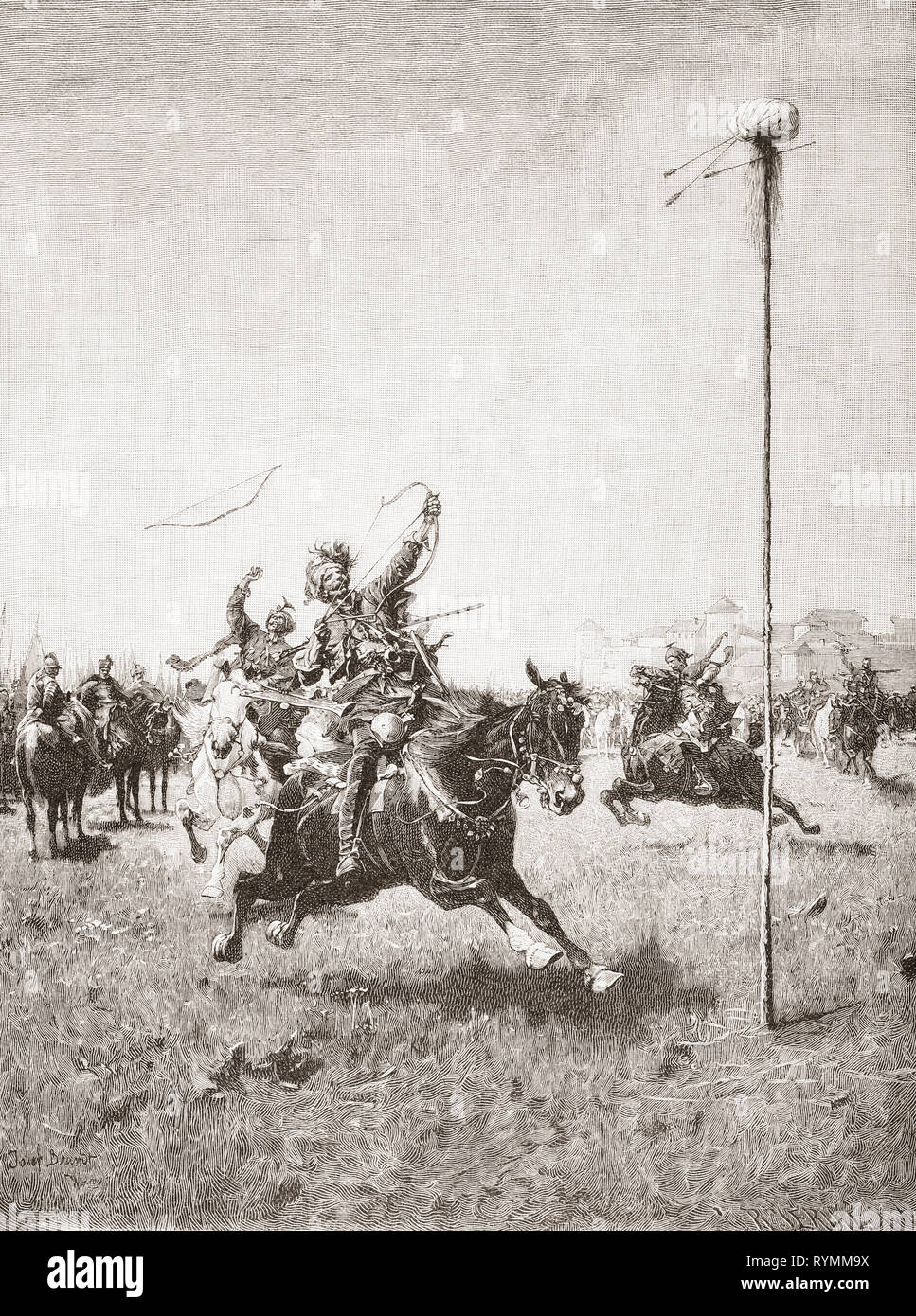 Lisowczycy soldiers in an archery contest, after the painting by Josef von Brandt. The Lisowczycy were an early 17th century irregular unit of the Polish-Lithuanian light cavalry. From Ilustracion Artistica, published 1887. Stock Photohttps://www.alamy.com/image-license-details/?v=1https://www.alamy.com/lisowczycy-soldiers-in-an-archery-contest-after-the-painting-by-josef-von-brandt-the-lisowczycy-were-an-early-17th-century-irregular-unit-of-the-polish-lithuanian-light-cavalry-from-ilustracion-artistica-published-1887-image240785494.html
Lisowczycy soldiers in an archery contest, after the painting by Josef von Brandt. The Lisowczycy were an early 17th century irregular unit of the Polish-Lithuanian light cavalry. From Ilustracion Artistica, published 1887. Stock Photohttps://www.alamy.com/image-license-details/?v=1https://www.alamy.com/lisowczycy-soldiers-in-an-archery-contest-after-the-painting-by-josef-von-brandt-the-lisowczycy-were-an-early-17th-century-irregular-unit-of-the-polish-lithuanian-light-cavalry-from-ilustracion-artistica-published-1887-image240785494.htmlRMRYMM9X–Lisowczycy soldiers in an archery contest, after the painting by Josef von Brandt. The Lisowczycy were an early 17th century irregular unit of the Polish-Lithuanian light cavalry. From Ilustracion Artistica, published 1887.
 WELD 1862 in India pg218 (050 . Irregular Cavalry of the Hyderabad Contingent Dismounted) Stock Photohttps://www.alamy.com/image-license-details/?v=1https://www.alamy.com/weld-1862-in-india-pg218-050-irregular-cavalry-of-the-hyderabad-contingent-image154724634.html
WELD 1862 in India pg218 (050 . Irregular Cavalry of the Hyderabad Contingent Dismounted) Stock Photohttps://www.alamy.com/image-license-details/?v=1https://www.alamy.com/weld-1862-in-india-pg218-050-irregular-cavalry-of-the-hyderabad-contingent-image154724634.htmlRMJYM8RP–WELD 1862 in India pg218 (050 . Irregular Cavalry of the Hyderabad Contingent Dismounted)
 The 1st Horse (Skinner's Horse) is a cavalry regiment of the Indian Army, which served in the British Indian Army before independence. The regiment was raised in 1803 as Skinner’s Horse by James Skinner ('Sikander Sahib') as an irregular cavalry regiment in the service of the East India Company. It was later renamed the 1st Bengal Lancers. The regiment became (and remains) one of the seniormost cavalry regiments of the Armoured Corps of the Indian Army. A second regiment of Indian Cavalry was raised by Colonel James Skinner in 1814, which became the 3rd Skinner's Horse. On the reduction of th Stock Photohttps://www.alamy.com/image-license-details/?v=1https://www.alamy.com/the-1st-horse-skinners-horse-is-a-cavalry-regiment-of-the-indian-army-which-served-in-the-british-indian-army-before-independence-the-regiment-was-raised-in-1803-as-skinners-horse-by-james-skinner-sikander-sahib-as-an-irregular-cavalry-regiment-in-the-service-of-the-east-india-company-it-was-later-renamed-the-1st-bengal-lancers-the-regiment-became-and-remains-one-of-the-seniormost-cavalry-regiments-of-the-armoured-corps-of-the-indian-army-a-second-regiment-of-indian-cavalry-was-raised-by-colonel-james-skinner-in-1814-which-became-the-3rd-skinners-horse-on-the-reduction-of-th-image344274420.html
The 1st Horse (Skinner's Horse) is a cavalry regiment of the Indian Army, which served in the British Indian Army before independence. The regiment was raised in 1803 as Skinner’s Horse by James Skinner ('Sikander Sahib') as an irregular cavalry regiment in the service of the East India Company. It was later renamed the 1st Bengal Lancers. The regiment became (and remains) one of the seniormost cavalry regiments of the Armoured Corps of the Indian Army. A second regiment of Indian Cavalry was raised by Colonel James Skinner in 1814, which became the 3rd Skinner's Horse. On the reduction of th Stock Photohttps://www.alamy.com/image-license-details/?v=1https://www.alamy.com/the-1st-horse-skinners-horse-is-a-cavalry-regiment-of-the-indian-army-which-served-in-the-british-indian-army-before-independence-the-regiment-was-raised-in-1803-as-skinners-horse-by-james-skinner-sikander-sahib-as-an-irregular-cavalry-regiment-in-the-service-of-the-east-india-company-it-was-later-renamed-the-1st-bengal-lancers-the-regiment-became-and-remains-one-of-the-seniormost-cavalry-regiments-of-the-armoured-corps-of-the-indian-army-a-second-regiment-of-indian-cavalry-was-raised-by-colonel-james-skinner-in-1814-which-became-the-3rd-skinners-horse-on-the-reduction-of-th-image344274420.htmlRM2B031F0–The 1st Horse (Skinner's Horse) is a cavalry regiment of the Indian Army, which served in the British Indian Army before independence. The regiment was raised in 1803 as Skinner’s Horse by James Skinner ('Sikander Sahib') as an irregular cavalry regiment in the service of the East India Company. It was later renamed the 1st Bengal Lancers. The regiment became (and remains) one of the seniormost cavalry regiments of the Armoured Corps of the Indian Army. A second regiment of Indian Cavalry was raised by Colonel James Skinner in 1814, which became the 3rd Skinner's Horse. On the reduction of th
 8th Bengal Irregular Cavalry Officer (1855). Stock Photohttps://www.alamy.com/image-license-details/?v=1https://www.alamy.com/8th-bengal-irregular-cavalry-officer-1855-image211827699.html
8th Bengal Irregular Cavalry Officer (1855). Stock Photohttps://www.alamy.com/image-license-details/?v=1https://www.alamy.com/8th-bengal-irregular-cavalry-officer-1855-image211827699.htmlRMP8HGAY–8th Bengal Irregular Cavalry Officer (1855).
 19 8th Bengal Irregular Cavalry Officer (1855) Stock Photohttps://www.alamy.com/image-license-details/?v=1https://www.alamy.com/19-8th-bengal-irregular-cavalry-officer-1855-image214212302.html
19 8th Bengal Irregular Cavalry Officer (1855) Stock Photohttps://www.alamy.com/image-license-details/?v=1https://www.alamy.com/19-8th-bengal-irregular-cavalry-officer-1855-image214212302.htmlRMPCE5YA–19 8th Bengal Irregular Cavalry Officer (1855)
 The arrival of the contingent force of the Sikh irregular cavalry, India, c1860. Artist: Unknown Stock Photohttps://www.alamy.com/image-license-details/?v=1https://www.alamy.com/the-arrival-of-the-contingent-force-of-the-sikh-irregular-cavalry-india-c1860-artist-unknown-image262757475.html
The arrival of the contingent force of the Sikh irregular cavalry, India, c1860. Artist: Unknown Stock Photohttps://www.alamy.com/image-license-details/?v=1https://www.alamy.com/the-arrival-of-the-contingent-force-of-the-sikh-irregular-cavalry-india-c1860-artist-unknown-image262757475.htmlRMW7DHRF–The arrival of the contingent force of the Sikh irregular cavalry, India, c1860. Artist: Unknown
 Persian irregular Cavalry Mesopotamian Campaign. Collection of World War I Photographs, 1914-1918 that depict the military activities of British and other nation's armed forces and personnel during World War I. Stock Photohttps://www.alamy.com/image-license-details/?v=1https://www.alamy.com/persian-irregular-cavalry-mesopotamian-campaign-collection-of-world-war-i-photographs-1914-1918-that-depict-the-military-activities-of-british-and-other-nations-armed-forces-and-personnel-during-world-war-i-image463889403.html
Persian irregular Cavalry Mesopotamian Campaign. Collection of World War I Photographs, 1914-1918 that depict the military activities of British and other nation's armed forces and personnel during World War I. Stock Photohttps://www.alamy.com/image-license-details/?v=1https://www.alamy.com/persian-irregular-cavalry-mesopotamian-campaign-collection-of-world-war-i-photographs-1914-1918-that-depict-the-military-activities-of-british-and-other-nations-armed-forces-and-personnel-during-world-war-i-image463889403.htmlRM2HXKYJK–Persian irregular Cavalry Mesopotamian Campaign. Collection of World War I Photographs, 1914-1918 that depict the military activities of British and other nation's armed forces and personnel during World War I.
 Major-General Sir Henry Gee Roberts (1800-60), c.1830 A half-length portrait showing a fair-haired young man in a red uniform with gold epaulettes and braid. Roberts served with the Bombay Army 1818-59. He became a captain in 1824 and in 1825 commanded the Resident’s Escort in Cutch and later the Cutch Irregular Horse. He was assistant to the Resident for a time. After three years furlough in England, he returned to raise a regiment of Irregular cavalry in Gujerat which he commanded until 1841. In that year, he became a Lieutenant Colonel and in 1843 took part in Sir Charles Napier’s Sind Stock Photohttps://www.alamy.com/image-license-details/?v=1https://www.alamy.com/major-general-sir-henry-gee-roberts-1800-60-c1830-a-half-length-portrait-showing-a-fair-haired-young-man-in-a-red-uniform-with-gold-epaulettes-and-braid-roberts-served-with-the-bombay-army-1818-59-he-became-a-captain-in-1824-and-in-1825-commanded-the-residents-escort-in-cutch-and-later-the-cutch-irregular-horse-he-was-assistant-to-the-resident-for-a-time-after-three-years-furlough-in-england-he-returned-to-raise-a-regiment-of-irregular-cavalry-in-gujerat-which-he-commanded-until-1841-in-that-year-he-became-a-lieutenant-colonel-and-in-1843-took-part-in-sir-charles-napiers-sind-image231755240.html
Major-General Sir Henry Gee Roberts (1800-60), c.1830 A half-length portrait showing a fair-haired young man in a red uniform with gold epaulettes and braid. Roberts served with the Bombay Army 1818-59. He became a captain in 1824 and in 1825 commanded the Resident’s Escort in Cutch and later the Cutch Irregular Horse. He was assistant to the Resident for a time. After three years furlough in England, he returned to raise a regiment of Irregular cavalry in Gujerat which he commanded until 1841. In that year, he became a Lieutenant Colonel and in 1843 took part in Sir Charles Napier’s Sind Stock Photohttps://www.alamy.com/image-license-details/?v=1https://www.alamy.com/major-general-sir-henry-gee-roberts-1800-60-c1830-a-half-length-portrait-showing-a-fair-haired-young-man-in-a-red-uniform-with-gold-epaulettes-and-braid-roberts-served-with-the-bombay-army-1818-59-he-became-a-captain-in-1824-and-in-1825-commanded-the-residents-escort-in-cutch-and-later-the-cutch-irregular-horse-he-was-assistant-to-the-resident-for-a-time-after-three-years-furlough-in-england-he-returned-to-raise-a-regiment-of-irregular-cavalry-in-gujerat-which-he-commanded-until-1841-in-that-year-he-became-a-lieutenant-colonel-and-in-1843-took-part-in-sir-charles-napiers-sind-image231755240.htmlRMRD1A4T–Major-General Sir Henry Gee Roberts (1800-60), c.1830 A half-length portrait showing a fair-haired young man in a red uniform with gold epaulettes and braid. Roberts served with the Bombay Army 1818-59. He became a captain in 1824 and in 1825 commanded the Resident’s Escort in Cutch and later the Cutch Irregular Horse. He was assistant to the Resident for a time. After three years furlough in England, he returned to raise a regiment of Irregular cavalry in Gujerat which he commanded until 1841. In that year, he became a Lieutenant Colonel and in 1843 took part in Sir Charles Napier’s Sind
 Military and munity mutiny views disarming 11th Irregular Cavalry ; Berhampore Berthampore ; West Bengal ; India Stock Photohttps://www.alamy.com/image-license-details/?v=1https://www.alamy.com/stock-photo-military-and-munity-mutiny-views-disarming-11th-irregular-cavalry-83714404.html
Military and munity mutiny views disarming 11th Irregular Cavalry ; Berhampore Berthampore ; West Bengal ; India Stock Photohttps://www.alamy.com/image-license-details/?v=1https://www.alamy.com/stock-photo-military-and-munity-mutiny-views-disarming-11th-irregular-cavalry-83714404.htmlRMET5EG4–Military and munity mutiny views disarming 11th Irregular Cavalry ; Berhampore Berthampore ; West Bengal ; India
 13th Duke of Connaughts's Regiment of Bengal Lancer, display team Stock Photohttps://www.alamy.com/image-license-details/?v=1https://www.alamy.com/stock-photo-13th-duke-of-connaughtss-regiment-of-bengal-lancer-display-team-72011607.html
13th Duke of Connaughts's Regiment of Bengal Lancer, display team Stock Photohttps://www.alamy.com/image-license-details/?v=1https://www.alamy.com/stock-photo-13th-duke-of-connaughtss-regiment-of-bengal-lancer-display-team-72011607.htmlRME54BF3–13th Duke of Connaughts's Regiment of Bengal Lancer, display team
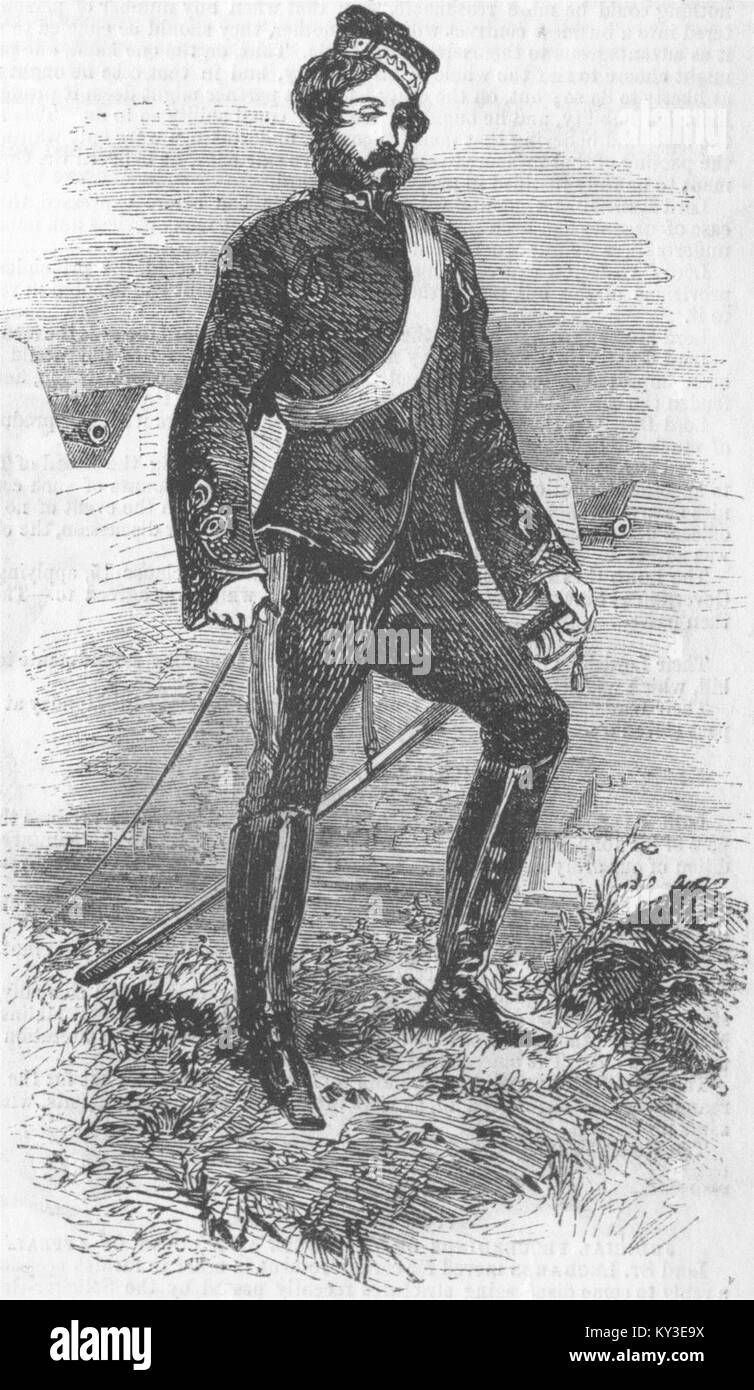 MILITARIA Officer artillery Gen Beatson's cavalry 1855. Illustrated Times Stock Photohttps://www.alamy.com/image-license-details/?v=1https://www.alamy.com/stock-photo-militaria-officer-artillery-gen-beatsons-cavalry-1855-illustrated-171566134.html
MILITARIA Officer artillery Gen Beatson's cavalry 1855. Illustrated Times Stock Photohttps://www.alamy.com/image-license-details/?v=1https://www.alamy.com/stock-photo-militaria-officer-artillery-gen-beatsons-cavalry-1855-illustrated-171566134.htmlRFKY3E9X–MILITARIA Officer artillery Gen Beatson's cavalry 1855. Illustrated Times
 Lithograph of Turkish Deli light cavalry of Ottoman empire of 16th-17th centuries. 1910 A Deli (from Turkish deli, meaning 'mad, wild, daring') was a Stock Photohttps://www.alamy.com/image-license-details/?v=1https://www.alamy.com/lithograph-of-turkish-deli-light-cavalry-of-ottoman-empire-of-16th-17th-centuries-1910-a-deli-from-turkish-deli-meaning-mad-wild-daring-was-a-image457380749.html
Lithograph of Turkish Deli light cavalry of Ottoman empire of 16th-17th centuries. 1910 A Deli (from Turkish deli, meaning 'mad, wild, daring') was a Stock Photohttps://www.alamy.com/image-license-details/?v=1https://www.alamy.com/lithograph-of-turkish-deli-light-cavalry-of-ottoman-empire-of-16th-17th-centuries-1910-a-deli-from-turkish-deli-meaning-mad-wild-daring-was-a-image457380749.htmlRM2HG3DPN–Lithograph of Turkish Deli light cavalry of Ottoman empire of 16th-17th centuries. 1910 A Deli (from Turkish deli, meaning 'mad, wild, daring') was a
 Native Office, Punjab Irregular Cavalry, Felice Beato (English, born Italy, 1832 - 1909), India, 1858 - 1859, Albumen reimagined Stock Photohttps://www.alamy.com/image-license-details/?v=1https://www.alamy.com/native-office-punjab-irregular-cavalry-felice-beato-english-born-italy-1832-1909-india-1858-1859-albumen-reimagined-image230270939.html
Native Office, Punjab Irregular Cavalry, Felice Beato (English, born Italy, 1832 - 1909), India, 1858 - 1859, Albumen reimagined Stock Photohttps://www.alamy.com/image-license-details/?v=1https://www.alamy.com/native-office-punjab-irregular-cavalry-felice-beato-english-born-italy-1832-1909-india-1858-1859-albumen-reimagined-image230270939.htmlRFRAHMX3–Native Office, Punjab Irregular Cavalry, Felice Beato (English, born Italy, 1832 - 1909), India, 1858 - 1859, Albumen reimagined
 Lithograph of Turkish derviches: Bektachi Emin Baba, Seirdin-Ustasi (chef des Bouffons), Soitari Jester of the Volunteers, Deli Bachi, commander of th Stock Photohttps://www.alamy.com/image-license-details/?v=1https://www.alamy.com/lithograph-of-turkish-derviches-bektachi-emin-baba-seirdin-ustasi-chef-des-bouffons-soitari-jester-of-the-volunteers-deli-bachi-commander-of-th-image465691065.html
Lithograph of Turkish derviches: Bektachi Emin Baba, Seirdin-Ustasi (chef des Bouffons), Soitari Jester of the Volunteers, Deli Bachi, commander of th Stock Photohttps://www.alamy.com/image-license-details/?v=1https://www.alamy.com/lithograph-of-turkish-derviches-bektachi-emin-baba-seirdin-ustasi-chef-des-bouffons-soitari-jester-of-the-volunteers-deli-bachi-commander-of-th-image465691065.htmlRM2J1J1KN–Lithograph of Turkish derviches: Bektachi Emin Baba, Seirdin-Ustasi (chef des Bouffons), Soitari Jester of the Volunteers, Deli Bachi, commander of th
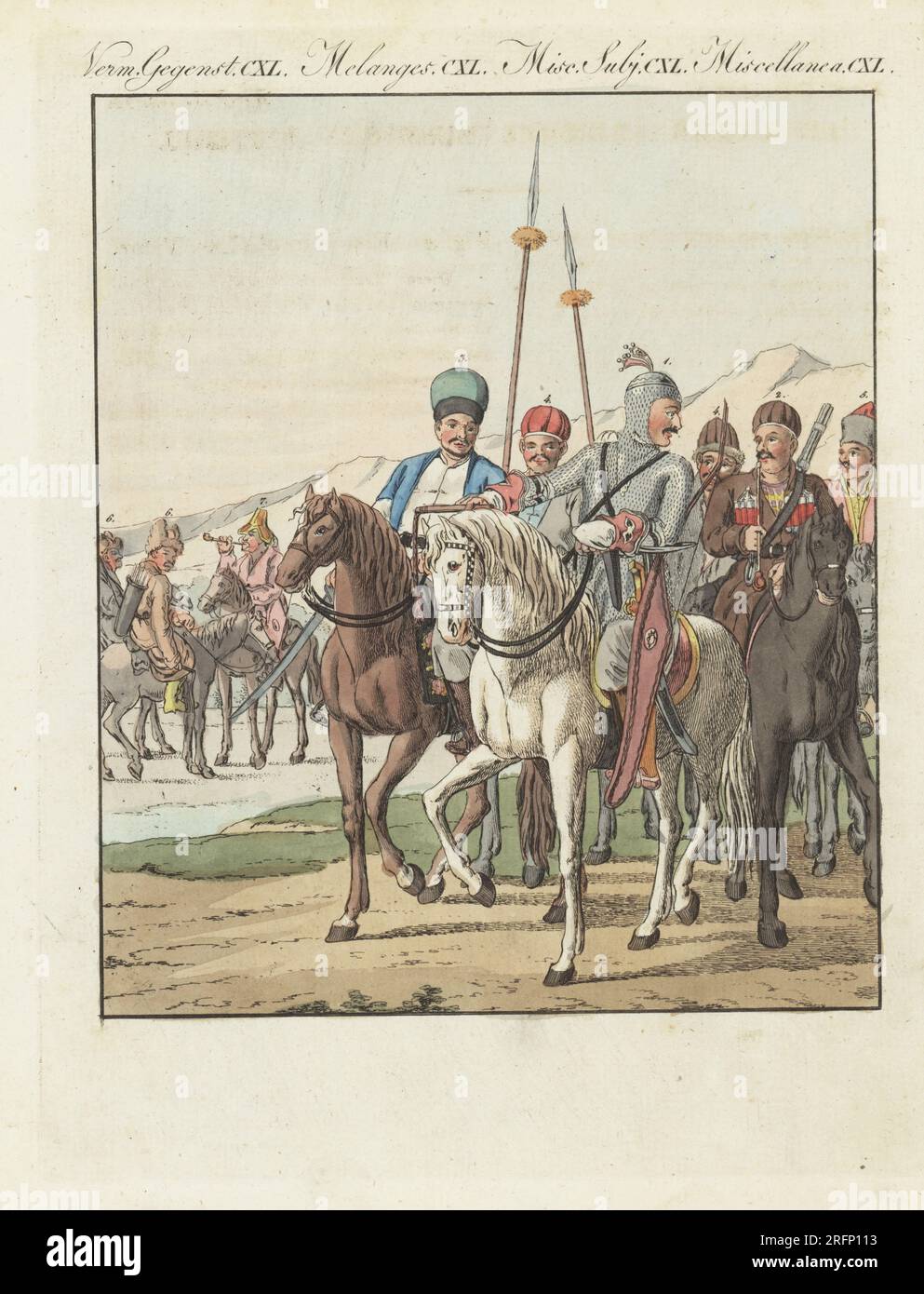 Russian irregular light horse. Circassian prince in chainmail armour 1, common Circassian 2, Murza or Tatar nobleman 3, Nogai Tatar 4, Turkmen Tatar 5, Bashkirs 6 and Kyrgyz cavalry 7. Armed with lance, sabre, bow and arrow. Handcoloured copperplate engraving from Carl Bertuch's Bilderbuch fur Kinder (Picture Book for Children), Weimar, 1810. A 12-volume encyclopedia for children illustrated with almost 1,200 engraved plates on natural history, science, costume, mythology, etc., published from 1790-1830. Stock Photohttps://www.alamy.com/image-license-details/?v=1https://www.alamy.com/russian-irregular-light-horse-circassian-prince-in-chainmail-armour-1-common-circassian-2-murza-or-tatar-nobleman-3-nogai-tatar-4-turkmen-tatar-5-bashkirs-6-and-kyrgyz-cavalry-7-armed-with-lance-sabre-bow-and-arrow-handcoloured-copperplate-engraving-from-carl-bertuchs-bilderbuch-fur-kinder-picture-book-for-children-weimar-1810-a-12-volume-encyclopedia-for-children-illustrated-with-almost-1200-engraved-plates-on-natural-history-science-costume-mythology-etc-published-from-1790-1830-image560435375.html
Russian irregular light horse. Circassian prince in chainmail armour 1, common Circassian 2, Murza or Tatar nobleman 3, Nogai Tatar 4, Turkmen Tatar 5, Bashkirs 6 and Kyrgyz cavalry 7. Armed with lance, sabre, bow and arrow. Handcoloured copperplate engraving from Carl Bertuch's Bilderbuch fur Kinder (Picture Book for Children), Weimar, 1810. A 12-volume encyclopedia for children illustrated with almost 1,200 engraved plates on natural history, science, costume, mythology, etc., published from 1790-1830. Stock Photohttps://www.alamy.com/image-license-details/?v=1https://www.alamy.com/russian-irregular-light-horse-circassian-prince-in-chainmail-armour-1-common-circassian-2-murza-or-tatar-nobleman-3-nogai-tatar-4-turkmen-tatar-5-bashkirs-6-and-kyrgyz-cavalry-7-armed-with-lance-sabre-bow-and-arrow-handcoloured-copperplate-engraving-from-carl-bertuchs-bilderbuch-fur-kinder-picture-book-for-children-weimar-1810-a-12-volume-encyclopedia-for-children-illustrated-with-almost-1200-engraved-plates-on-natural-history-science-costume-mythology-etc-published-from-1790-1830-image560435375.htmlRM2RFP113–Russian irregular light horse. Circassian prince in chainmail armour 1, common Circassian 2, Murza or Tatar nobleman 3, Nogai Tatar 4, Turkmen Tatar 5, Bashkirs 6 and Kyrgyz cavalry 7. Armed with lance, sabre, bow and arrow. Handcoloured copperplate engraving from Carl Bertuch's Bilderbuch fur Kinder (Picture Book for Children), Weimar, 1810. A 12-volume encyclopedia for children illustrated with almost 1,200 engraved plates on natural history, science, costume, mythology, etc., published from 1790-1830.
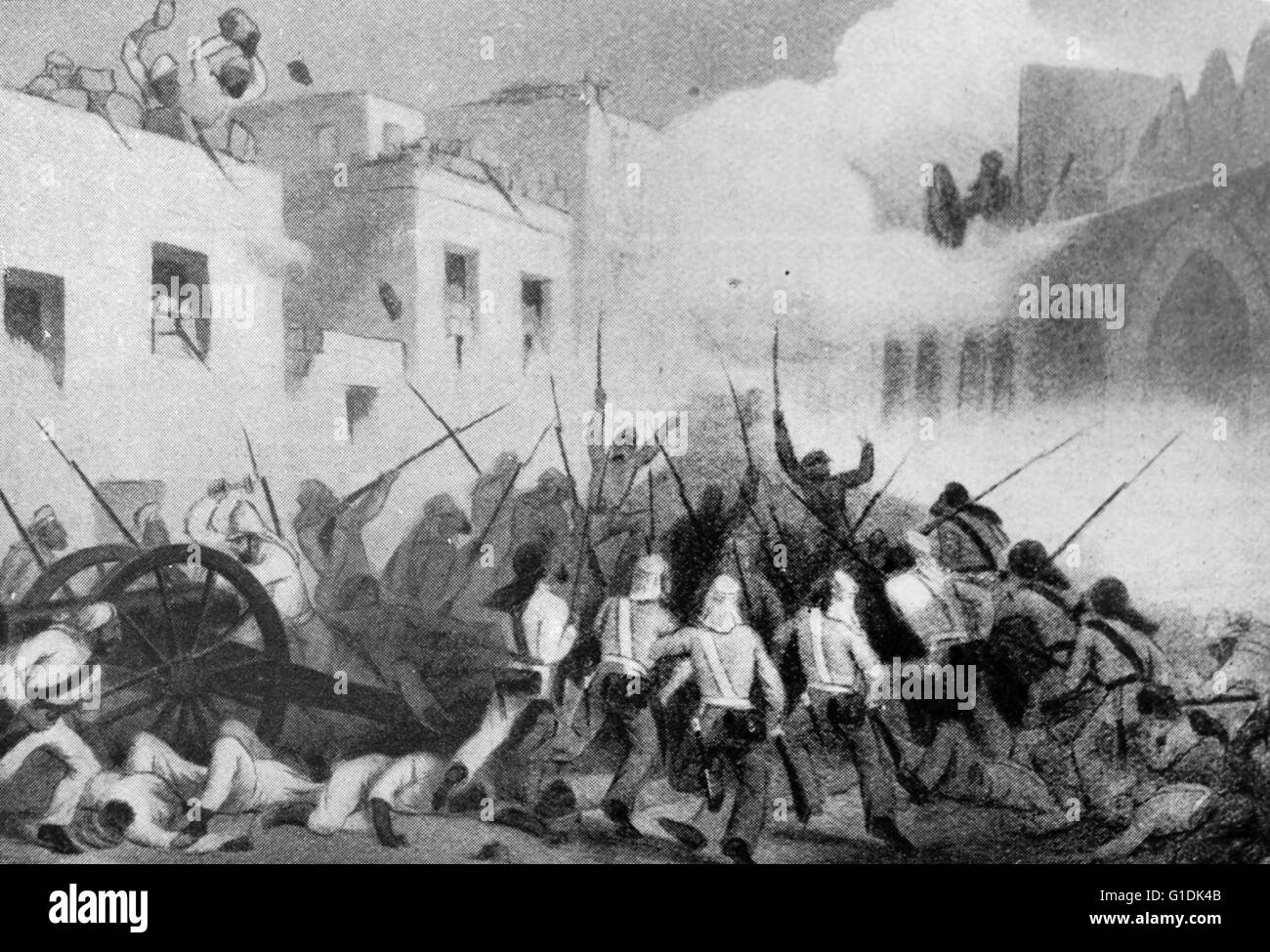 Illustration depicting the re-taking of Delhi by Brevet Major William Stephen Raikes Hodson (1821-1858) a British leader of irregular light cavalry during the Indian Rebellion of 1857. Dated 19th Century Stock Photohttps://www.alamy.com/image-license-details/?v=1https://www.alamy.com/stock-photo-illustration-depicting-the-re-taking-of-delhi-by-brevet-major-william-104177259.html
Illustration depicting the re-taking of Delhi by Brevet Major William Stephen Raikes Hodson (1821-1858) a British leader of irregular light cavalry during the Indian Rebellion of 1857. Dated 19th Century Stock Photohttps://www.alamy.com/image-license-details/?v=1https://www.alamy.com/stock-photo-illustration-depicting-the-re-taking-of-delhi-by-brevet-major-william-104177259.htmlRMG1DK4B–Illustration depicting the re-taking of Delhi by Brevet Major William Stephen Raikes Hodson (1821-1858) a British leader of irregular light cavalry during the Indian Rebellion of 1857. Dated 19th Century
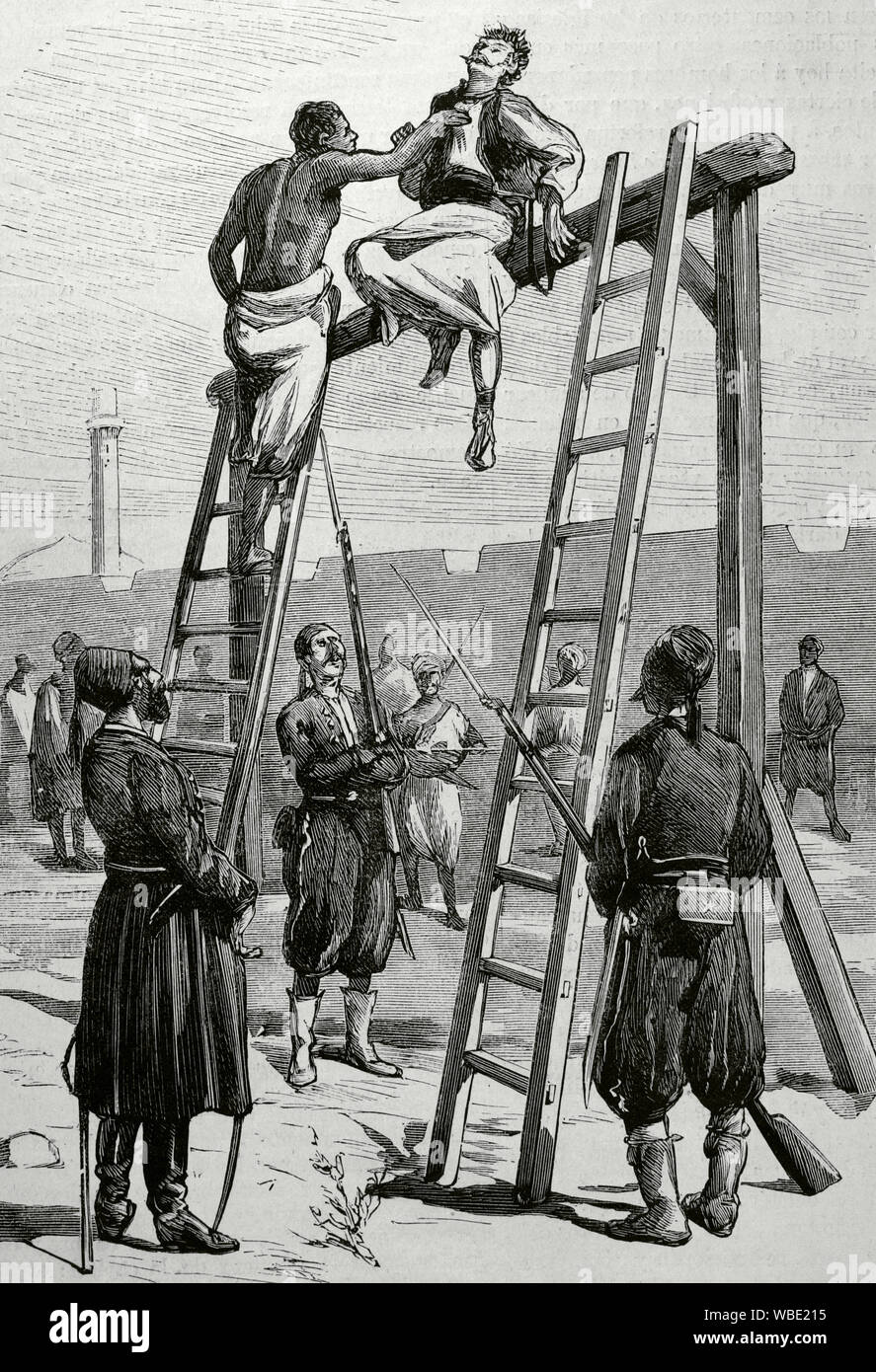 The Eastern Question. Serbian-Turkish Wars (1876-1878). Serbia declared war on the Ottoman Empire on June 30, 1876. The April Uprising of 1876 was experienced with strong repression by the Turkish authorities in Bulgaria. Execution of Bulgarian insurgents in the streets of Widdin by Bashi-bazouks and Circassians. The Bashi-bazouks were units of irregular volunteers, both infantry and cavalry, attached to the Turkish army but under independent officers. Engraving. La Ilustracion Española y Americana, August 22, 1876. Stock Photohttps://www.alamy.com/image-license-details/?v=1https://www.alamy.com/the-eastern-question-serbian-turkish-wars-1876-1878-serbia-declared-war-on-the-ottoman-empire-on-june-30-1876-the-april-uprising-of-1876-was-experienced-with-strong-repression-by-the-turkish-authorities-in-bulgaria-execution-of-bulgarian-insurgents-in-the-streets-of-widdin-by-bashi-bazouks-and-circassians-the-bashi-bazouks-were-units-of-irregular-volunteers-both-infantry-and-cavalry-attached-to-the-turkish-army-but-under-independent-officers-engraving-la-ilustracion-espaola-y-americana-august-22-1876-image265225665.html
The Eastern Question. Serbian-Turkish Wars (1876-1878). Serbia declared war on the Ottoman Empire on June 30, 1876. The April Uprising of 1876 was experienced with strong repression by the Turkish authorities in Bulgaria. Execution of Bulgarian insurgents in the streets of Widdin by Bashi-bazouks and Circassians. The Bashi-bazouks were units of irregular volunteers, both infantry and cavalry, attached to the Turkish army but under independent officers. Engraving. La Ilustracion Española y Americana, August 22, 1876. Stock Photohttps://www.alamy.com/image-license-details/?v=1https://www.alamy.com/the-eastern-question-serbian-turkish-wars-1876-1878-serbia-declared-war-on-the-ottoman-empire-on-june-30-1876-the-april-uprising-of-1876-was-experienced-with-strong-repression-by-the-turkish-authorities-in-bulgaria-execution-of-bulgarian-insurgents-in-the-streets-of-widdin-by-bashi-bazouks-and-circassians-the-bashi-bazouks-were-units-of-irregular-volunteers-both-infantry-and-cavalry-attached-to-the-turkish-army-but-under-independent-officers-engraving-la-ilustracion-espaola-y-americana-august-22-1876-image265225665.htmlRMWBE215–The Eastern Question. Serbian-Turkish Wars (1876-1878). Serbia declared war on the Ottoman Empire on June 30, 1876. The April Uprising of 1876 was experienced with strong repression by the Turkish authorities in Bulgaria. Execution of Bulgarian insurgents in the streets of Widdin by Bashi-bazouks and Circassians. The Bashi-bazouks were units of irregular volunteers, both infantry and cavalry, attached to the Turkish army but under independent officers. Engraving. La Ilustracion Española y Americana, August 22, 1876.
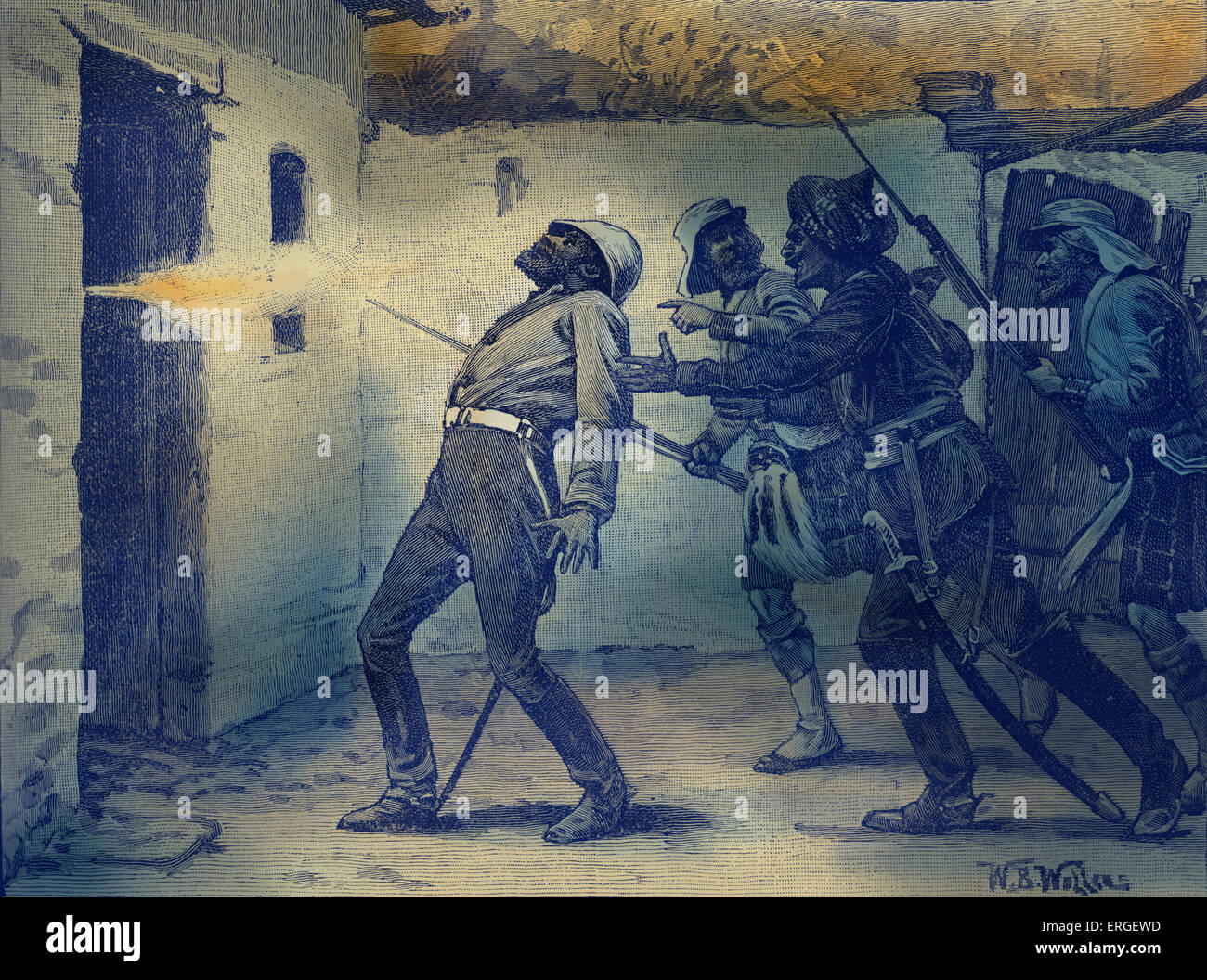 William Stephen Raikes Hodson 's death. British leader of irregular light cavalry during the Indian Rebellion of 1857 (also Stock Photohttps://www.alamy.com/image-license-details/?v=1https://www.alamy.com/stock-photo-william-stephen-raikes-hodson-s-death-british-leader-of-irregular-83341481.html
William Stephen Raikes Hodson 's death. British leader of irregular light cavalry during the Indian Rebellion of 1857 (also Stock Photohttps://www.alamy.com/image-license-details/?v=1https://www.alamy.com/stock-photo-william-stephen-raikes-hodson-s-death-british-leader-of-irregular-83341481.htmlRMERGEWD–William Stephen Raikes Hodson 's death. British leader of irregular light cavalry during the Indian Rebellion of 1857 (also
 WELD 1862 in India pg214 (049 Irregular Cavalry of the Hyderabad Contingent, Mounted) Stock Photohttps://www.alamy.com/image-license-details/?v=1https://www.alamy.com/stock-photo-weld-1862-in-india-pg214-049-irregular-cavalry-of-the-hyderabad-contingent-76871765.html
WELD 1862 in India pg214 (049 Irregular Cavalry of the Hyderabad Contingent, Mounted) Stock Photohttps://www.alamy.com/image-license-details/?v=1https://www.alamy.com/stock-photo-weld-1862-in-india-pg214-049-irregular-cavalry-of-the-hyderabad-contingent-76871765.htmlRMED1PM5–WELD 1862 in India pg214 (049 Irregular Cavalry of the Hyderabad Contingent, Mounted)
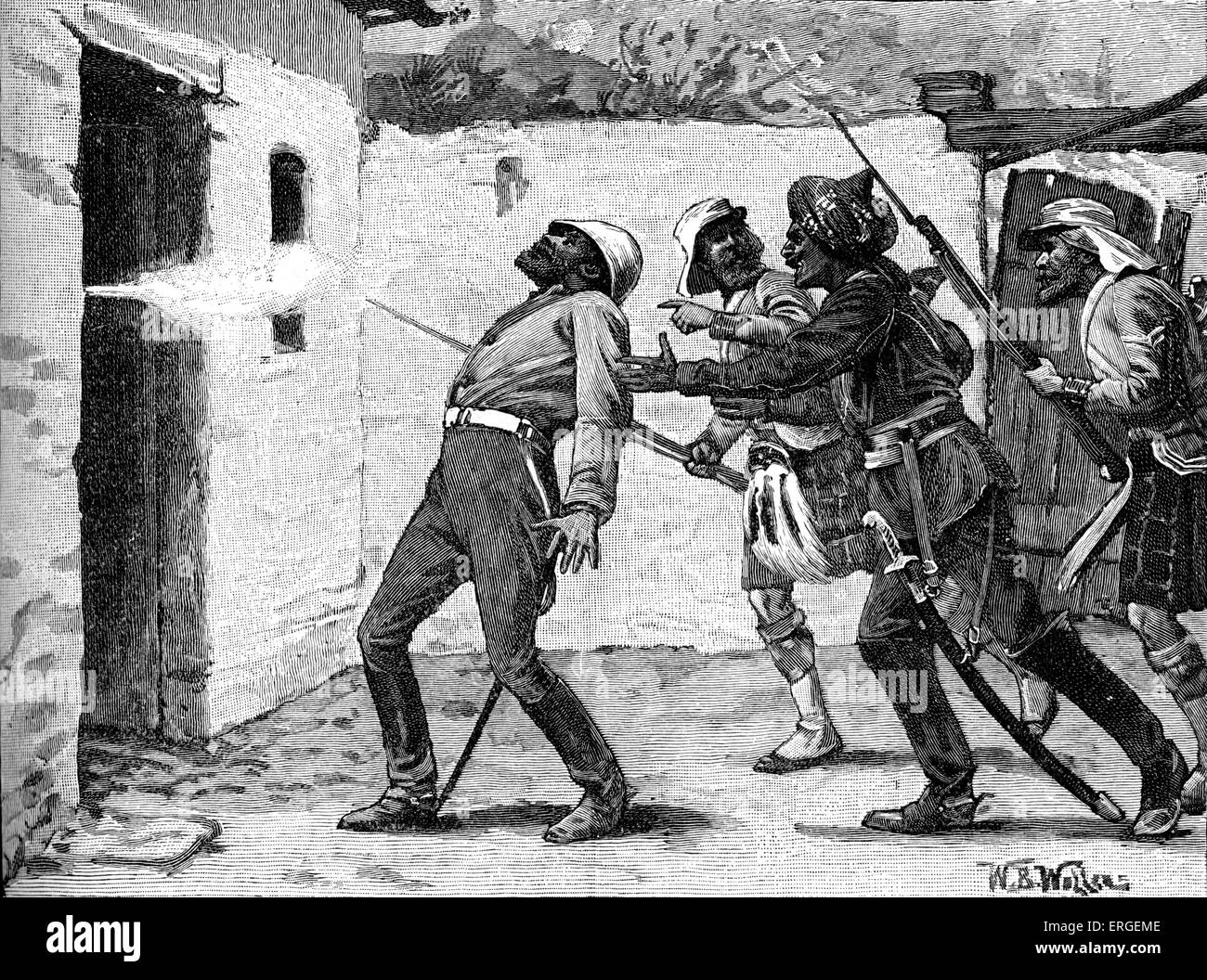 William Stephen Raikes Hodson 's death. British leader of irregular light cavalry during the Indian Rebellion of 1857 (also Stock Photohttps://www.alamy.com/image-license-details/?v=1https://www.alamy.com/stock-photo-william-stephen-raikes-hodson-s-death-british-leader-of-irregular-83341342.html
William Stephen Raikes Hodson 's death. British leader of irregular light cavalry during the Indian Rebellion of 1857 (also Stock Photohttps://www.alamy.com/image-license-details/?v=1https://www.alamy.com/stock-photo-william-stephen-raikes-hodson-s-death-british-leader-of-irregular-83341342.htmlRMERGEME–William Stephen Raikes Hodson 's death. British leader of irregular light cavalry during the Indian Rebellion of 1857 (also
 WELD 1862 in India pg214 (049 Irregular Cavalry of the Hyderabad Contingent, Mounted) Stock Photohttps://www.alamy.com/image-license-details/?v=1https://www.alamy.com/weld-1862-in-india-pg214-049-irregular-cavalry-of-the-hyderabad-contingent-image154724633.html
WELD 1862 in India pg214 (049 Irregular Cavalry of the Hyderabad Contingent, Mounted) Stock Photohttps://www.alamy.com/image-license-details/?v=1https://www.alamy.com/weld-1862-in-india-pg214-049-irregular-cavalry-of-the-hyderabad-contingent-image154724633.htmlRMJYM8RN–WELD 1862 in India pg214 (049 Irregular Cavalry of the Hyderabad Contingent, Mounted)
 The 1st Horse (Skinner's Horse) is a cavalry regiment of the Indian Army, which served in the British Indian Army before independence. The regiment was raised in 1803 as Skinner’s Horse by James Skinner ('Sikander Sahib') as an irregular cavalry regiment in the service of the East India Company. It was later renamed the 1st Bengal Lancers. The regiment became (and remains) one of the seniormost cavalry regiments of the Armoured Corps of the Indian Army. A second regiment of Indian Cavalry was raised by Colonel James Skinner in 1814, which became the 3rd Skinner's Horse. On the reduction of th Stock Photohttps://www.alamy.com/image-license-details/?v=1https://www.alamy.com/the-1st-horse-skinners-horse-is-a-cavalry-regiment-of-the-indian-army-which-served-in-the-british-indian-army-before-independence-the-regiment-was-raised-in-1803-as-skinners-horse-by-james-skinner-sikander-sahib-as-an-irregular-cavalry-regiment-in-the-service-of-the-east-india-company-it-was-later-renamed-the-1st-bengal-lancers-the-regiment-became-and-remains-one-of-the-seniormost-cavalry-regiments-of-the-armoured-corps-of-the-indian-army-a-second-regiment-of-indian-cavalry-was-raised-by-colonel-james-skinner-in-1814-which-became-the-3rd-skinners-horse-on-the-reduction-of-th-image344274424.html
The 1st Horse (Skinner's Horse) is a cavalry regiment of the Indian Army, which served in the British Indian Army before independence. The regiment was raised in 1803 as Skinner’s Horse by James Skinner ('Sikander Sahib') as an irregular cavalry regiment in the service of the East India Company. It was later renamed the 1st Bengal Lancers. The regiment became (and remains) one of the seniormost cavalry regiments of the Armoured Corps of the Indian Army. A second regiment of Indian Cavalry was raised by Colonel James Skinner in 1814, which became the 3rd Skinner's Horse. On the reduction of th Stock Photohttps://www.alamy.com/image-license-details/?v=1https://www.alamy.com/the-1st-horse-skinners-horse-is-a-cavalry-regiment-of-the-indian-army-which-served-in-the-british-indian-army-before-independence-the-regiment-was-raised-in-1803-as-skinners-horse-by-james-skinner-sikander-sahib-as-an-irregular-cavalry-regiment-in-the-service-of-the-east-india-company-it-was-later-renamed-the-1st-bengal-lancers-the-regiment-became-and-remains-one-of-the-seniormost-cavalry-regiments-of-the-armoured-corps-of-the-indian-army-a-second-regiment-of-indian-cavalry-was-raised-by-colonel-james-skinner-in-1814-which-became-the-3rd-skinners-horse-on-the-reduction-of-th-image344274424.htmlRM2B031F4–The 1st Horse (Skinner's Horse) is a cavalry regiment of the Indian Army, which served in the British Indian Army before independence. The regiment was raised in 1803 as Skinner’s Horse by James Skinner ('Sikander Sahib') as an irregular cavalry regiment in the service of the East India Company. It was later renamed the 1st Bengal Lancers. The regiment became (and remains) one of the seniormost cavalry regiments of the Armoured Corps of the Indian Army. A second regiment of Indian Cavalry was raised by Colonel James Skinner in 1814, which became the 3rd Skinner's Horse. On the reduction of th
 Seven officers of the irregular cavalry of Punjab, vintage engraved illustration. Magasin Pittoresque 1857. Stock Photohttps://www.alamy.com/image-license-details/?v=1https://www.alamy.com/seven-officers-of-the-irregular-cavalry-of-punjab-vintage-engraved-illustration-magasin-pittoresque-1857-image363152147.html
Seven officers of the irregular cavalry of Punjab, vintage engraved illustration. Magasin Pittoresque 1857. Stock Photohttps://www.alamy.com/image-license-details/?v=1https://www.alamy.com/seven-officers-of-the-irregular-cavalry-of-punjab-vintage-engraved-illustration-magasin-pittoresque-1857-image363152147.htmlRF2C2R07F–Seven officers of the irregular cavalry of Punjab, vintage engraved illustration. Magasin Pittoresque 1857.
 . English: 'Disarming the 11th Irregular Cavalry at Berhampore,' a steel engraving from 'History of the Indian Mutiny', 1858; click on the image for a very large scan . 1858. Vintage Print 141 Disarming the 11th Irregular Cavalry at Berhampore Stock Photohttps://www.alamy.com/image-license-details/?v=1https://www.alamy.com/english-disarming-the-11th-irregular-cavalry-at-berhampore-a-steel-engraving-from-history-of-the-indian-mutiny-1858-click-on-the-image-for-a-very-large-scan-1858-vintage-print-141-disarming-the-11th-irregular-cavalry-at-berhampore-image188993201.html
. English: 'Disarming the 11th Irregular Cavalry at Berhampore,' a steel engraving from 'History of the Indian Mutiny', 1858; click on the image for a very large scan . 1858. Vintage Print 141 Disarming the 11th Irregular Cavalry at Berhampore Stock Photohttps://www.alamy.com/image-license-details/?v=1https://www.alamy.com/english-disarming-the-11th-irregular-cavalry-at-berhampore-a-steel-engraving-from-history-of-the-indian-mutiny-1858-click-on-the-image-for-a-very-large-scan-1858-vintage-print-141-disarming-the-11th-irregular-cavalry-at-berhampore-image188993201.htmlRMMYDAN5–. English: 'Disarming the 11th Irregular Cavalry at Berhampore,' a steel engraving from 'History of the Indian Mutiny', 1858; click on the image for a very large scan . 1858. Vintage Print 141 Disarming the 11th Irregular Cavalry at Berhampore
 'Attack on the Sealkote mutineers by General Nicholson's Irregular cavalry', 1857, (c1860). Artist: Unknown Stock Photohttps://www.alamy.com/image-license-details/?v=1https://www.alamy.com/attack-on-the-sealkote-mutineers-by-general-nicholsons-irregular-cavalry-1857-c1860-artist-unknown-image262757313.html
'Attack on the Sealkote mutineers by General Nicholson's Irregular cavalry', 1857, (c1860). Artist: Unknown Stock Photohttps://www.alamy.com/image-license-details/?v=1https://www.alamy.com/attack-on-the-sealkote-mutineers-by-general-nicholsons-irregular-cavalry-1857-c1860-artist-unknown-image262757313.htmlRMW7DHHN–'Attack on the Sealkote mutineers by General Nicholson's Irregular cavalry', 1857, (c1860). Artist: Unknown
![Hodson's Horse at the battle of Rhotuck [William Stephen Raikes Hodson (19 March 1821 – 11 March 1858) was a British leader of irregular light cavalry during the Indian Rebellion of 1857, commonly referred to as the Indian Mutiny or the Sepoy Mutiny. He was known as 'Hodson of Hodson's Horse'] Lithograph from the book Campaign in India 1857-58 Illustrating the military operations before Delhi ; 26 Hand coloured Lithographed plates. by George Francklin Atkinson Published by Day & Son Lithographers to the Queen in 1859 Stock Photo Hodson's Horse at the battle of Rhotuck [William Stephen Raikes Hodson (19 March 1821 – 11 March 1858) was a British leader of irregular light cavalry during the Indian Rebellion of 1857, commonly referred to as the Indian Mutiny or the Sepoy Mutiny. He was known as 'Hodson of Hodson's Horse'] Lithograph from the book Campaign in India 1857-58 Illustrating the military operations before Delhi ; 26 Hand coloured Lithographed plates. by George Francklin Atkinson Published by Day & Son Lithographers to the Queen in 1859 Stock Photo](https://c8.alamy.com/comp/2D9JG24/hodsons-horse-at-the-battle-of-rhotuck-william-stephen-raikes-hodson-19-march-1821-11-march-1858-was-a-british-leader-of-irregular-light-cavalry-during-the-indian-rebellion-of-1857-commonly-referred-to-as-the-indian-mutiny-or-the-sepoy-mutiny-he-was-known-as-hodson-of-hodsons-horse-lithograph-from-the-book-campaign-in-india-1857-58-illustrating-the-military-operations-before-delhi-26-hand-coloured-lithographed-plates-by-george-francklin-atkinson-published-by-day-son-lithographers-to-the-queen-in-1859-2D9JG24.jpg) Hodson's Horse at the battle of Rhotuck [William Stephen Raikes Hodson (19 March 1821 – 11 March 1858) was a British leader of irregular light cavalry during the Indian Rebellion of 1857, commonly referred to as the Indian Mutiny or the Sepoy Mutiny. He was known as 'Hodson of Hodson's Horse'] Lithograph from the book Campaign in India 1857-58 Illustrating the military operations before Delhi ; 26 Hand coloured Lithographed plates. by George Francklin Atkinson Published by Day & Son Lithographers to the Queen in 1859 Stock Photohttps://www.alamy.com/image-license-details/?v=1https://www.alamy.com/hodsons-horse-at-the-battle-of-rhotuck-william-stephen-raikes-hodson-19-march-1821-11-march-1858-was-a-british-leader-of-irregular-light-cavalry-during-the-indian-rebellion-of-1857-commonly-referred-to-as-the-indian-mutiny-or-the-sepoy-mutiny-he-was-known-as-hodson-of-hodsons-horse-lithograph-from-the-book-campaign-in-india-1857-58-illustrating-the-military-operations-before-delhi-26-hand-coloured-lithographed-plates-by-george-francklin-atkinson-published-by-day-son-lithographers-to-the-queen-in-1859-image384567740.html
Hodson's Horse at the battle of Rhotuck [William Stephen Raikes Hodson (19 March 1821 – 11 March 1858) was a British leader of irregular light cavalry during the Indian Rebellion of 1857, commonly referred to as the Indian Mutiny or the Sepoy Mutiny. He was known as 'Hodson of Hodson's Horse'] Lithograph from the book Campaign in India 1857-58 Illustrating the military operations before Delhi ; 26 Hand coloured Lithographed plates. by George Francklin Atkinson Published by Day & Son Lithographers to the Queen in 1859 Stock Photohttps://www.alamy.com/image-license-details/?v=1https://www.alamy.com/hodsons-horse-at-the-battle-of-rhotuck-william-stephen-raikes-hodson-19-march-1821-11-march-1858-was-a-british-leader-of-irregular-light-cavalry-during-the-indian-rebellion-of-1857-commonly-referred-to-as-the-indian-mutiny-or-the-sepoy-mutiny-he-was-known-as-hodson-of-hodsons-horse-lithograph-from-the-book-campaign-in-india-1857-58-illustrating-the-military-operations-before-delhi-26-hand-coloured-lithographed-plates-by-george-francklin-atkinson-published-by-day-son-lithographers-to-the-queen-in-1859-image384567740.htmlRF2D9JG24–Hodson's Horse at the battle of Rhotuck [William Stephen Raikes Hodson (19 March 1821 – 11 March 1858) was a British leader of irregular light cavalry during the Indian Rebellion of 1857, commonly referred to as the Indian Mutiny or the Sepoy Mutiny. He was known as 'Hodson of Hodson's Horse'] Lithograph from the book Campaign in India 1857-58 Illustrating the military operations before Delhi ; 26 Hand coloured Lithographed plates. by George Francklin Atkinson Published by Day & Son Lithographers to the Queen in 1859
 Battle of Montiel, Spain, 1143. A mixed and irregular combat of French, Spaniards, Moors and Jews. Battle between the Christian army of Muno Alfonso and Almoravid Moors on the other. Woodcut after an illuminated manuscript from Sir John Froissart's Chronicles of England, France, Spain and the Adjoining Countries, from the Latter Part of the Reign of Edward II to the Coronation of Henry IV, George Routledge, London, 1868. Stock Photohttps://www.alamy.com/image-license-details/?v=1https://www.alamy.com/battle-of-montiel-spain-1143-a-mixed-and-irregular-combat-of-french-spaniards-moors-and-jews-battle-between-the-christian-army-of-muno-alfonso-and-almoravid-moors-on-the-other-woodcut-after-an-illuminated-manuscript-from-sir-john-froissarts-chronicles-of-england-france-spain-and-the-adjoining-countries-from-the-latter-part-of-the-reign-of-edward-ii-to-the-coronation-of-henry-iv-george-routledge-london-1868-image359074633.html
Battle of Montiel, Spain, 1143. A mixed and irregular combat of French, Spaniards, Moors and Jews. Battle between the Christian army of Muno Alfonso and Almoravid Moors on the other. Woodcut after an illuminated manuscript from Sir John Froissart's Chronicles of England, France, Spain and the Adjoining Countries, from the Latter Part of the Reign of Edward II to the Coronation of Henry IV, George Routledge, London, 1868. Stock Photohttps://www.alamy.com/image-license-details/?v=1https://www.alamy.com/battle-of-montiel-spain-1143-a-mixed-and-irregular-combat-of-french-spaniards-moors-and-jews-battle-between-the-christian-army-of-muno-alfonso-and-almoravid-moors-on-the-other-woodcut-after-an-illuminated-manuscript-from-sir-john-froissarts-chronicles-of-england-france-spain-and-the-adjoining-countries-from-the-latter-part-of-the-reign-of-edward-ii-to-the-coronation-of-henry-iv-george-routledge-london-1868-image359074633.htmlRM2BT57A1–Battle of Montiel, Spain, 1143. A mixed and irregular combat of French, Spaniards, Moors and Jews. Battle between the Christian army of Muno Alfonso and Almoravid Moors on the other. Woodcut after an illuminated manuscript from Sir John Froissart's Chronicles of England, France, Spain and the Adjoining Countries, from the Latter Part of the Reign of Edward II to the Coronation of Henry IV, George Routledge, London, 1868.
 Military and munity mutiny views attack on Sealkote mutineers by general Nicholson's Irregular Cavalry ; India Stock Photohttps://www.alamy.com/image-license-details/?v=1https://www.alamy.com/stock-photo-military-and-munity-mutiny-views-attack-on-sealkote-mutineers-by-general-83714115.html
Military and munity mutiny views attack on Sealkote mutineers by general Nicholson's Irregular Cavalry ; India Stock Photohttps://www.alamy.com/image-license-details/?v=1https://www.alamy.com/stock-photo-military-and-munity-mutiny-views-attack-on-sealkote-mutineers-by-general-83714115.htmlRMET5E5R–Military and munity mutiny views attack on Sealkote mutineers by general Nicholson's Irregular Cavalry ; India
 13th Duke of Connaughts's Regiment of Bengal Lancer, display team Stock Photohttps://www.alamy.com/image-license-details/?v=1https://www.alamy.com/stock-photo-13th-duke-of-connaughtss-regiment-of-bengal-lancer-display-team-72011617.html
13th Duke of Connaughts's Regiment of Bengal Lancer, display team Stock Photohttps://www.alamy.com/image-license-details/?v=1https://www.alamy.com/stock-photo-13th-duke-of-connaughtss-regiment-of-bengal-lancer-display-team-72011617.htmlRME54BFD–13th Duke of Connaughts's Regiment of Bengal Lancer, display team
 Battle of Montiel, Spain, 1143. A mixed and irregular combat of French, Spaniards, Moors and Jews. Battle between the Christian army of Muno Alfonso and Almoravid Moors on the other. Woodcut after an illuminated manuscript from Sir John Froissart's Chronicles of England, France, Spain and the Adjoining Countries, from the Latter Part of the Reign of Edward II to the Coronation of Henry IV, George Routledge, London, 1868. Stock Photohttps://www.alamy.com/image-license-details/?v=1https://www.alamy.com/battle-of-montiel-spain-1143-a-mixed-and-irregular-combat-of-french-spaniards-moors-and-jews-battle-between-the-christian-army-of-muno-alfonso-and-almoravid-moors-on-the-other-woodcut-after-an-illuminated-manuscript-from-sir-john-froissarts-chronicles-of-england-france-spain-and-the-adjoining-countries-from-the-latter-part-of-the-reign-of-edward-ii-to-the-coronation-of-henry-iv-george-routledge-london-1868-image273787893.html
Battle of Montiel, Spain, 1143. A mixed and irregular combat of French, Spaniards, Moors and Jews. Battle between the Christian army of Muno Alfonso and Almoravid Moors on the other. Woodcut after an illuminated manuscript from Sir John Froissart's Chronicles of England, France, Spain and the Adjoining Countries, from the Latter Part of the Reign of Edward II to the Coronation of Henry IV, George Routledge, London, 1868. Stock Photohttps://www.alamy.com/image-license-details/?v=1https://www.alamy.com/battle-of-montiel-spain-1143-a-mixed-and-irregular-combat-of-french-spaniards-moors-and-jews-battle-between-the-christian-army-of-muno-alfonso-and-almoravid-moors-on-the-other-woodcut-after-an-illuminated-manuscript-from-sir-john-froissarts-chronicles-of-england-france-spain-and-the-adjoining-countries-from-the-latter-part-of-the-reign-of-edward-ii-to-the-coronation-of-henry-iv-george-routledge-london-1868-image273787893.htmlRMWWC371–Battle of Montiel, Spain, 1143. A mixed and irregular combat of French, Spaniards, Moors and Jews. Battle between the Christian army of Muno Alfonso and Almoravid Moors on the other. Woodcut after an illuminated manuscript from Sir John Froissart's Chronicles of England, France, Spain and the Adjoining Countries, from the Latter Part of the Reign of Edward II to the Coronation of Henry IV, George Routledge, London, 1868.
 U.S. Army Soldiers from the 11th Armored Cavalry Regiment, acting as elements of the Donovian Army, watch for Rotational Training Unit forces from the top of a building July 2, 2022, in the city of Razish, National Training Center, Fort Irwin, Calif. During the training event, the 11th ACR Troopers defended the city against incoming Rotational Training Unit Forces using a variety of regular and irregular forces techniques designed to test adaptability and resilience. Stock Photohttps://www.alamy.com/image-license-details/?v=1https://www.alamy.com/us-army-soldiers-from-the-11th-armored-cavalry-regiment-acting-as-elements-of-the-donovian-army-watch-for-rotational-training-unit-forces-from-the-top-of-a-building-july-2-2022-in-the-city-of-razish-national-training-center-fort-irwin-calif-during-the-training-event-the-11th-acr-troopers-defended-the-city-against-incoming-rotational-training-unit-forces-using-a-variety-of-regular-and-irregular-forces-techniques-designed-to-test-adaptability-and-resilience-image475513228.html
U.S. Army Soldiers from the 11th Armored Cavalry Regiment, acting as elements of the Donovian Army, watch for Rotational Training Unit forces from the top of a building July 2, 2022, in the city of Razish, National Training Center, Fort Irwin, Calif. During the training event, the 11th ACR Troopers defended the city against incoming Rotational Training Unit Forces using a variety of regular and irregular forces techniques designed to test adaptability and resilience. Stock Photohttps://www.alamy.com/image-license-details/?v=1https://www.alamy.com/us-army-soldiers-from-the-11th-armored-cavalry-regiment-acting-as-elements-of-the-donovian-army-watch-for-rotational-training-unit-forces-from-the-top-of-a-building-july-2-2022-in-the-city-of-razish-national-training-center-fort-irwin-calif-during-the-training-event-the-11th-acr-troopers-defended-the-city-against-incoming-rotational-training-unit-forces-using-a-variety-of-regular-and-irregular-forces-techniques-designed-to-test-adaptability-and-resilience-image475513228.htmlRM2JHHDY8–U.S. Army Soldiers from the 11th Armored Cavalry Regiment, acting as elements of the Donovian Army, watch for Rotational Training Unit forces from the top of a building July 2, 2022, in the city of Razish, National Training Center, Fort Irwin, Calif. During the training event, the 11th ACR Troopers defended the city against incoming Rotational Training Unit Forces using a variety of regular and irregular forces techniques designed to test adaptability and resilience.
 Native Office, Punjab Irregular Cavalry, Felice Beato (English, born Italy, 1832 - 1909), India, 1858 - 1859, Albumen silver print, Reimagined by Gibon, design of warm cheerful glowing of brightness and light rays radiance. Classic art reinvented with a modern twist. Photography inspired by futurism, embracing dynamic energy of modern technology, movement, speed and revolutionize culture. Stock Photohttps://www.alamy.com/image-license-details/?v=1https://www.alamy.com/native-office-punjab-irregular-cavalry-felice-beato-english-born-italy-1832-1909-india-1858-1859-albumen-silver-print-reimagined-by-gibon-design-of-warm-cheerful-glowing-of-brightness-and-light-rays-radiance-classic-art-reinvented-with-a-modern-twist-photography-inspired-by-futurism-embracing-dynamic-energy-of-modern-technology-movement-speed-and-revolutionize-culture-image350072074.html
Native Office, Punjab Irregular Cavalry, Felice Beato (English, born Italy, 1832 - 1909), India, 1858 - 1859, Albumen silver print, Reimagined by Gibon, design of warm cheerful glowing of brightness and light rays radiance. Classic art reinvented with a modern twist. Photography inspired by futurism, embracing dynamic energy of modern technology, movement, speed and revolutionize culture. Stock Photohttps://www.alamy.com/image-license-details/?v=1https://www.alamy.com/native-office-punjab-irregular-cavalry-felice-beato-english-born-italy-1832-1909-india-1858-1859-albumen-silver-print-reimagined-by-gibon-design-of-warm-cheerful-glowing-of-brightness-and-light-rays-radiance-classic-art-reinvented-with-a-modern-twist-photography-inspired-by-futurism-embracing-dynamic-energy-of-modern-technology-movement-speed-and-revolutionize-culture-image350072074.htmlRF2B9F4E2–Native Office, Punjab Irregular Cavalry, Felice Beato (English, born Italy, 1832 - 1909), India, 1858 - 1859, Albumen silver print, Reimagined by Gibon, design of warm cheerful glowing of brightness and light rays radiance. Classic art reinvented with a modern twist. Photography inspired by futurism, embracing dynamic energy of modern technology, movement, speed and revolutionize culture.
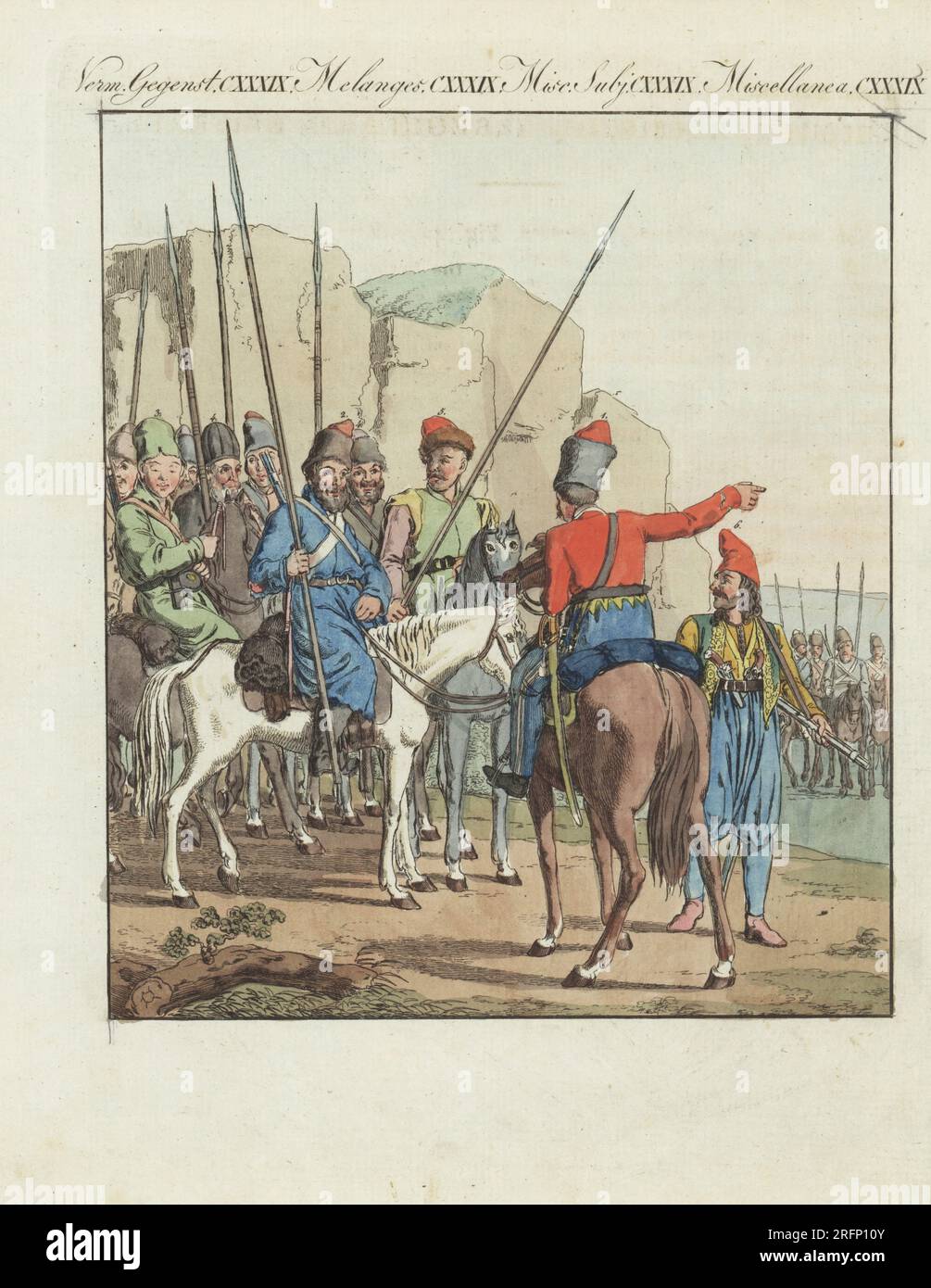 Russian irregular light horse. Officer 1 and cavalryman of the Don Cossacks, Kalmyk 3, Ural Cossack 4, Black Sea Cossack lancers 5, and Albanian infantryman with musket and pistols 6. Handcoloured copperplate engraving from Carl Bertuch's Bilderbuch fur Kinder (Picture Book for Children), Weimar, 1810. A 12-volume encyclopedia for children illustrated with almost 1,200 engraved plates on natural history, science, costume, mythology, etc., published from 1790-1830. Stock Photohttps://www.alamy.com/image-license-details/?v=1https://www.alamy.com/russian-irregular-light-horse-officer-1-and-cavalryman-of-the-don-cossacks-kalmyk-3-ural-cossack-4-black-sea-cossack-lancers-5-and-albanian-infantryman-with-musket-and-pistols-6-handcoloured-copperplate-engraving-from-carl-bertuchs-bilderbuch-fur-kinder-picture-book-for-children-weimar-1810-a-12-volume-encyclopedia-for-children-illustrated-with-almost-1200-engraved-plates-on-natural-history-science-costume-mythology-etc-published-from-1790-1830-image560435371.html
Russian irregular light horse. Officer 1 and cavalryman of the Don Cossacks, Kalmyk 3, Ural Cossack 4, Black Sea Cossack lancers 5, and Albanian infantryman with musket and pistols 6. Handcoloured copperplate engraving from Carl Bertuch's Bilderbuch fur Kinder (Picture Book for Children), Weimar, 1810. A 12-volume encyclopedia for children illustrated with almost 1,200 engraved plates on natural history, science, costume, mythology, etc., published from 1790-1830. Stock Photohttps://www.alamy.com/image-license-details/?v=1https://www.alamy.com/russian-irregular-light-horse-officer-1-and-cavalryman-of-the-don-cossacks-kalmyk-3-ural-cossack-4-black-sea-cossack-lancers-5-and-albanian-infantryman-with-musket-and-pistols-6-handcoloured-copperplate-engraving-from-carl-bertuchs-bilderbuch-fur-kinder-picture-book-for-children-weimar-1810-a-12-volume-encyclopedia-for-children-illustrated-with-almost-1200-engraved-plates-on-natural-history-science-costume-mythology-etc-published-from-1790-1830-image560435371.htmlRM2RFP10Y–Russian irregular light horse. Officer 1 and cavalryman of the Don Cossacks, Kalmyk 3, Ural Cossack 4, Black Sea Cossack lancers 5, and Albanian infantryman with musket and pistols 6. Handcoloured copperplate engraving from Carl Bertuch's Bilderbuch fur Kinder (Picture Book for Children), Weimar, 1810. A 12-volume encyclopedia for children illustrated with almost 1,200 engraved plates on natural history, science, costume, mythology, etc., published from 1790-1830.
 Kipling's India . o the throat of thelistener wherever he be by sea or land : the colonel rose, but his hand shook, and the port spilled on the table as he looked straight at the man . . and saidhoarsely, Mr. Vice, the Queen. There was a little pause, butthe man sprung to his feet and answered without hesitation, TheQueen, God bless her! and as he emptied the thin glass he snappedthe shank between his fingers. Peshawur and the Border saw the mutiny of theNative Irregular Cavalry (The Lost Legion), whowere afterward hunted to their death by the Afghanswhile they rode stumbling and rocking in th Stock Photohttps://www.alamy.com/image-license-details/?v=1https://www.alamy.com/kiplings-india-o-the-throat-of-thelistener-wherever-he-be-by-sea-or-land-the-colonel-rose-but-his-hand-shook-and-the-port-spilled-on-the-table-as-he-looked-straight-at-the-man-and-saidhoarsely-mr-vice-the-queen-there-was-a-little-pause-butthe-man-sprung-to-his-feet-and-answered-without-hesitation-thequeen-god-bless-her!-and-as-he-emptied-the-thin-glass-he-snappedthe-shank-between-his-fingers-peshawur-and-the-border-saw-the-mutiny-of-thenative-irregular-cavalry-the-lost-legion-whowere-afterward-hunted-to-their-death-by-the-afghanswhile-they-rode-stumbling-and-rocking-in-th-image340112760.html
Kipling's India . o the throat of thelistener wherever he be by sea or land : the colonel rose, but his hand shook, and the port spilled on the table as he looked straight at the man . . and saidhoarsely, Mr. Vice, the Queen. There was a little pause, butthe man sprung to his feet and answered without hesitation, TheQueen, God bless her! and as he emptied the thin glass he snappedthe shank between his fingers. Peshawur and the Border saw the mutiny of theNative Irregular Cavalry (The Lost Legion), whowere afterward hunted to their death by the Afghanswhile they rode stumbling and rocking in th Stock Photohttps://www.alamy.com/image-license-details/?v=1https://www.alamy.com/kiplings-india-o-the-throat-of-thelistener-wherever-he-be-by-sea-or-land-the-colonel-rose-but-his-hand-shook-and-the-port-spilled-on-the-table-as-he-looked-straight-at-the-man-and-saidhoarsely-mr-vice-the-queen-there-was-a-little-pause-butthe-man-sprung-to-his-feet-and-answered-without-hesitation-thequeen-god-bless-her!-and-as-he-emptied-the-thin-glass-he-snappedthe-shank-between-his-fingers-peshawur-and-the-border-saw-the-mutiny-of-thenative-irregular-cavalry-the-lost-legion-whowere-afterward-hunted-to-their-death-by-the-afghanswhile-they-rode-stumbling-and-rocking-in-th-image340112760.htmlRM2AN9D88–Kipling's India . o the throat of thelistener wherever he be by sea or land : the colonel rose, but his hand shook, and the port spilled on the table as he looked straight at the man . . and saidhoarsely, Mr. Vice, the Queen. There was a little pause, butthe man sprung to his feet and answered without hesitation, TheQueen, God bless her! and as he emptied the thin glass he snappedthe shank between his fingers. Peshawur and the Border saw the mutiny of theNative Irregular Cavalry (The Lost Legion), whowere afterward hunted to their death by the Afghanswhile they rode stumbling and rocking in th
 DISARMING SEPOYS/1857 Stock Photohttps://www.alamy.com/image-license-details/?v=1https://www.alamy.com/stock-photo-disarming-sepoys1857-56714216.html
DISARMING SEPOYS/1857 Stock Photohttps://www.alamy.com/image-license-details/?v=1https://www.alamy.com/stock-photo-disarming-sepoys1857-56714216.htmlRMD87FFM–DISARMING SEPOYS/1857
 The Eastern Question. Serbian-Turkish Wars (1876-1878). Serbia declared war on the Ottoman Empire on June 30, 1876. The April Uprising of 1876 was experienced with strong repression by the Turkish authorities in Bulgaria. Bashi-Bazuoks and Circassians burning a Christian village and stabbing its inhabitants. The Bashi-bazouks were units of irregular volunteers, both infantry and cavalry, attached to the Turkish army but under independent officers. Engraving. La Ilustracion Española y Americana, August 30, 1876. Stock Photohttps://www.alamy.com/image-license-details/?v=1https://www.alamy.com/the-eastern-question-serbian-turkish-wars-1876-1878-serbia-declared-war-on-the-ottoman-empire-on-june-30-1876-the-april-uprising-of-1876-was-experienced-with-strong-repression-by-the-turkish-authorities-in-bulgaria-bashi-bazuoks-and-circassians-burning-a-christian-village-and-stabbing-its-inhabitants-the-bashi-bazouks-were-units-of-irregular-volunteers-both-infantry-and-cavalry-attached-to-the-turkish-army-but-under-independent-officers-engraving-la-ilustracion-espaola-y-americana-august-30-1876-image265225697.html
The Eastern Question. Serbian-Turkish Wars (1876-1878). Serbia declared war on the Ottoman Empire on June 30, 1876. The April Uprising of 1876 was experienced with strong repression by the Turkish authorities in Bulgaria. Bashi-Bazuoks and Circassians burning a Christian village and stabbing its inhabitants. The Bashi-bazouks were units of irregular volunteers, both infantry and cavalry, attached to the Turkish army but under independent officers. Engraving. La Ilustracion Española y Americana, August 30, 1876. Stock Photohttps://www.alamy.com/image-license-details/?v=1https://www.alamy.com/the-eastern-question-serbian-turkish-wars-1876-1878-serbia-declared-war-on-the-ottoman-empire-on-june-30-1876-the-april-uprising-of-1876-was-experienced-with-strong-repression-by-the-turkish-authorities-in-bulgaria-bashi-bazuoks-and-circassians-burning-a-christian-village-and-stabbing-its-inhabitants-the-bashi-bazouks-were-units-of-irregular-volunteers-both-infantry-and-cavalry-attached-to-the-turkish-army-but-under-independent-officers-engraving-la-ilustracion-espaola-y-americana-august-30-1876-image265225697.htmlRMWBE229–The Eastern Question. Serbian-Turkish Wars (1876-1878). Serbia declared war on the Ottoman Empire on June 30, 1876. The April Uprising of 1876 was experienced with strong repression by the Turkish authorities in Bulgaria. Bashi-Bazuoks and Circassians burning a Christian village and stabbing its inhabitants. The Bashi-bazouks were units of irregular volunteers, both infantry and cavalry, attached to the Turkish army but under independent officers. Engraving. La Ilustracion Española y Americana, August 30, 1876.
 U.S. Army Soldiers from the 11th Armored Cavalry Regiment, acting as elements of the Donovian Army, watch for Rotational Training Unit forces from the top of a building July 2, 2022, in the city of Razish, National Training Center, Fort Irwin, Calif. During the training event, the 11th ACR Troopers defended the city against incoming Rotational Training Unit Forces using a variety of regular and irregular forces techniques designed to test adaptability and resilience. Stock Photohttps://www.alamy.com/image-license-details/?v=1https://www.alamy.com/us-army-soldiers-from-the-11th-armored-cavalry-regiment-acting-as-elements-of-the-donovian-army-watch-for-rotational-training-unit-forces-from-the-top-of-a-building-july-2-2022-in-the-city-of-razish-national-training-center-fort-irwin-calif-during-the-training-event-the-11th-acr-troopers-defended-the-city-against-incoming-rotational-training-unit-forces-using-a-variety-of-regular-and-irregular-forces-techniques-designed-to-test-adaptability-and-resilience-image506858330.html
U.S. Army Soldiers from the 11th Armored Cavalry Regiment, acting as elements of the Donovian Army, watch for Rotational Training Unit forces from the top of a building July 2, 2022, in the city of Razish, National Training Center, Fort Irwin, Calif. During the training event, the 11th ACR Troopers defended the city against incoming Rotational Training Unit Forces using a variety of regular and irregular forces techniques designed to test adaptability and resilience. Stock Photohttps://www.alamy.com/image-license-details/?v=1https://www.alamy.com/us-army-soldiers-from-the-11th-armored-cavalry-regiment-acting-as-elements-of-the-donovian-army-watch-for-rotational-training-unit-forces-from-the-top-of-a-building-july-2-2022-in-the-city-of-razish-national-training-center-fort-irwin-calif-during-the-training-event-the-11th-acr-troopers-defended-the-city-against-incoming-rotational-training-unit-forces-using-a-variety-of-regular-and-irregular-forces-techniques-designed-to-test-adaptability-and-resilience-image506858330.htmlRM2MCHAY6–U.S. Army Soldiers from the 11th Armored Cavalry Regiment, acting as elements of the Donovian Army, watch for Rotational Training Unit forces from the top of a building July 2, 2022, in the city of Razish, National Training Center, Fort Irwin, Calif. During the training event, the 11th ACR Troopers defended the city against incoming Rotational Training Unit Forces using a variety of regular and irregular forces techniques designed to test adaptability and resilience.
 WELD 1862 in India pg218 (050 . Irregular Cavalry of the Hyderabad Contingent Dismounted) Stock Photohttps://www.alamy.com/image-license-details/?v=1https://www.alamy.com/stock-photo-weld-1862-in-india-pg218-050-irregular-cavalry-of-the-hyderabad-contingent-76871766.html
WELD 1862 in India pg218 (050 . Irregular Cavalry of the Hyderabad Contingent Dismounted) Stock Photohttps://www.alamy.com/image-license-details/?v=1https://www.alamy.com/stock-photo-weld-1862-in-india-pg218-050-irregular-cavalry-of-the-hyderabad-contingent-76871766.htmlRMED1PM6–WELD 1862 in India pg218 (050 . Irregular Cavalry of the Hyderabad Contingent Dismounted)
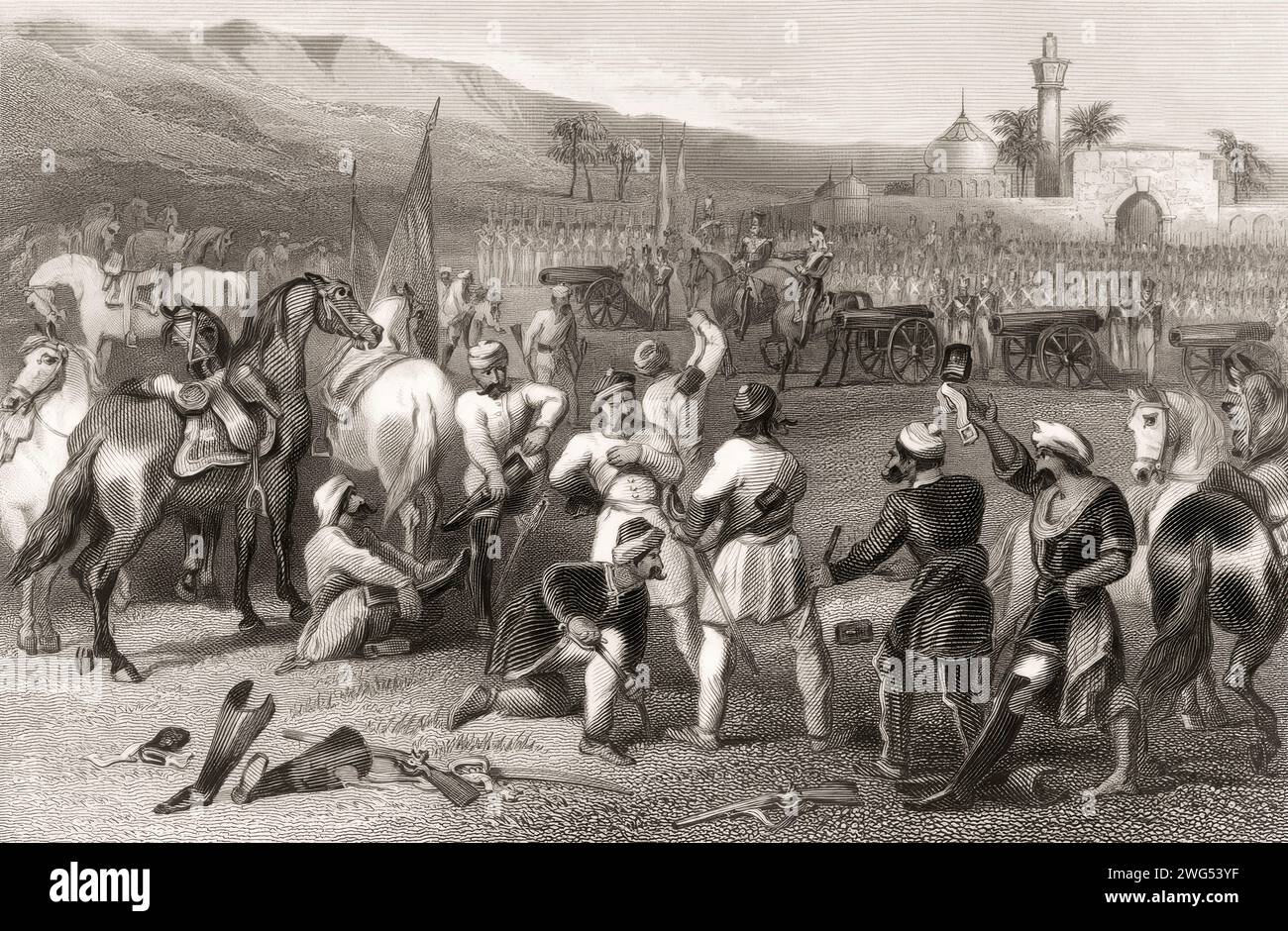 The disarming of cavalry of soldiers by the British units at Berhampur, Berhampore, Indian Mutiny, 1858 Stock Photohttps://www.alamy.com/image-license-details/?v=1https://www.alamy.com/the-disarming-of-cavalry-of-soldiers-by-the-british-units-at-berhampur-berhampore-indian-mutiny-1858-image595099891.html
The disarming of cavalry of soldiers by the British units at Berhampur, Berhampore, Indian Mutiny, 1858 Stock Photohttps://www.alamy.com/image-license-details/?v=1https://www.alamy.com/the-disarming-of-cavalry-of-soldiers-by-the-british-units-at-berhampur-berhampore-indian-mutiny-1858-image595099891.htmlRM2WG53YF–The disarming of cavalry of soldiers by the British units at Berhampur, Berhampore, Indian Mutiny, 1858
 WELD 1862 in India pg222 (051 Commandant of Irregular Cavalry receiving the Morning Report) Stock Photohttps://www.alamy.com/image-license-details/?v=1https://www.alamy.com/weld-1862-in-india-pg222-051-commandant-of-irregular-cavalry-receiving-image154724636.html
WELD 1862 in India pg222 (051 Commandant of Irregular Cavalry receiving the Morning Report) Stock Photohttps://www.alamy.com/image-license-details/?v=1https://www.alamy.com/weld-1862-in-india-pg222-051-commandant-of-irregular-cavalry-receiving-image154724636.htmlRMJYM8RT–WELD 1862 in India pg222 (051 Commandant of Irregular Cavalry receiving the Morning Report)
 The 1st Horse (Skinner's Horse) is a cavalry regiment of the Indian Army, which served in the British Indian Army before independence. The regiment was raised in 1803 as Skinner’s Horse by James Skinner ('Sikander Sahib') as an irregular cavalry regiment in the service of the East India Company. It was later renamed the 1st Bengal Lancers. The regiment became (and remains) one of the seniormost cavalry regiments of the Armoured Corps of the Indian Army. A second regiment of Indian Cavalry was raised by Colonel James Skinner in 1814, which became the 3rd Skinner's Horse. On the reduction of th Stock Photohttps://www.alamy.com/image-license-details/?v=1https://www.alamy.com/the-1st-horse-skinners-horse-is-a-cavalry-regiment-of-the-indian-army-which-served-in-the-british-indian-army-before-independence-the-regiment-was-raised-in-1803-as-skinners-horse-by-james-skinner-sikander-sahib-as-an-irregular-cavalry-regiment-in-the-service-of-the-east-india-company-it-was-later-renamed-the-1st-bengal-lancers-the-regiment-became-and-remains-one-of-the-seniormost-cavalry-regiments-of-the-armoured-corps-of-the-indian-army-a-second-regiment-of-indian-cavalry-was-raised-by-colonel-james-skinner-in-1814-which-became-the-3rd-skinners-horse-on-the-reduction-of-th-image344274425.html
The 1st Horse (Skinner's Horse) is a cavalry regiment of the Indian Army, which served in the British Indian Army before independence. The regiment was raised in 1803 as Skinner’s Horse by James Skinner ('Sikander Sahib') as an irregular cavalry regiment in the service of the East India Company. It was later renamed the 1st Bengal Lancers. The regiment became (and remains) one of the seniormost cavalry regiments of the Armoured Corps of the Indian Army. A second regiment of Indian Cavalry was raised by Colonel James Skinner in 1814, which became the 3rd Skinner's Horse. On the reduction of th Stock Photohttps://www.alamy.com/image-license-details/?v=1https://www.alamy.com/the-1st-horse-skinners-horse-is-a-cavalry-regiment-of-the-indian-army-which-served-in-the-british-indian-army-before-independence-the-regiment-was-raised-in-1803-as-skinners-horse-by-james-skinner-sikander-sahib-as-an-irregular-cavalry-regiment-in-the-service-of-the-east-india-company-it-was-later-renamed-the-1st-bengal-lancers-the-regiment-became-and-remains-one-of-the-seniormost-cavalry-regiments-of-the-armoured-corps-of-the-indian-army-a-second-regiment-of-indian-cavalry-was-raised-by-colonel-james-skinner-in-1814-which-became-the-3rd-skinners-horse-on-the-reduction-of-th-image344274425.htmlRM2B031F5–The 1st Horse (Skinner's Horse) is a cavalry regiment of the Indian Army, which served in the British Indian Army before independence. The regiment was raised in 1803 as Skinner’s Horse by James Skinner ('Sikander Sahib') as an irregular cavalry regiment in the service of the East India Company. It was later renamed the 1st Bengal Lancers. The regiment became (and remains) one of the seniormost cavalry regiments of the Armoured Corps of the Indian Army. A second regiment of Indian Cavalry was raised by Colonel James Skinner in 1814, which became the 3rd Skinner's Horse. On the reduction of th
 Illustration entitled, ' The Battle of Monteil - A mixed an irregular combat of French, Spaniards, Moors and Jews. Designed from various MS. authorities in the Harlcian and Cottonian Libraries.' Stock Photohttps://www.alamy.com/image-license-details/?v=1https://www.alamy.com/illustration-entitled-the-battle-of-monteil-a-mixed-an-irregular-combat-of-french-spaniards-moors-and-jews-designed-from-various-ms-authorities-in-the-harlcian-and-cottonian-libraries-image213505409.html
Illustration entitled, ' The Battle of Monteil - A mixed an irregular combat of French, Spaniards, Moors and Jews. Designed from various MS. authorities in the Harlcian and Cottonian Libraries.' Stock Photohttps://www.alamy.com/image-license-details/?v=1https://www.alamy.com/illustration-entitled-the-battle-of-monteil-a-mixed-an-irregular-combat-of-french-spaniards-moors-and-jews-designed-from-various-ms-authorities-in-the-harlcian-and-cottonian-libraries-image213505409.htmlRMPBA095–Illustration entitled, ' The Battle of Monteil - A mixed an irregular combat of French, Spaniards, Moors and Jews. Designed from various MS. authorities in the Harlcian and Cottonian Libraries.'
 . English: 'Disarming the 11th Irregular Cavalry at Berhampore,' a steel engraving from 'History of the Indian Mutiny', 1858; click on the image for a very large scan . 1858. Vintage Print 164 Disarming the 11th Irregular Cavalry at Berhampore Stock Photohttps://www.alamy.com/image-license-details/?v=1https://www.alamy.com/english-disarming-the-11th-irregular-cavalry-at-berhampore-a-steel-engraving-from-history-of-the-indian-mutiny-1858-click-on-the-image-for-a-very-large-scan-1858-vintage-print-164-disarming-the-11th-irregular-cavalry-at-berhampore-image187722649.html
. English: 'Disarming the 11th Irregular Cavalry at Berhampore,' a steel engraving from 'History of the Indian Mutiny', 1858; click on the image for a very large scan . 1858. Vintage Print 164 Disarming the 11th Irregular Cavalry at Berhampore Stock Photohttps://www.alamy.com/image-license-details/?v=1https://www.alamy.com/english-disarming-the-11th-irregular-cavalry-at-berhampore-a-steel-engraving-from-history-of-the-indian-mutiny-1858-click-on-the-image-for-a-very-large-scan-1858-vintage-print-164-disarming-the-11th-irregular-cavalry-at-berhampore-image187722649.htmlRMMWBE49–. English: 'Disarming the 11th Irregular Cavalry at Berhampore,' a steel engraving from 'History of the Indian Mutiny', 1858; click on the image for a very large scan . 1858. Vintage Print 164 Disarming the 11th Irregular Cavalry at Berhampore
!['Native Officers of the Bengal Irregular Cavalry', c1891. From "Cassell's Illustrated History of India Vol. II.", by James Grant. [Cassell Petter & Galpin, London, Paris and New York] Stock Photo 'Native Officers of the Bengal Irregular Cavalry', c1891. From "Cassell's Illustrated History of India Vol. II.", by James Grant. [Cassell Petter & Galpin, London, Paris and New York] Stock Photo](https://c8.alamy.com/comp/2J897W4/native-officers-of-the-bengal-irregular-cavalry-c1891-from-quotcassells-illustrated-history-of-india-vol-iiquot-by-james-grant-cassell-petter-amp-galpin-london-paris-and-new-york-2J897W4.jpg) 'Native Officers of the Bengal Irregular Cavalry', c1891. From "Cassell's Illustrated History of India Vol. II.", by James Grant. [Cassell Petter & Galpin, London, Paris and New York] Stock Photohttps://www.alamy.com/image-license-details/?v=1https://www.alamy.com/native-officers-of-the-bengal-irregular-cavalry-c1891-from-quotcassells-illustrated-history-of-india-vol-iiquot-by-james-grant-cassell-petter-amp-galpin-london-paris-and-new-york-image469800944.html
'Native Officers of the Bengal Irregular Cavalry', c1891. From "Cassell's Illustrated History of India Vol. II.", by James Grant. [Cassell Petter & Galpin, London, Paris and New York] Stock Photohttps://www.alamy.com/image-license-details/?v=1https://www.alamy.com/native-officers-of-the-bengal-irregular-cavalry-c1891-from-quotcassells-illustrated-history-of-india-vol-iiquot-by-james-grant-cassell-petter-amp-galpin-london-paris-and-new-york-image469800944.htmlRM2J897W4–'Native Officers of the Bengal Irregular Cavalry', c1891. From "Cassell's Illustrated History of India Vol. II.", by James Grant. [Cassell Petter & Galpin, London, Paris and New York]
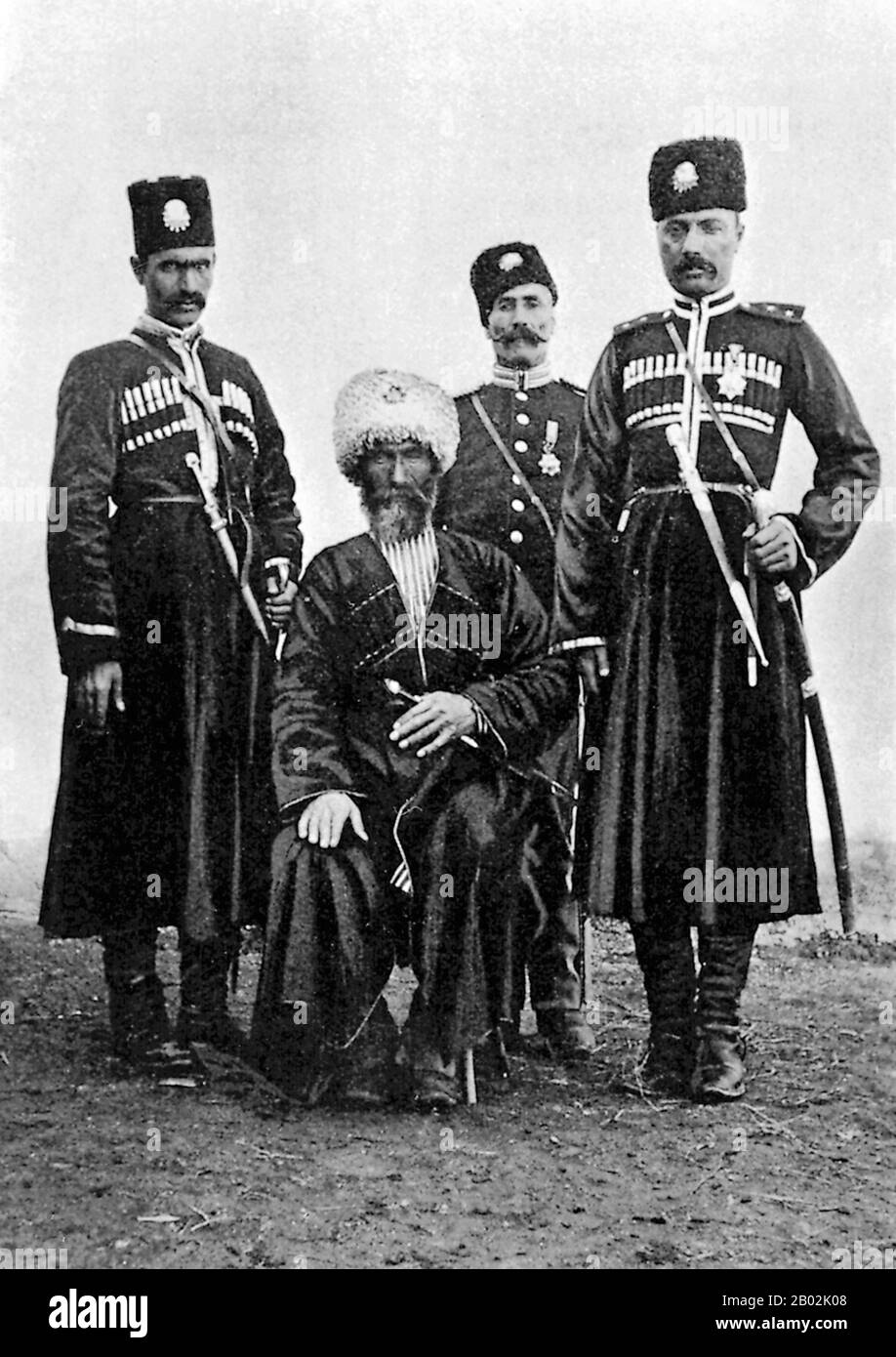 The Hamidiye corps, full official name Hamidiye hafif süvari alayları, Hamidiye light cavalry regiments, were well-armed, irregular Sunni Kurdish, Turkish, Turkmen and Yörük, also Arab cavalry formations that operated in the eastern provinces of the Ottoman Empire. Established by and named after Sultan Abdul Hamid II in 1891, they were intended to be modeled after the Russian Cossacks and were supposedly tasked to patrol the Russo-Ottoman frontier. However, the Hamidiye were more often used by the Ottoman authorities to harass and assault Armenians living in Turkish Armenia. A major role in Stock Photohttps://www.alamy.com/image-license-details/?v=1https://www.alamy.com/the-hamidiye-corps-full-official-name-hamidiye-hafif-svari-alaylar-hamidiye-light-cavalry-regiments-were-well-armed-irregular-sunni-kurdish-turkish-turkmen-and-yrk-also-arab-cavalry-formations-that-operated-in-the-eastern-provinces-of-the-ottoman-empire-established-by-and-named-after-sultan-abdul-hamid-ii-in-1891-they-were-intended-to-be-modeled-after-the-russian-cossacks-and-were-supposedly-tasked-to-patrol-the-russo-ottoman-frontier-however-the-hamidiye-were-more-often-used-by-the-ottoman-authorities-to-harass-and-assault-armenians-living-in-turkish-armenia-a-major-role-in-image344266168.html
The Hamidiye corps, full official name Hamidiye hafif süvari alayları, Hamidiye light cavalry regiments, were well-armed, irregular Sunni Kurdish, Turkish, Turkmen and Yörük, also Arab cavalry formations that operated in the eastern provinces of the Ottoman Empire. Established by and named after Sultan Abdul Hamid II in 1891, they were intended to be modeled after the Russian Cossacks and were supposedly tasked to patrol the Russo-Ottoman frontier. However, the Hamidiye were more often used by the Ottoman authorities to harass and assault Armenians living in Turkish Armenia. A major role in Stock Photohttps://www.alamy.com/image-license-details/?v=1https://www.alamy.com/the-hamidiye-corps-full-official-name-hamidiye-hafif-svari-alaylar-hamidiye-light-cavalry-regiments-were-well-armed-irregular-sunni-kurdish-turkish-turkmen-and-yrk-also-arab-cavalry-formations-that-operated-in-the-eastern-provinces-of-the-ottoman-empire-established-by-and-named-after-sultan-abdul-hamid-ii-in-1891-they-were-intended-to-be-modeled-after-the-russian-cossacks-and-were-supposedly-tasked-to-patrol-the-russo-ottoman-frontier-however-the-hamidiye-were-more-often-used-by-the-ottoman-authorities-to-harass-and-assault-armenians-living-in-turkish-armenia-a-major-role-in-image344266168.htmlRM2B02K08–The Hamidiye corps, full official name Hamidiye hafif süvari alayları, Hamidiye light cavalry regiments, were well-armed, irregular Sunni Kurdish, Turkish, Turkmen and Yörük, also Arab cavalry formations that operated in the eastern provinces of the Ottoman Empire. Established by and named after Sultan Abdul Hamid II in 1891, they were intended to be modeled after the Russian Cossacks and were supposedly tasked to patrol the Russo-Ottoman frontier. However, the Hamidiye were more often used by the Ottoman authorities to harass and assault Armenians living in Turkish Armenia. A major role in
![Portrait of Russaldar Mohbut Khan, Jacob's Scinde Irregular Horse. Coloured lithograph by G B Black after A Svoboda. . [Portrait of Russaldar Mohbut Khan, Jacob's Scinde Irregular Horse.]. Published in London, 1852. Source: P1430. Author: Black, G. B. Stock Photo Portrait of Russaldar Mohbut Khan, Jacob's Scinde Irregular Horse. Coloured lithograph by G B Black after A Svoboda. . [Portrait of Russaldar Mohbut Khan, Jacob's Scinde Irregular Horse.]. Published in London, 1852. Source: P1430. Author: Black, G. B. Stock Photo](https://c8.alamy.com/comp/R5J6JM/portrait-of-russaldar-mohbut-khan-jacobs-scinde-irregular-horse-coloured-lithograph-by-g-b-black-after-a-svoboda-portrait-of-russaldar-mohbut-khan-jacobs-scinde-irregular-horse-published-in-london-1852-source-p1430-author-black-g-b-R5J6JM.jpg) Portrait of Russaldar Mohbut Khan, Jacob's Scinde Irregular Horse. Coloured lithograph by G B Black after A Svoboda. . [Portrait of Russaldar Mohbut Khan, Jacob's Scinde Irregular Horse.]. Published in London, 1852. Source: P1430. Author: Black, G. B. Stock Photohttps://www.alamy.com/image-license-details/?v=1https://www.alamy.com/portrait-of-russaldar-mohbut-khan-jacobs-scinde-irregular-horse-coloured-lithograph-by-g-b-black-after-a-svoboda-portrait-of-russaldar-mohbut-khan-jacobs-scinde-irregular-horse-published-in-london-1852-source-p1430-author-black-g-b-image227208428.html
Portrait of Russaldar Mohbut Khan, Jacob's Scinde Irregular Horse. Coloured lithograph by G B Black after A Svoboda. . [Portrait of Russaldar Mohbut Khan, Jacob's Scinde Irregular Horse.]. Published in London, 1852. Source: P1430. Author: Black, G. B. Stock Photohttps://www.alamy.com/image-license-details/?v=1https://www.alamy.com/portrait-of-russaldar-mohbut-khan-jacobs-scinde-irregular-horse-coloured-lithograph-by-g-b-black-after-a-svoboda-portrait-of-russaldar-mohbut-khan-jacobs-scinde-irregular-horse-published-in-london-1852-source-p1430-author-black-g-b-image227208428.htmlRMR5J6JM–Portrait of Russaldar Mohbut Khan, Jacob's Scinde Irregular Horse. Coloured lithograph by G B Black after A Svoboda. . [Portrait of Russaldar Mohbut Khan, Jacob's Scinde Irregular Horse.]. Published in London, 1852. Source: P1430. Author: Black, G. B.
 Military and munity mutiny views arrival of contingency force of Sikh irregular cavalry ; India Stock Photohttps://www.alamy.com/image-license-details/?v=1https://www.alamy.com/stock-photo-military-and-munity-mutiny-views-arrival-of-contingency-force-of-sikh-83714095.html
Military and munity mutiny views arrival of contingency force of Sikh irregular cavalry ; India Stock Photohttps://www.alamy.com/image-license-details/?v=1https://www.alamy.com/stock-photo-military-and-munity-mutiny-views-arrival-of-contingency-force-of-sikh-83714095.htmlRMET5E53–Military and munity mutiny views arrival of contingency force of Sikh irregular cavalry ; India
 13th Duke of Connaughts's Regiment of Bengal Lancer, display team Stock Photohttps://www.alamy.com/image-license-details/?v=1https://www.alamy.com/stock-photo-13th-duke-of-connaughtss-regiment-of-bengal-lancer-display-team-72011594.html
13th Duke of Connaughts's Regiment of Bengal Lancer, display team Stock Photohttps://www.alamy.com/image-license-details/?v=1https://www.alamy.com/stock-photo-13th-duke-of-connaughtss-regiment-of-bengal-lancer-display-team-72011594.htmlRME54BEJ–13th Duke of Connaughts's Regiment of Bengal Lancer, display team
 Turkish Zeibek Wedding - Istanbul, Turkey Stock Photohttps://www.alamy.com/image-license-details/?v=1https://www.alamy.com/stock-photo-turkish-zeibek-wedding-istanbul-turkey-105369714.html
Turkish Zeibek Wedding - Istanbul, Turkey Stock Photohttps://www.alamy.com/image-license-details/?v=1https://www.alamy.com/stock-photo-turkish-zeibek-wedding-istanbul-turkey-105369714.htmlRMG3C042–Turkish Zeibek Wedding - Istanbul, Turkey
 A Trooper from Killer Troop, 2nd Squadron, 11th Armored Cavalry Regiment fires a simulated a Tube-launched, Optically tracked, Wire-guided missile at a 1st Stryker Brigade Combat Team, 1st Armored Division target, Nov. 4, 2016. The purpose of this phase of the rotation was to test the 1st SBCT’s ability to stage a deliberate defense against a near-peer force while also presenting them with an irregular threat in the area to be defended. Stock Photohttps://www.alamy.com/image-license-details/?v=1https://www.alamy.com/a-trooper-from-killer-troop-2nd-squadron-11th-armored-cavalry-regiment-fires-a-simulated-a-tube-launched-optically-tracked-wire-guided-missile-at-a-1st-stryker-brigade-combat-team-1st-armored-division-target-nov-4-2016-the-purpose-of-this-phase-of-the-rotation-was-to-test-the-1st-sbcts-ability-to-stage-a-deliberate-defense-against-a-near-peer-force-while-also-presenting-them-with-an-irregular-threat-in-the-area-to-be-defended-image235001177.html
A Trooper from Killer Troop, 2nd Squadron, 11th Armored Cavalry Regiment fires a simulated a Tube-launched, Optically tracked, Wire-guided missile at a 1st Stryker Brigade Combat Team, 1st Armored Division target, Nov. 4, 2016. The purpose of this phase of the rotation was to test the 1st SBCT’s ability to stage a deliberate defense against a near-peer force while also presenting them with an irregular threat in the area to be defended. Stock Photohttps://www.alamy.com/image-license-details/?v=1https://www.alamy.com/a-trooper-from-killer-troop-2nd-squadron-11th-armored-cavalry-regiment-fires-a-simulated-a-tube-launched-optically-tracked-wire-guided-missile-at-a-1st-stryker-brigade-combat-team-1st-armored-division-target-nov-4-2016-the-purpose-of-this-phase-of-the-rotation-was-to-test-the-1st-sbcts-ability-to-stage-a-deliberate-defense-against-a-near-peer-force-while-also-presenting-them-with-an-irregular-threat-in-the-area-to-be-defended-image235001177.htmlRMRJ96B5–A Trooper from Killer Troop, 2nd Squadron, 11th Armored Cavalry Regiment fires a simulated a Tube-launched, Optically tracked, Wire-guided missile at a 1st Stryker Brigade Combat Team, 1st Armored Division target, Nov. 4, 2016. The purpose of this phase of the rotation was to test the 1st SBCT’s ability to stage a deliberate defense against a near-peer force while also presenting them with an irregular threat in the area to be defended.
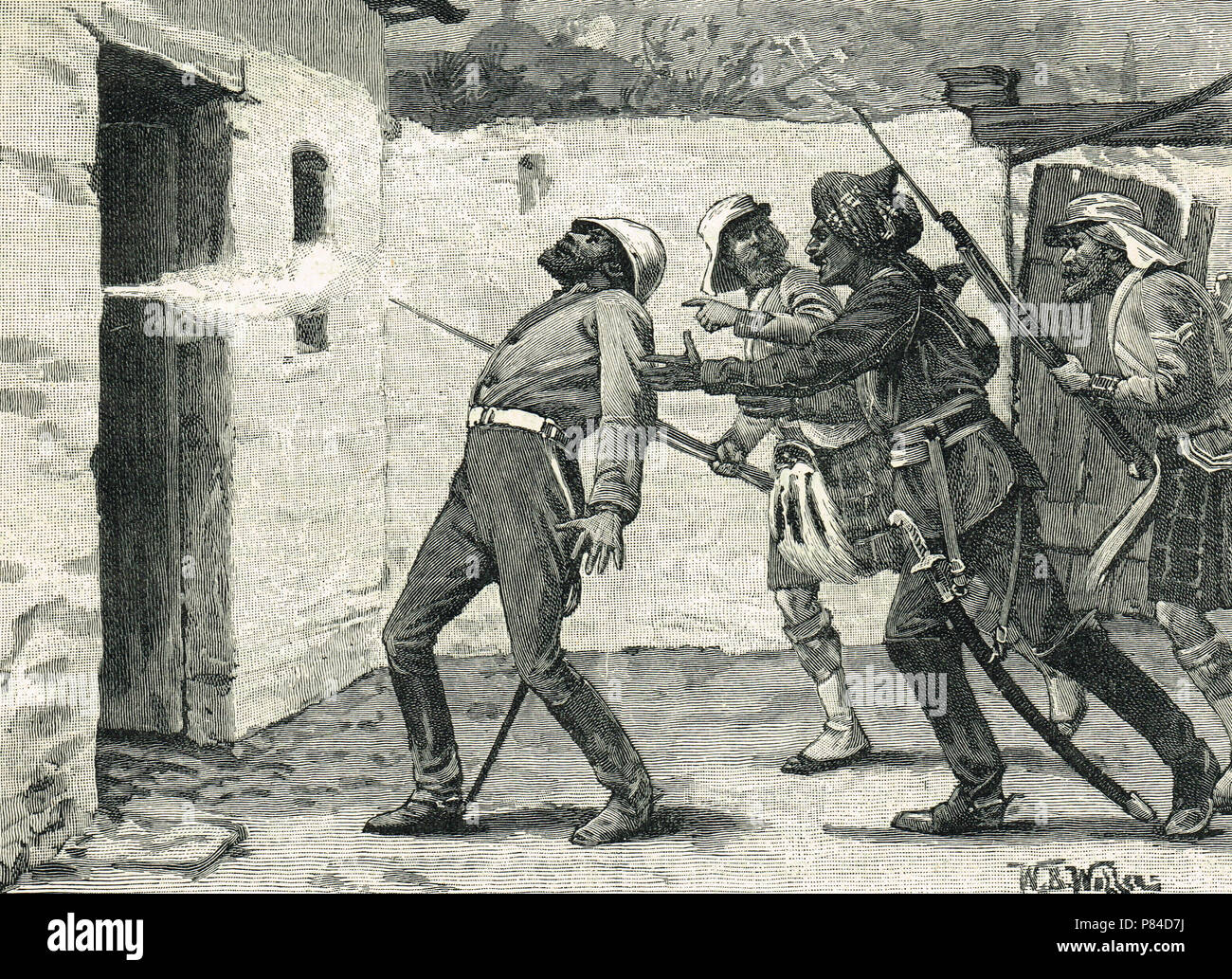 Death of Brevet Major Hodson, shot while storming the Begum's palace, (Begum Kothi) on the 11 March 1858. The advance on Lucknow, during the Indian Rebellion of 1857 Stock Photohttps://www.alamy.com/image-license-details/?v=1https://www.alamy.com/death-of-brevet-major-hodson-shot-while-storming-the-begums-palace-begum-kothi-on-the-11-march-1858-the-advance-on-lucknow-during-the-indian-rebellion-of-1857-image211539878.html
Death of Brevet Major Hodson, shot while storming the Begum's palace, (Begum Kothi) on the 11 March 1858. The advance on Lucknow, during the Indian Rebellion of 1857 Stock Photohttps://www.alamy.com/image-license-details/?v=1https://www.alamy.com/death-of-brevet-major-hodson-shot-while-storming-the-begums-palace-begum-kothi-on-the-11-march-1858-the-advance-on-lucknow-during-the-indian-rebellion-of-1857-image211539878.htmlRMP84D7J–Death of Brevet Major Hodson, shot while storming the Begum's palace, (Begum Kothi) on the 11 March 1858. The advance on Lucknow, during the Indian Rebellion of 1857
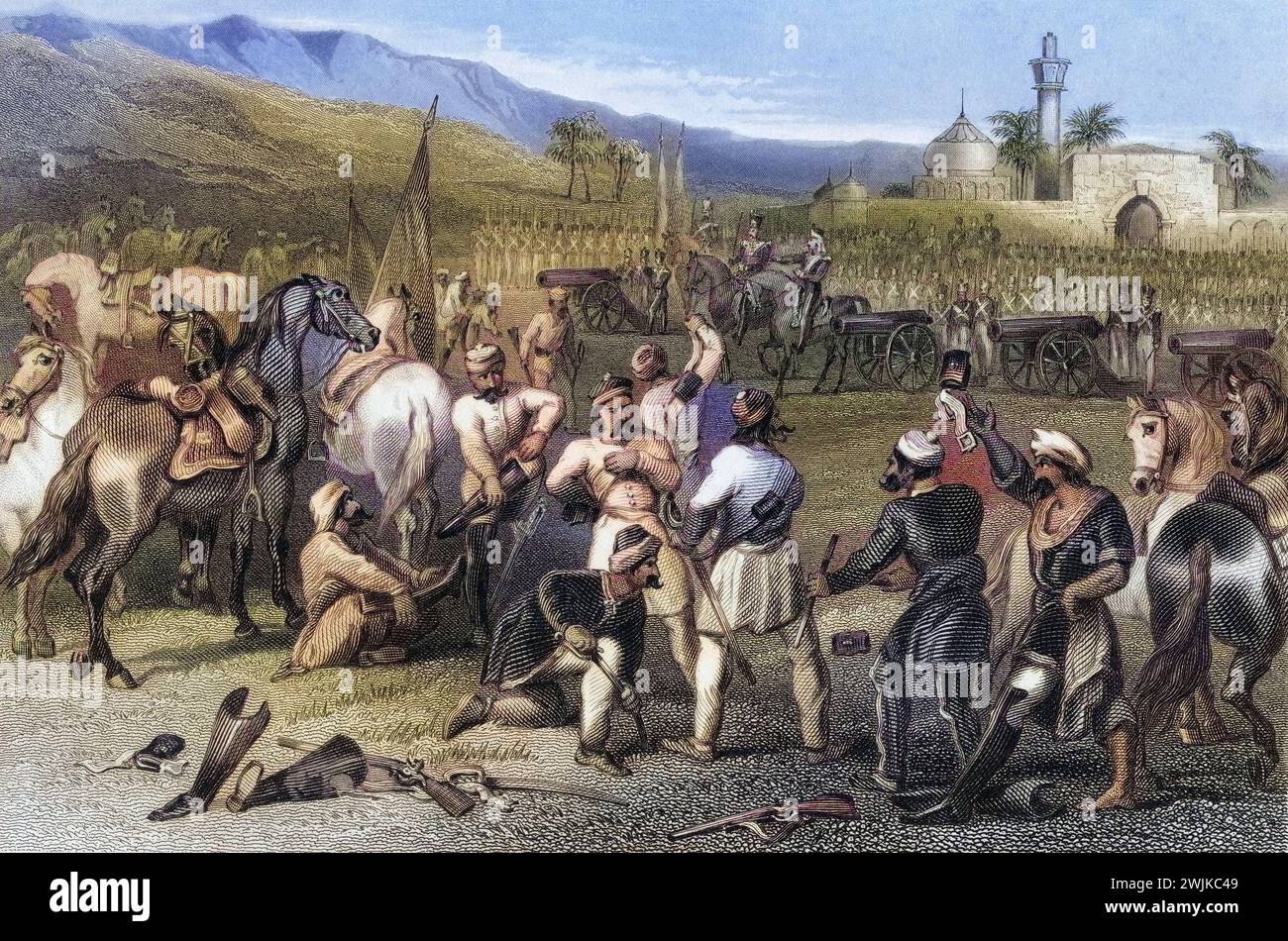 Entwaffnung der 11. irregulären Kavallerie in Berhampore1857 Aus der Geschichte des indischen Aufstands, veröffentlicht 1858, Indien, Historisch, digital restaurierte Reproduktion von einer Vorlage aus dem 19. Jahrhundert, Record date not stated Stock Photohttps://www.alamy.com/image-license-details/?v=1https://www.alamy.com/entwaffnung-der-11-irregulren-kavallerie-in-berhampore1857-aus-der-geschichte-des-indischen-aufstands-verffentlicht-1858-indien-historisch-digital-restaurierte-reproduktion-von-einer-vorlage-aus-dem-19-jahrhundert-record-date-not-stated-image596642937.html
Entwaffnung der 11. irregulären Kavallerie in Berhampore1857 Aus der Geschichte des indischen Aufstands, veröffentlicht 1858, Indien, Historisch, digital restaurierte Reproduktion von einer Vorlage aus dem 19. Jahrhundert, Record date not stated Stock Photohttps://www.alamy.com/image-license-details/?v=1https://www.alamy.com/entwaffnung-der-11-irregulren-kavallerie-in-berhampore1857-aus-der-geschichte-des-indischen-aufstands-verffentlicht-1858-indien-historisch-digital-restaurierte-reproduktion-von-einer-vorlage-aus-dem-19-jahrhundert-record-date-not-stated-image596642937.htmlRF2WJKC49–Entwaffnung der 11. irregulären Kavallerie in Berhampore1857 Aus der Geschichte des indischen Aufstands, veröffentlicht 1858, Indien, Historisch, digital restaurierte Reproduktion von einer Vorlage aus dem 19. Jahrhundert, Record date not stated
 . The Great war. Sudanese infantry.. Sikh infantry of the Indian Army. The Armies of the British Empire 277 the first half of the nineteenth century brought a steadyaugmentation in the army and the addition of horse artil-lery and irregular cavalry. At the outbreak of the Mutinyin 1857, the forces of the East India Company numbered386,000 men, of whom 38,000 were British. These forceswere taken over by the British government in 1858, andreorganization became indispensable. The native artillery,except a few mountain batteries, was abolished. The armythus taken over had been chiefly recruited wi Stock Photohttps://www.alamy.com/image-license-details/?v=1https://www.alamy.com/the-great-war-sudanese-infantry-sikh-infantry-of-the-indian-army-the-armies-of-the-british-empire-277-the-first-half-of-the-nineteenth-century-brought-a-steadyaugmentation-in-the-army-and-the-addition-of-horse-artil-lery-and-irregular-cavalry-at-the-outbreak-of-the-mutinyin-1857-the-forces-of-the-east-india-company-numbered386000-men-of-whom-38000-were-british-these-forceswere-taken-over-by-the-british-government-in-1858-andreorganization-became-indispensable-the-native-artilleryexcept-a-few-mountain-batteries-was-abolished-the-armythus-taken-over-had-been-chiefly-recruited-wi-image336939062.html
. The Great war. Sudanese infantry.. Sikh infantry of the Indian Army. The Armies of the British Empire 277 the first half of the nineteenth century brought a steadyaugmentation in the army and the addition of horse artil-lery and irregular cavalry. At the outbreak of the Mutinyin 1857, the forces of the East India Company numbered386,000 men, of whom 38,000 were British. These forceswere taken over by the British government in 1858, andreorganization became indispensable. The native artillery,except a few mountain batteries, was abolished. The armythus taken over had been chiefly recruited wi Stock Photohttps://www.alamy.com/image-license-details/?v=1https://www.alamy.com/the-great-war-sudanese-infantry-sikh-infantry-of-the-indian-army-the-armies-of-the-british-empire-277-the-first-half-of-the-nineteenth-century-brought-a-steadyaugmentation-in-the-army-and-the-addition-of-horse-artil-lery-and-irregular-cavalry-at-the-outbreak-of-the-mutinyin-1857-the-forces-of-the-east-india-company-numbered386000-men-of-whom-38000-were-british-these-forceswere-taken-over-by-the-british-government-in-1858-andreorganization-became-indispensable-the-native-artilleryexcept-a-few-mountain-batteries-was-abolished-the-armythus-taken-over-had-been-chiefly-recruited-wi-image336939062.htmlRM2AG4W5X–. The Great war. Sudanese infantry.. Sikh infantry of the Indian Army. The Armies of the British Empire 277 the first half of the nineteenth century brought a steadyaugmentation in the army and the addition of horse artil-lery and irregular cavalry. At the outbreak of the Mutinyin 1857, the forces of the East India Company numbered386,000 men, of whom 38,000 were British. These forceswere taken over by the British government in 1858, andreorganization became indispensable. The native artillery,except a few mountain batteries, was abolished. The armythus taken over had been chiefly recruited wi
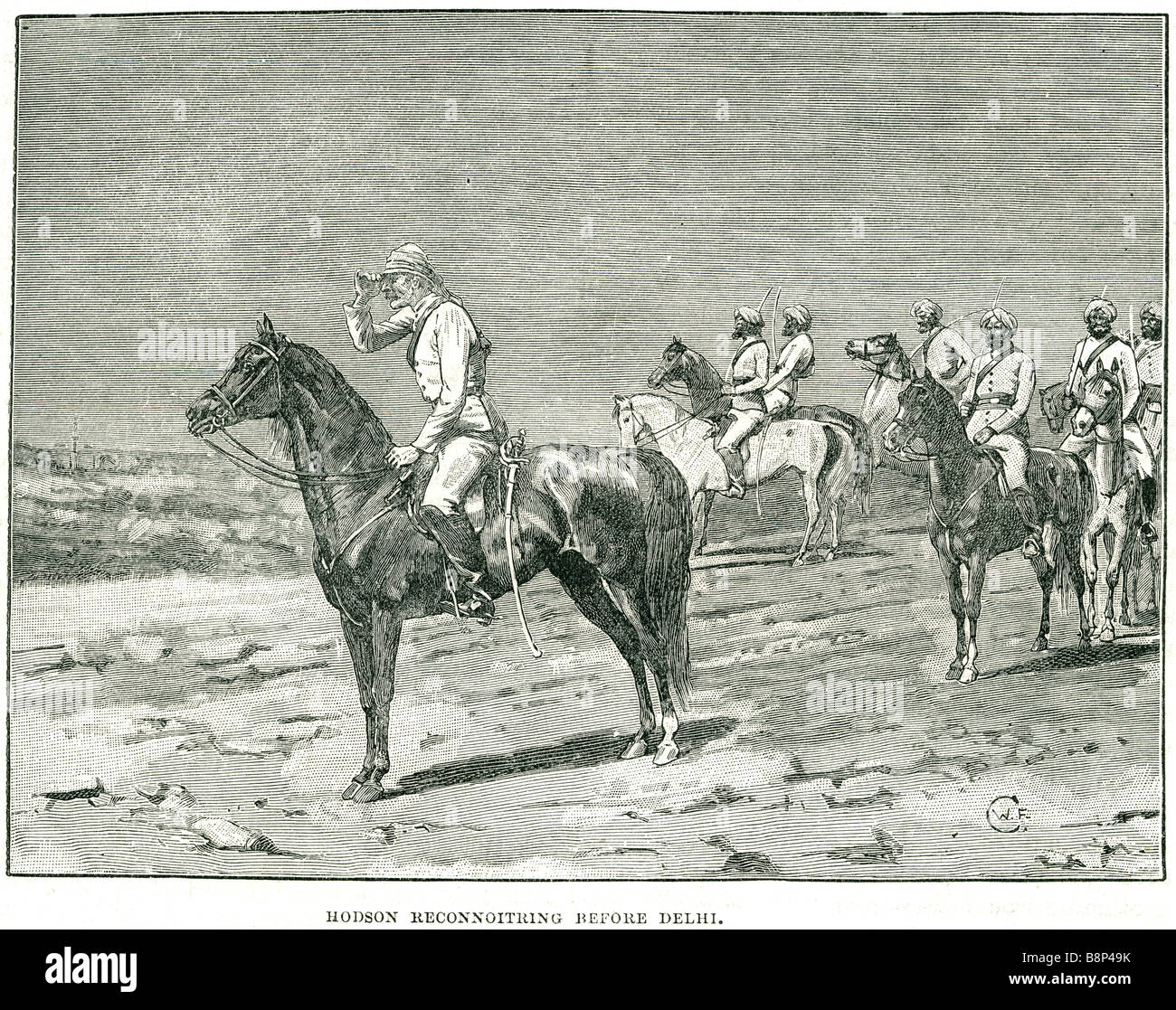 Brevet Major William Stephen Raikes Hodson 1857 reconnoitring before delhi Indian Rebellion of 1857 Stock Photohttps://www.alamy.com/image-license-details/?v=1https://www.alamy.com/stock-photo-brevet-major-william-stephen-raikes-hodson-1857-reconnoitring-before-22613967.html
Brevet Major William Stephen Raikes Hodson 1857 reconnoitring before delhi Indian Rebellion of 1857 Stock Photohttps://www.alamy.com/image-license-details/?v=1https://www.alamy.com/stock-photo-brevet-major-william-stephen-raikes-hodson-1857-reconnoitring-before-22613967.htmlRFB8P49K–Brevet Major William Stephen Raikes Hodson 1857 reconnoitring before delhi Indian Rebellion of 1857
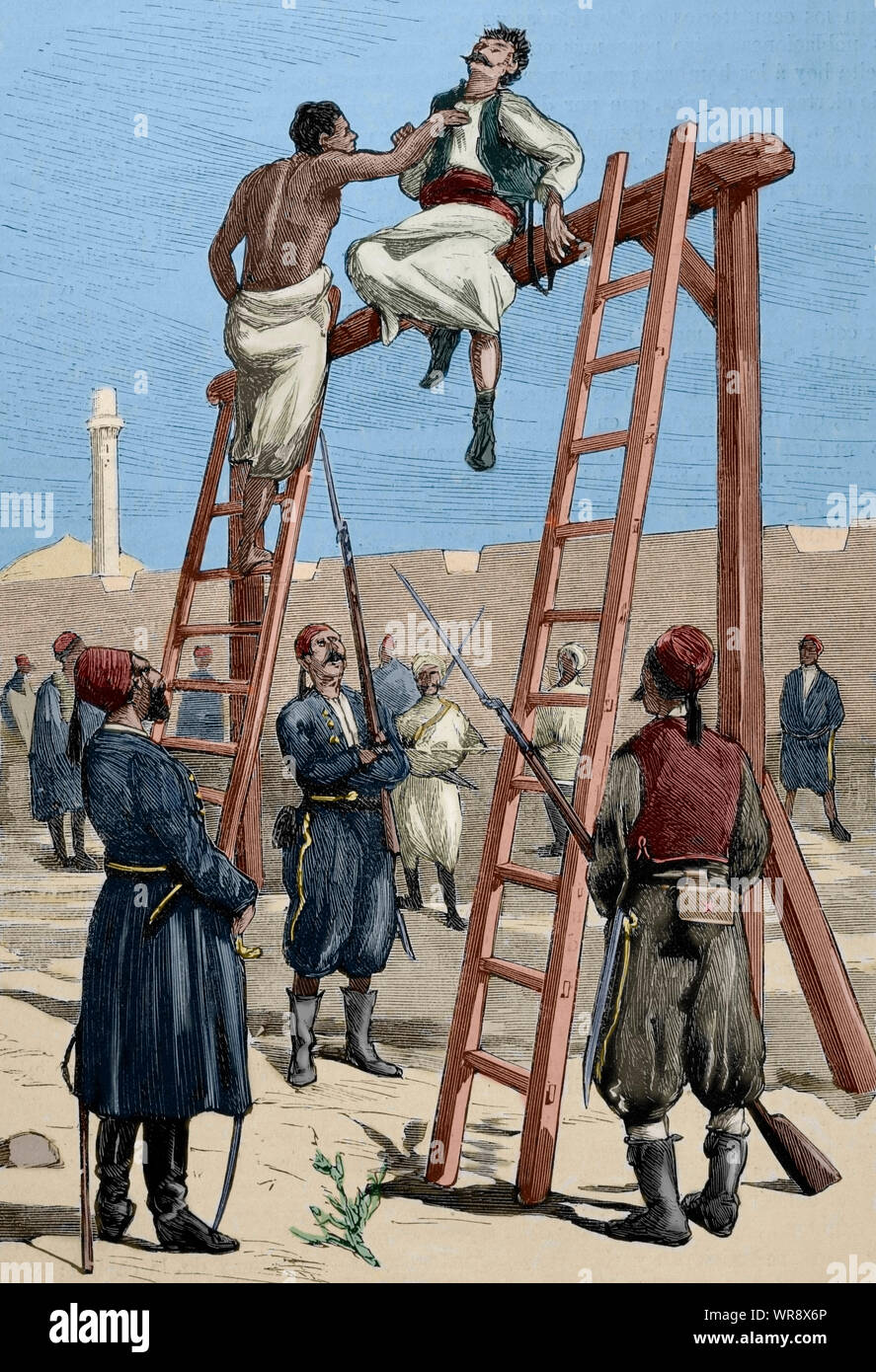 The Eastern Question. Serbian-Turkish Wars (1876-1878). Serbia declared war on the Ottoman Empire on June 30, 1876. The April Uprising of 1876 was experienced with strong repression by the Turkish authorities in Bulgaria. Execution of Bulgarian insurgents in the streets of Widdin by Bashi-bazouks and Circassians. The Bashi-bazouks were units of irregular volunteers, both infantry and cavalry, attached to the Turkish army but under independent officers. Engraving. La Ilustracion Española y Americana, August 22, 1876. Later colouration. Stock Photohttps://www.alamy.com/image-license-details/?v=1https://www.alamy.com/the-eastern-question-serbian-turkish-wars-1876-1878-serbia-declared-war-on-the-ottoman-empire-on-june-30-1876-the-april-uprising-of-1876-was-experienced-with-strong-repression-by-the-turkish-authorities-in-bulgaria-execution-of-bulgarian-insurgents-in-the-streets-of-widdin-by-bashi-bazouks-and-circassians-the-bashi-bazouks-were-units-of-irregular-volunteers-both-infantry-and-cavalry-attached-to-the-turkish-army-but-under-independent-officers-engraving-la-ilustracion-espaola-y-americana-august-22-1876-later-colouration-image272488798.html
The Eastern Question. Serbian-Turkish Wars (1876-1878). Serbia declared war on the Ottoman Empire on June 30, 1876. The April Uprising of 1876 was experienced with strong repression by the Turkish authorities in Bulgaria. Execution of Bulgarian insurgents in the streets of Widdin by Bashi-bazouks and Circassians. The Bashi-bazouks were units of irregular volunteers, both infantry and cavalry, attached to the Turkish army but under independent officers. Engraving. La Ilustracion Española y Americana, August 22, 1876. Later colouration. Stock Photohttps://www.alamy.com/image-license-details/?v=1https://www.alamy.com/the-eastern-question-serbian-turkish-wars-1876-1878-serbia-declared-war-on-the-ottoman-empire-on-june-30-1876-the-april-uprising-of-1876-was-experienced-with-strong-repression-by-the-turkish-authorities-in-bulgaria-execution-of-bulgarian-insurgents-in-the-streets-of-widdin-by-bashi-bazouks-and-circassians-the-bashi-bazouks-were-units-of-irregular-volunteers-both-infantry-and-cavalry-attached-to-the-turkish-army-but-under-independent-officers-engraving-la-ilustracion-espaola-y-americana-august-22-1876-later-colouration-image272488798.htmlRMWR8X6P–The Eastern Question. Serbian-Turkish Wars (1876-1878). Serbia declared war on the Ottoman Empire on June 30, 1876. The April Uprising of 1876 was experienced with strong repression by the Turkish authorities in Bulgaria. Execution of Bulgarian insurgents in the streets of Widdin by Bashi-bazouks and Circassians. The Bashi-bazouks were units of irregular volunteers, both infantry and cavalry, attached to the Turkish army but under independent officers. Engraving. La Ilustracion Española y Americana, August 22, 1876. Later colouration.
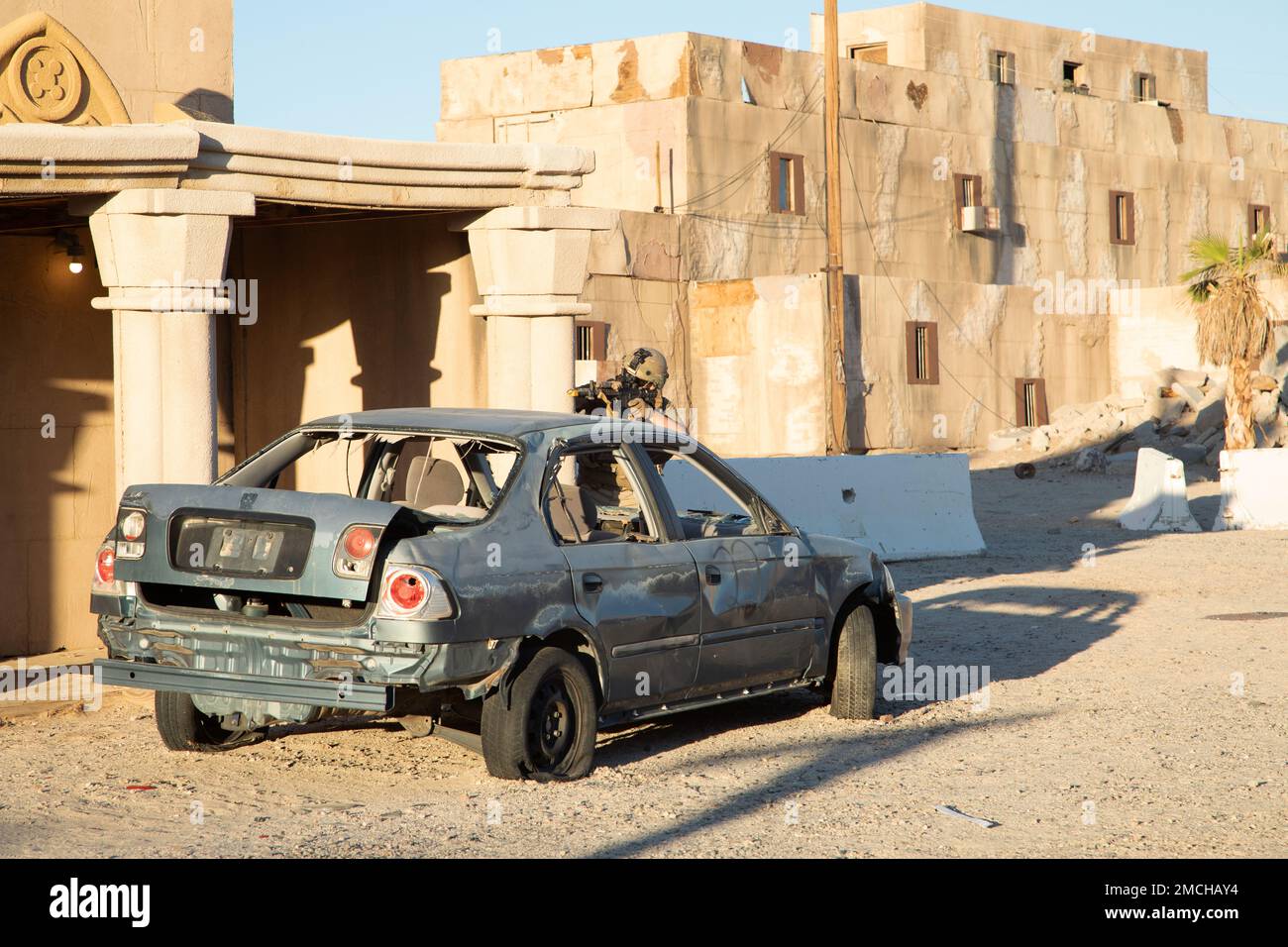 U.S. Army Soldier from the 11th Armored Cavalry Regiment takes aim at Rotational Training Unit Troops (RTU) July 2, 2022, in the city of Razish, National Training Center (NTC), Fort Irwin, Calif. The 11th ACR Soldiers, who act as the opposing regular and irregular forces at NTC, hone their battle skills as they challenge the RTU to overcome a wide range of weaponry and simulated attacks at the U.S. Army’s National Training Center. Stock Photohttps://www.alamy.com/image-license-details/?v=1https://www.alamy.com/us-army-soldier-from-the-11th-armored-cavalry-regiment-takes-aim-at-rotational-training-unit-troops-rtu-july-2-2022-in-the-city-of-razish-national-training-center-ntc-fort-irwin-calif-the-11th-acr-soldiers-who-act-as-the-opposing-regular-and-irregular-forces-at-ntc-hone-their-battle-skills-as-they-challenge-the-rtu-to-overcome-a-wide-range-of-weaponry-and-simulated-attacks-at-the-us-armys-national-training-center-image506858328.html
U.S. Army Soldier from the 11th Armored Cavalry Regiment takes aim at Rotational Training Unit Troops (RTU) July 2, 2022, in the city of Razish, National Training Center (NTC), Fort Irwin, Calif. The 11th ACR Soldiers, who act as the opposing regular and irregular forces at NTC, hone their battle skills as they challenge the RTU to overcome a wide range of weaponry and simulated attacks at the U.S. Army’s National Training Center. Stock Photohttps://www.alamy.com/image-license-details/?v=1https://www.alamy.com/us-army-soldier-from-the-11th-armored-cavalry-regiment-takes-aim-at-rotational-training-unit-troops-rtu-july-2-2022-in-the-city-of-razish-national-training-center-ntc-fort-irwin-calif-the-11th-acr-soldiers-who-act-as-the-opposing-regular-and-irregular-forces-at-ntc-hone-their-battle-skills-as-they-challenge-the-rtu-to-overcome-a-wide-range-of-weaponry-and-simulated-attacks-at-the-us-armys-national-training-center-image506858328.htmlRM2MCHAY4–U.S. Army Soldier from the 11th Armored Cavalry Regiment takes aim at Rotational Training Unit Troops (RTU) July 2, 2022, in the city of Razish, National Training Center (NTC), Fort Irwin, Calif. The 11th ACR Soldiers, who act as the opposing regular and irregular forces at NTC, hone their battle skills as they challenge the RTU to overcome a wide range of weaponry and simulated attacks at the U.S. Army’s National Training Center.
 WELD 1862 in India pg222 (051 Commandant of Irregular Cavalry receiving the Morning Report) Stock Photohttps://www.alamy.com/image-license-details/?v=1https://www.alamy.com/stock-photo-weld-1862-in-india-pg222-051-commandant-of-irregular-cavalry-receiving-74228205.html
WELD 1862 in India pg222 (051 Commandant of Irregular Cavalry receiving the Morning Report) Stock Photohttps://www.alamy.com/image-license-details/?v=1https://www.alamy.com/stock-photo-weld-1862-in-india-pg222-051-commandant-of-irregular-cavalry-receiving-74228205.htmlRME8NAR9–WELD 1862 in India pg222 (051 Commandant of Irregular Cavalry receiving the Morning Report)
 Entwaffnung der 11. irregulären Kavallerie in Berhampore1857 Aus der Geschichte des indischen Aufstands, veröffentlicht 1858, Indien, Historisch, digi Stock Photohttps://www.alamy.com/image-license-details/?v=1https://www.alamy.com/entwaffnung-der-11-irregulren-kavallerie-in-berhampore1857-aus-der-geschichte-des-indischen-aufstands-verffentlicht-1858-indien-historisch-digi-image596490261.html
Entwaffnung der 11. irregulären Kavallerie in Berhampore1857 Aus der Geschichte des indischen Aufstands, veröffentlicht 1858, Indien, Historisch, digi Stock Photohttps://www.alamy.com/image-license-details/?v=1https://www.alamy.com/entwaffnung-der-11-irregulren-kavallerie-in-berhampore1857-aus-der-geschichte-des-indischen-aufstands-verffentlicht-1858-indien-historisch-digi-image596490261.htmlRM2WJCDBH–Entwaffnung der 11. irregulären Kavallerie in Berhampore1857 Aus der Geschichte des indischen Aufstands, veröffentlicht 1858, Indien, Historisch, digi
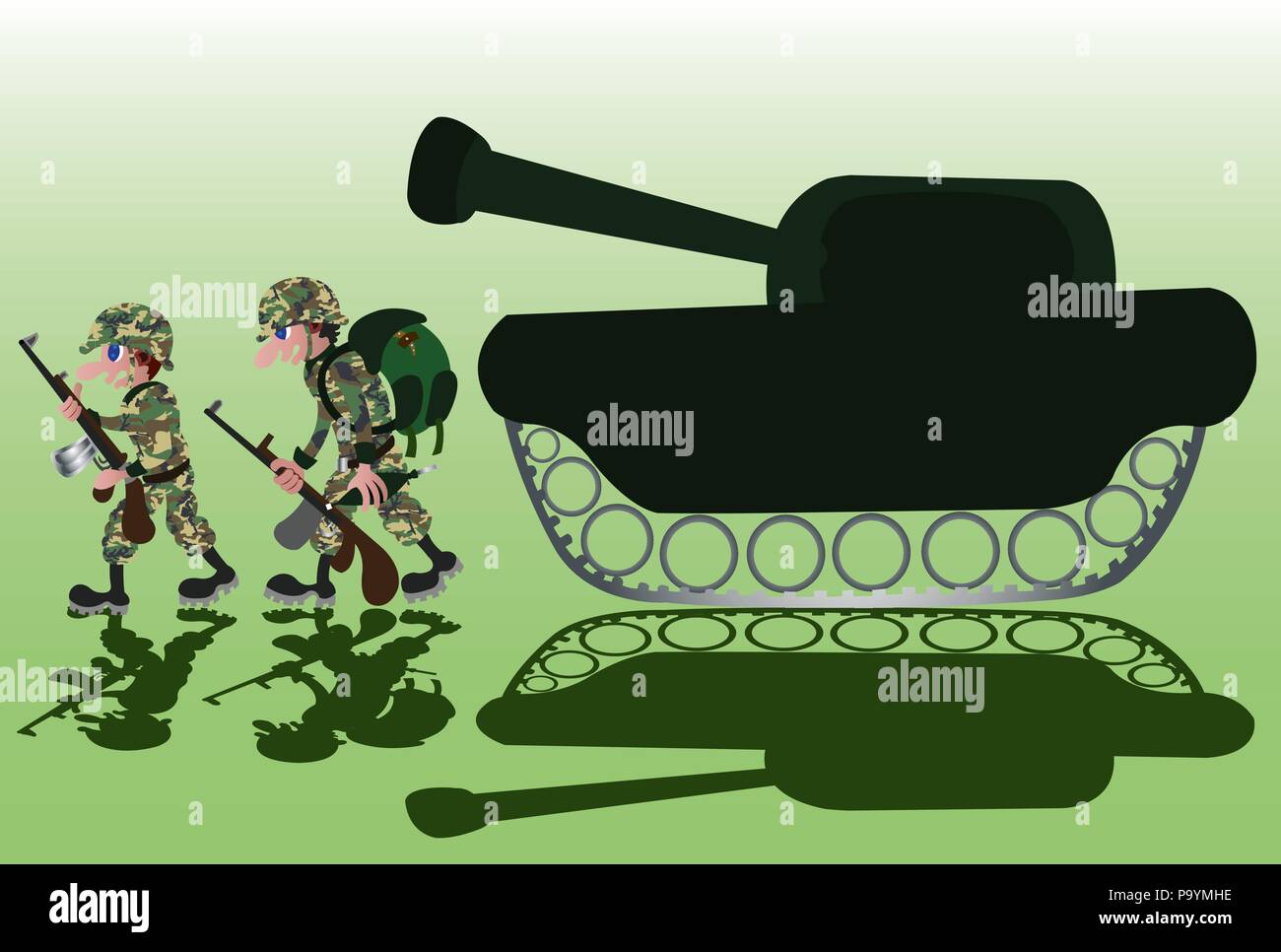 A bunch of soldiers marching to the battlefield Stock Vectorhttps://www.alamy.com/image-license-details/?v=1https://www.alamy.com/a-bunch-of-soldiers-marching-to-the-battlefield-image212665194.html
A bunch of soldiers marching to the battlefield Stock Vectorhttps://www.alamy.com/image-license-details/?v=1https://www.alamy.com/a-bunch-of-soldiers-marching-to-the-battlefield-image212665194.htmlRFP9YMHE–A bunch of soldiers marching to the battlefield
 . English: 'Disarming the 11th Irregular Cavalry at Berhampore,' a steel engraving from 'History of the Indian Mutiny', 1858; click on the image for a very large scan . 1858. Vintage Print 165 Disarming the 11th Irregular Cavalry at Berhampore Stock Photohttps://www.alamy.com/image-license-details/?v=1https://www.alamy.com/english-disarming-the-11th-irregular-cavalry-at-berhampore-a-steel-engraving-from-history-of-the-indian-mutiny-1858-click-on-the-image-for-a-very-large-scan-1858-vintage-print-165-disarming-the-11th-irregular-cavalry-at-berhampore-image188252803.html
. English: 'Disarming the 11th Irregular Cavalry at Berhampore,' a steel engraving from 'History of the Indian Mutiny', 1858; click on the image for a very large scan . 1858. Vintage Print 165 Disarming the 11th Irregular Cavalry at Berhampore Stock Photohttps://www.alamy.com/image-license-details/?v=1https://www.alamy.com/english-disarming-the-11th-irregular-cavalry-at-berhampore-a-steel-engraving-from-history-of-the-indian-mutiny-1858-click-on-the-image-for-a-very-large-scan-1858-vintage-print-165-disarming-the-11th-irregular-cavalry-at-berhampore-image188252803.htmlRMMX7JAB–. English: 'Disarming the 11th Irregular Cavalry at Berhampore,' a steel engraving from 'History of the Indian Mutiny', 1858; click on the image for a very large scan . 1858. Vintage Print 165 Disarming the 11th Irregular Cavalry at Berhampore
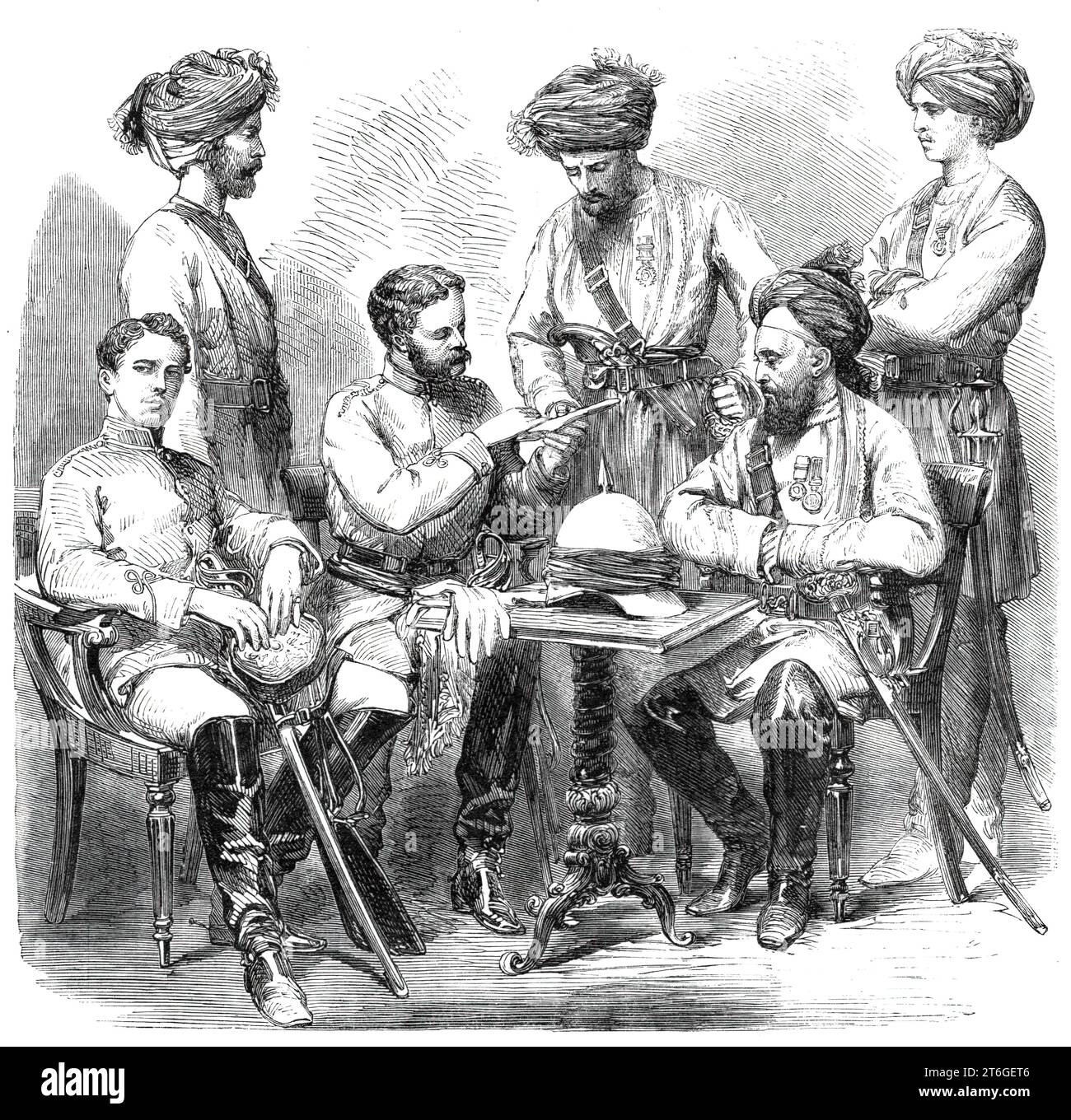 British and native officers of Fane's Horse serving in China, 1860. 'These corps of irregular cavalry occupy a notable position in the expeditionary army to China. They form an admirable exemplar of that system of training the natives of India for the military service of the Government which has been found to answer so well...Commencing at the left hand, we have Lieutenant Carnac, of the 1st Bengal Cavalry, attached to Fane's Horse. Next to him is Nin Sing, an Affghan Subidar of great proportions. The third is Lieutenant Cattley, third Commandant, honourably mentioned in Sir Hope Grant's despa Stock Photohttps://www.alamy.com/image-license-details/?v=1https://www.alamy.com/british-and-native-officers-of-fanes-horse-serving-in-china-1860-these-corps-of-irregular-cavalry-occupy-a-notable-position-in-the-expeditionary-army-to-china-they-form-an-admirable-exemplar-of-that-system-of-training-the-natives-of-india-for-the-military-service-of-the-government-which-has-been-found-to-answer-so-wellcommencing-at-the-left-hand-we-have-lieutenant-carnac-of-the-1st-bengal-cavalry-attached-to-fanes-horse-next-to-him-is-nin-sing-an-affghan-subidar-of-great-proportions-the-third-is-lieutenant-cattley-third-commandant-honourably-mentioned-in-sir-hope-grants-despa-image571992966.html
British and native officers of Fane's Horse serving in China, 1860. 'These corps of irregular cavalry occupy a notable position in the expeditionary army to China. They form an admirable exemplar of that system of training the natives of India for the military service of the Government which has been found to answer so well...Commencing at the left hand, we have Lieutenant Carnac, of the 1st Bengal Cavalry, attached to Fane's Horse. Next to him is Nin Sing, an Affghan Subidar of great proportions. The third is Lieutenant Cattley, third Commandant, honourably mentioned in Sir Hope Grant's despa Stock Photohttps://www.alamy.com/image-license-details/?v=1https://www.alamy.com/british-and-native-officers-of-fanes-horse-serving-in-china-1860-these-corps-of-irregular-cavalry-occupy-a-notable-position-in-the-expeditionary-army-to-china-they-form-an-admirable-exemplar-of-that-system-of-training-the-natives-of-india-for-the-military-service-of-the-government-which-has-been-found-to-answer-so-wellcommencing-at-the-left-hand-we-have-lieutenant-carnac-of-the-1st-bengal-cavalry-attached-to-fanes-horse-next-to-him-is-nin-sing-an-affghan-subidar-of-great-proportions-the-third-is-lieutenant-cattley-third-commandant-honourably-mentioned-in-sir-hope-grants-despa-image571992966.htmlRM2T6GET6–British and native officers of Fane's Horse serving in China, 1860. 'These corps of irregular cavalry occupy a notable position in the expeditionary army to China. They form an admirable exemplar of that system of training the natives of India for the military service of the Government which has been found to answer so well...Commencing at the left hand, we have Lieutenant Carnac, of the 1st Bengal Cavalry, attached to Fane's Horse. Next to him is Nin Sing, an Affghan Subidar of great proportions. The third is Lieutenant Cattley, third Commandant, honourably mentioned in Sir Hope Grant's despa
 The Hamidiye corps, full official name Hamidiye hafif süvari alayları, Hamidiye light cavalry regiments, were well-armed, irregular Sunni Kurdish, Turkish, Turkmen and Yörük, also Arab cavalry formations that operated in the eastern provinces of the Ottoman Empire. Established by and named after Sultan Abdul Hamid II in 1891, they were intended to be modeled after the Russian Cossacks and were supposedly tasked to patrol the Russo-Ottoman frontier. However, the Hamidiye were more often used by the Ottoman authorities to harass and assault Armenians living in Turkish Armenia. A major role in Stock Photohttps://www.alamy.com/image-license-details/?v=1https://www.alamy.com/the-hamidiye-corps-full-official-name-hamidiye-hafif-svari-alaylar-hamidiye-light-cavalry-regiments-were-well-armed-irregular-sunni-kurdish-turkish-turkmen-and-yrk-also-arab-cavalry-formations-that-operated-in-the-eastern-provinces-of-the-ottoman-empire-established-by-and-named-after-sultan-abdul-hamid-ii-in-1891-they-were-intended-to-be-modeled-after-the-russian-cossacks-and-were-supposedly-tasked-to-patrol-the-russo-ottoman-frontier-however-the-hamidiye-were-more-often-used-by-the-ottoman-authorities-to-harass-and-assault-armenians-living-in-turkish-armenia-a-major-role-in-image344266188.html
The Hamidiye corps, full official name Hamidiye hafif süvari alayları, Hamidiye light cavalry regiments, were well-armed, irregular Sunni Kurdish, Turkish, Turkmen and Yörük, also Arab cavalry formations that operated in the eastern provinces of the Ottoman Empire. Established by and named after Sultan Abdul Hamid II in 1891, they were intended to be modeled after the Russian Cossacks and were supposedly tasked to patrol the Russo-Ottoman frontier. However, the Hamidiye were more often used by the Ottoman authorities to harass and assault Armenians living in Turkish Armenia. A major role in Stock Photohttps://www.alamy.com/image-license-details/?v=1https://www.alamy.com/the-hamidiye-corps-full-official-name-hamidiye-hafif-svari-alaylar-hamidiye-light-cavalry-regiments-were-well-armed-irregular-sunni-kurdish-turkish-turkmen-and-yrk-also-arab-cavalry-formations-that-operated-in-the-eastern-provinces-of-the-ottoman-empire-established-by-and-named-after-sultan-abdul-hamid-ii-in-1891-they-were-intended-to-be-modeled-after-the-russian-cossacks-and-were-supposedly-tasked-to-patrol-the-russo-ottoman-frontier-however-the-hamidiye-were-more-often-used-by-the-ottoman-authorities-to-harass-and-assault-armenians-living-in-turkish-armenia-a-major-role-in-image344266188.htmlRM2B02K10–The Hamidiye corps, full official name Hamidiye hafif süvari alayları, Hamidiye light cavalry regiments, were well-armed, irregular Sunni Kurdish, Turkish, Turkmen and Yörük, also Arab cavalry formations that operated in the eastern provinces of the Ottoman Empire. Established by and named after Sultan Abdul Hamid II in 1891, they were intended to be modeled after the Russian Cossacks and were supposedly tasked to patrol the Russo-Ottoman frontier. However, the Hamidiye were more often used by the Ottoman authorities to harass and assault Armenians living in Turkish Armenia. A major role in
 India: 'Kala with Sabre Drawn'. Watercolour painting, Delhi, c.1815-1816. East India Company painting commissioned by the brothers James and William Fraser in around 1815. This one shows William Fraser's servant, Kala, with his sabre drawn. Stock Photohttps://www.alamy.com/image-license-details/?v=1https://www.alamy.com/india-kala-with-sabre-drawn-watercolour-painting-delhi-c1815-1816-east-india-company-painting-commissioned-by-the-brothers-james-and-william-fraser-in-around-1815-this-one-shows-william-frasers-servant-kala-with-his-sabre-drawn-image344232289.html
India: 'Kala with Sabre Drawn'. Watercolour painting, Delhi, c.1815-1816. East India Company painting commissioned by the brothers James and William Fraser in around 1815. This one shows William Fraser's servant, Kala, with his sabre drawn. Stock Photohttps://www.alamy.com/image-license-details/?v=1https://www.alamy.com/india-kala-with-sabre-drawn-watercolour-painting-delhi-c1815-1816-east-india-company-painting-commissioned-by-the-brothers-james-and-william-fraser-in-around-1815-this-one-shows-william-frasers-servant-kala-with-his-sabre-drawn-image344232289.htmlRM2B013P9–India: 'Kala with Sabre Drawn'. Watercolour painting, Delhi, c.1815-1816. East India Company painting commissioned by the brothers James and William Fraser in around 1815. This one shows William Fraser's servant, Kala, with his sabre drawn.
 13th Duke of Connaughts's Regiment of Bengal Lancer, display team Stock Photohttps://www.alamy.com/image-license-details/?v=1https://www.alamy.com/stock-photo-13th-duke-of-connaughtss-regiment-of-bengal-lancer-display-team-72011630.html
13th Duke of Connaughts's Regiment of Bengal Lancer, display team Stock Photohttps://www.alamy.com/image-license-details/?v=1https://www.alamy.com/stock-photo-13th-duke-of-connaughtss-regiment-of-bengal-lancer-display-team-72011630.htmlRME54BFX–13th Duke of Connaughts's Regiment of Bengal Lancer, display team
 Troopers from Dealer Troop, 1st Squadron, 11th Armored Cavalry Regiment, advances against the defense of the 1st Stryker Brigade Combat Team, 1st Armored Division, Fort Bliss, Texas, during Rotation 17-02 at the National Training Center, Nov. 4, 2016. The purpose of this phase of the rotation was to test the 1st SBCT’s ability to stage a deliberate defense against a near-peer force while also presenting them with an irregular threat in the area to be defended. Stock Photohttps://www.alamy.com/image-license-details/?v=1https://www.alamy.com/troopers-from-dealer-troop-1st-squadron-11th-armored-cavalry-regiment-advances-against-the-defense-of-the-1st-stryker-brigade-combat-team-1st-armored-division-fort-bliss-texas-during-rotation-17-02-at-the-national-training-center-nov-4-2016-the-purpose-of-this-phase-of-the-rotation-was-to-test-the-1st-sbcts-ability-to-stage-a-deliberate-defense-against-a-near-peer-force-while-also-presenting-them-with-an-irregular-threat-in-the-area-to-be-defended-image235001184.html
Troopers from Dealer Troop, 1st Squadron, 11th Armored Cavalry Regiment, advances against the defense of the 1st Stryker Brigade Combat Team, 1st Armored Division, Fort Bliss, Texas, during Rotation 17-02 at the National Training Center, Nov. 4, 2016. The purpose of this phase of the rotation was to test the 1st SBCT’s ability to stage a deliberate defense against a near-peer force while also presenting them with an irregular threat in the area to be defended. Stock Photohttps://www.alamy.com/image-license-details/?v=1https://www.alamy.com/troopers-from-dealer-troop-1st-squadron-11th-armored-cavalry-regiment-advances-against-the-defense-of-the-1st-stryker-brigade-combat-team-1st-armored-division-fort-bliss-texas-during-rotation-17-02-at-the-national-training-center-nov-4-2016-the-purpose-of-this-phase-of-the-rotation-was-to-test-the-1st-sbcts-ability-to-stage-a-deliberate-defense-against-a-near-peer-force-while-also-presenting-them-with-an-irregular-threat-in-the-area-to-be-defended-image235001184.htmlRMRJ96BC–Troopers from Dealer Troop, 1st Squadron, 11th Armored Cavalry Regiment, advances against the defense of the 1st Stryker Brigade Combat Team, 1st Armored Division, Fort Bliss, Texas, during Rotation 17-02 at the National Training Center, Nov. 4, 2016. The purpose of this phase of the rotation was to test the 1st SBCT’s ability to stage a deliberate defense against a near-peer force while also presenting them with an irregular threat in the area to be defended.
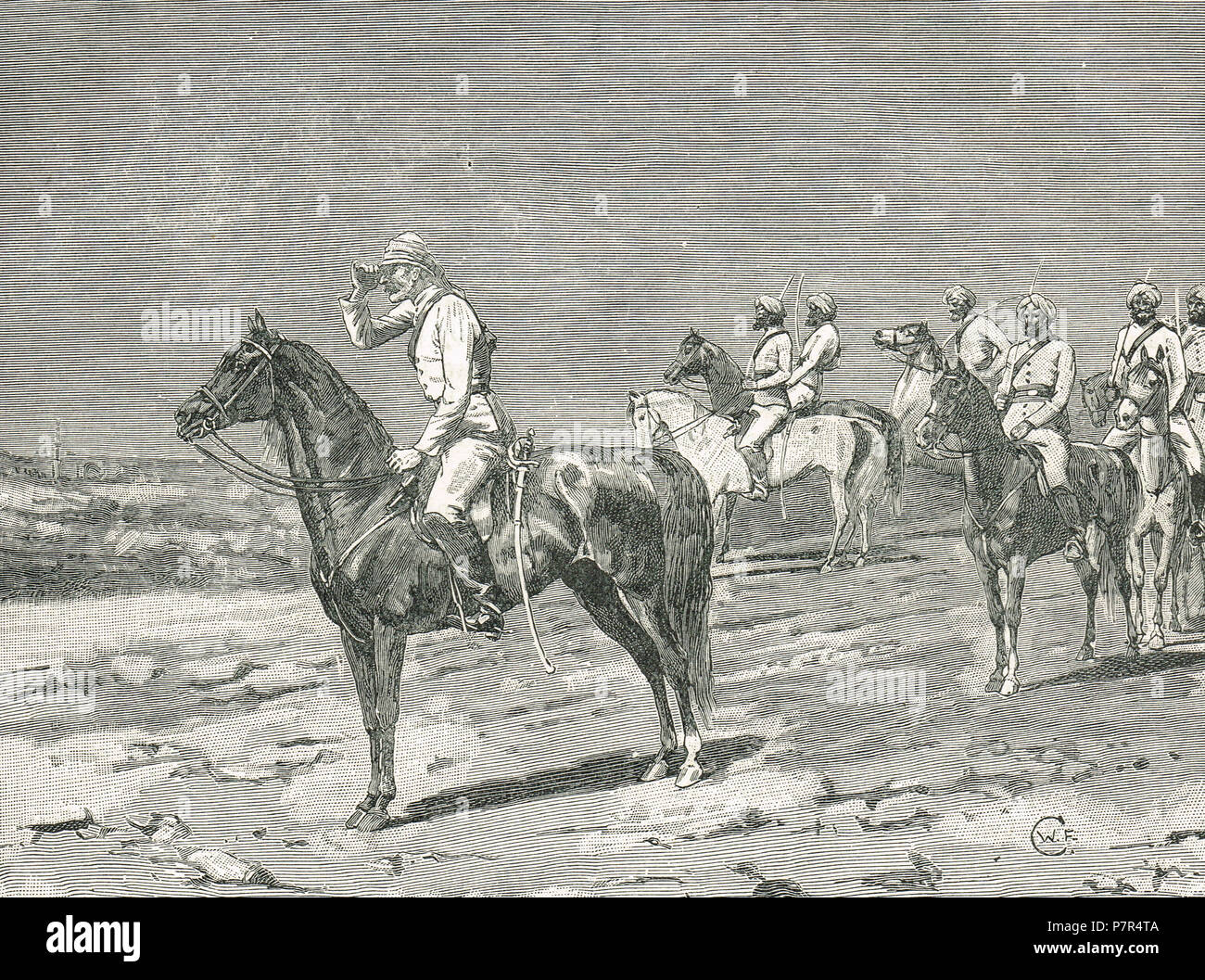 Brevet Major Hodson reconnoitring before Delhi, India, 7 June 1857. The day before The Battle of Badli-ki-Serai of 8 June 1857, during the Indian Rebellion of 1857 Stock Photohttps://www.alamy.com/image-license-details/?v=1https://www.alamy.com/brevet-major-hodson-reconnoitring-before-delhi-india-7-june-1857-the-day-before-the-battle-of-badli-ki-serai-of-8-june-1857-during-the-indian-rebellion-of-1857-image211335722.html
Brevet Major Hodson reconnoitring before Delhi, India, 7 June 1857. The day before The Battle of Badli-ki-Serai of 8 June 1857, during the Indian Rebellion of 1857 Stock Photohttps://www.alamy.com/image-license-details/?v=1https://www.alamy.com/brevet-major-hodson-reconnoitring-before-delhi-india-7-june-1857-the-day-before-the-battle-of-badli-ki-serai-of-8-june-1857-during-the-indian-rebellion-of-1857-image211335722.htmlRMP7R4TA–Brevet Major Hodson reconnoitring before Delhi, India, 7 June 1857. The day before The Battle of Badli-ki-Serai of 8 June 1857, during the Indian Rebellion of 1857
 Narrative of a journey through Greece in 1830 : with remarks upon the actual state of the naval and military power of the Ottoman empire . them on a similar occasion, they fell thevictims of destiny. 322 PROCEED TOWARDS THE CHAPTER XI. We proceed towards Megaspileon.—Arrive at the Convent.—Remarks of the Monks upon religion.—The Church.—Picture of the Holy Virgin painted by St. Luke.—Originof the Monastery.—Wealth of the Priests.—The Library.—Ibrahim repulsed from Megaspileon.—Vostizza.—Lepanto.—Castles of the Morea and Roumelia.—Patras.—HadgiChristos irregular Cavalry.—Society at Patras.—Emba Stock Photohttps://www.alamy.com/image-license-details/?v=1https://www.alamy.com/narrative-of-a-journey-through-greece-in-1830-with-remarks-upon-the-actual-state-of-the-naval-and-military-power-of-the-ottoman-empire-them-on-a-similar-occasion-they-fell-thevictims-of-destiny-322-proceed-towards-the-chapter-xi-we-proceed-towards-megaspileonarrive-at-the-conventremarks-of-the-monks-upon-religionthe-churchpicture-of-the-holy-virgin-painted-by-st-lukeoriginof-the-monasterywealth-of-the-prieststhe-libraryibrahim-repulsed-from-megaspileonvostizzalepantocastles-of-the-morea-and-roumeliapatrashadgichristos-irregular-cavalrysociety-at-patrasemba-image343130475.html
Narrative of a journey through Greece in 1830 : with remarks upon the actual state of the naval and military power of the Ottoman empire . them on a similar occasion, they fell thevictims of destiny. 322 PROCEED TOWARDS THE CHAPTER XI. We proceed towards Megaspileon.—Arrive at the Convent.—Remarks of the Monks upon religion.—The Church.—Picture of the Holy Virgin painted by St. Luke.—Originof the Monastery.—Wealth of the Priests.—The Library.—Ibrahim repulsed from Megaspileon.—Vostizza.—Lepanto.—Castles of the Morea and Roumelia.—Patras.—HadgiChristos irregular Cavalry.—Society at Patras.—Emba Stock Photohttps://www.alamy.com/image-license-details/?v=1https://www.alamy.com/narrative-of-a-journey-through-greece-in-1830-with-remarks-upon-the-actual-state-of-the-naval-and-military-power-of-the-ottoman-empire-them-on-a-similar-occasion-they-fell-thevictims-of-destiny-322-proceed-towards-the-chapter-xi-we-proceed-towards-megaspileonarrive-at-the-conventremarks-of-the-monks-upon-religionthe-churchpicture-of-the-holy-virgin-painted-by-st-lukeoriginof-the-monasterywealth-of-the-prieststhe-libraryibrahim-repulsed-from-megaspileonvostizzalepantocastles-of-the-morea-and-roumeliapatrashadgichristos-irregular-cavalrysociety-at-patrasemba-image343130475.htmlRM2AX6XBR–Narrative of a journey through Greece in 1830 : with remarks upon the actual state of the naval and military power of the Ottoman empire . them on a similar occasion, they fell thevictims of destiny. 322 PROCEED TOWARDS THE CHAPTER XI. We proceed towards Megaspileon.—Arrive at the Convent.—Remarks of the Monks upon religion.—The Church.—Picture of the Holy Virgin painted by St. Luke.—Originof the Monastery.—Wealth of the Priests.—The Library.—Ibrahim repulsed from Megaspileon.—Vostizza.—Lepanto.—Castles of the Morea and Roumelia.—Patras.—HadgiChristos irregular Cavalry.—Society at Patras.—Emba